Mineralogy Exam 1
1/84
Earn XP
Description and Tags
Unknown Hand Samples
Name | Mastery | Learn | Test | Matching | Spaced |
|---|
No study sessions yet.
85 Terms
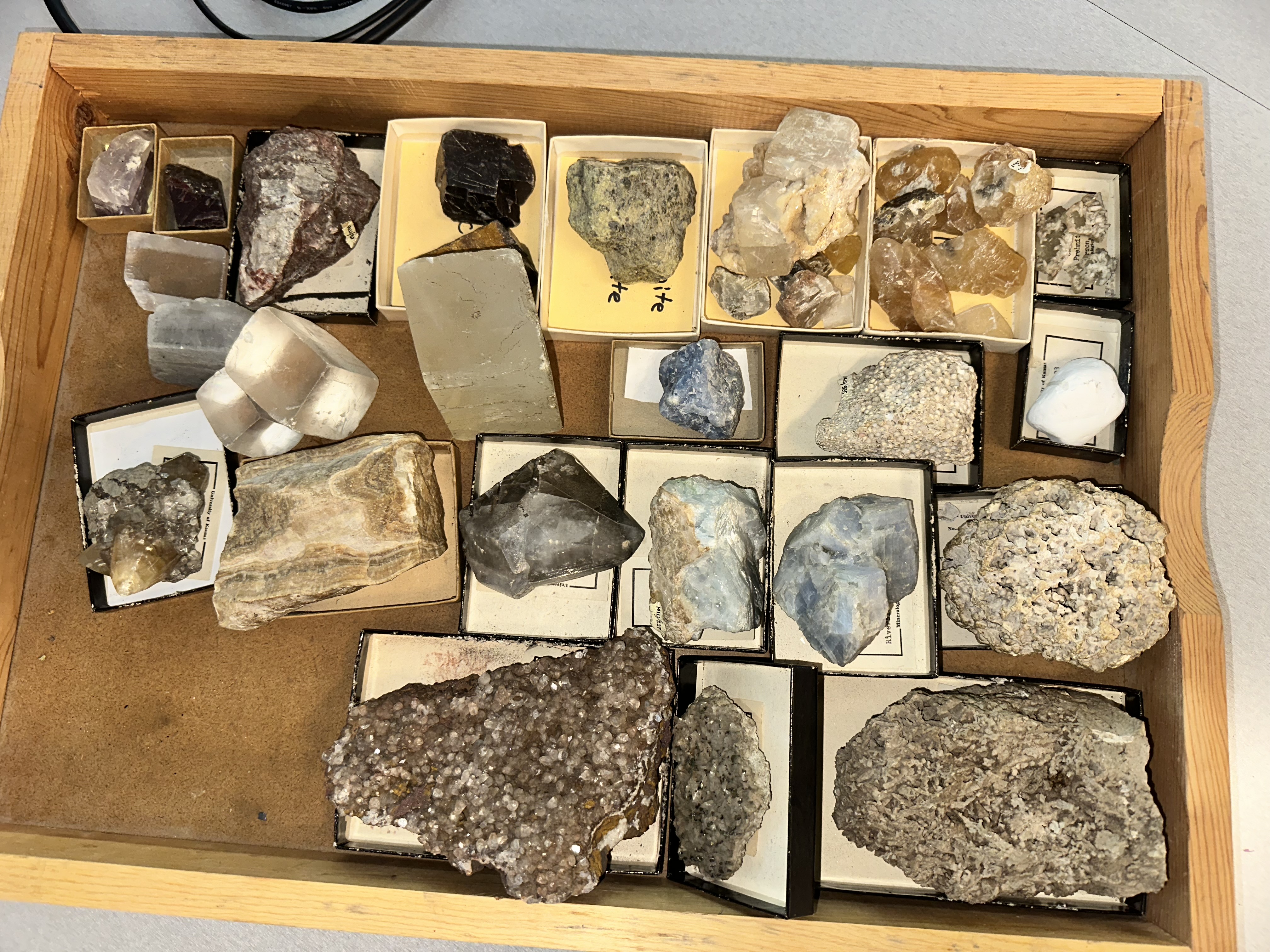
Hardness: 3
Luster: Vitreous
Color/Streak: Colorless; white streak
Cleavage: Perfect rhombohedral
Special: Effervesces with HCl
calcite
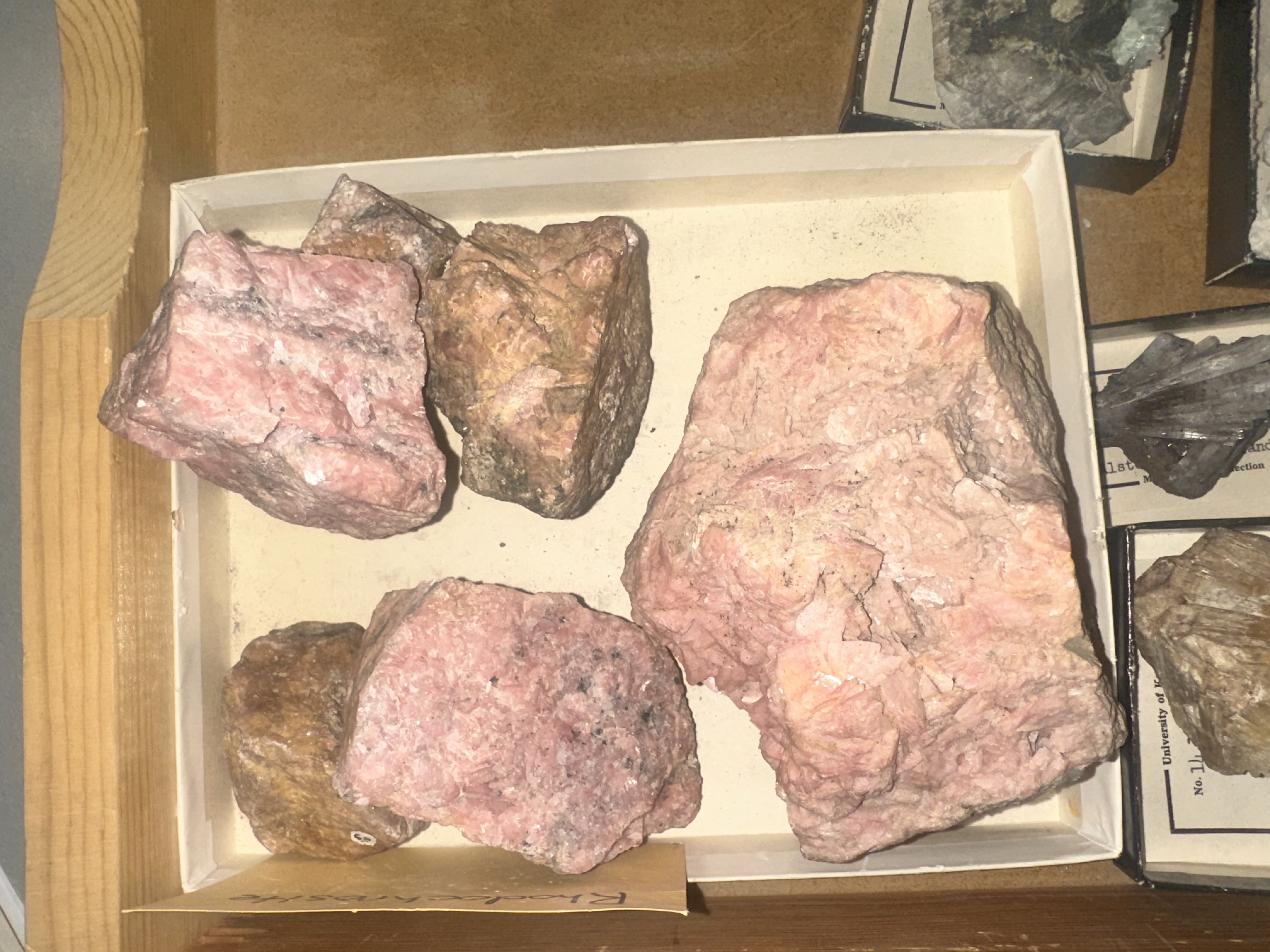
Hardness: 3.5–4
Luster: Vitreous
Color/Streak: Pink; white streak
Cleavage: Perfect rhombohedral
Special: Reacts with HCl when powdered
Rhodochrosite
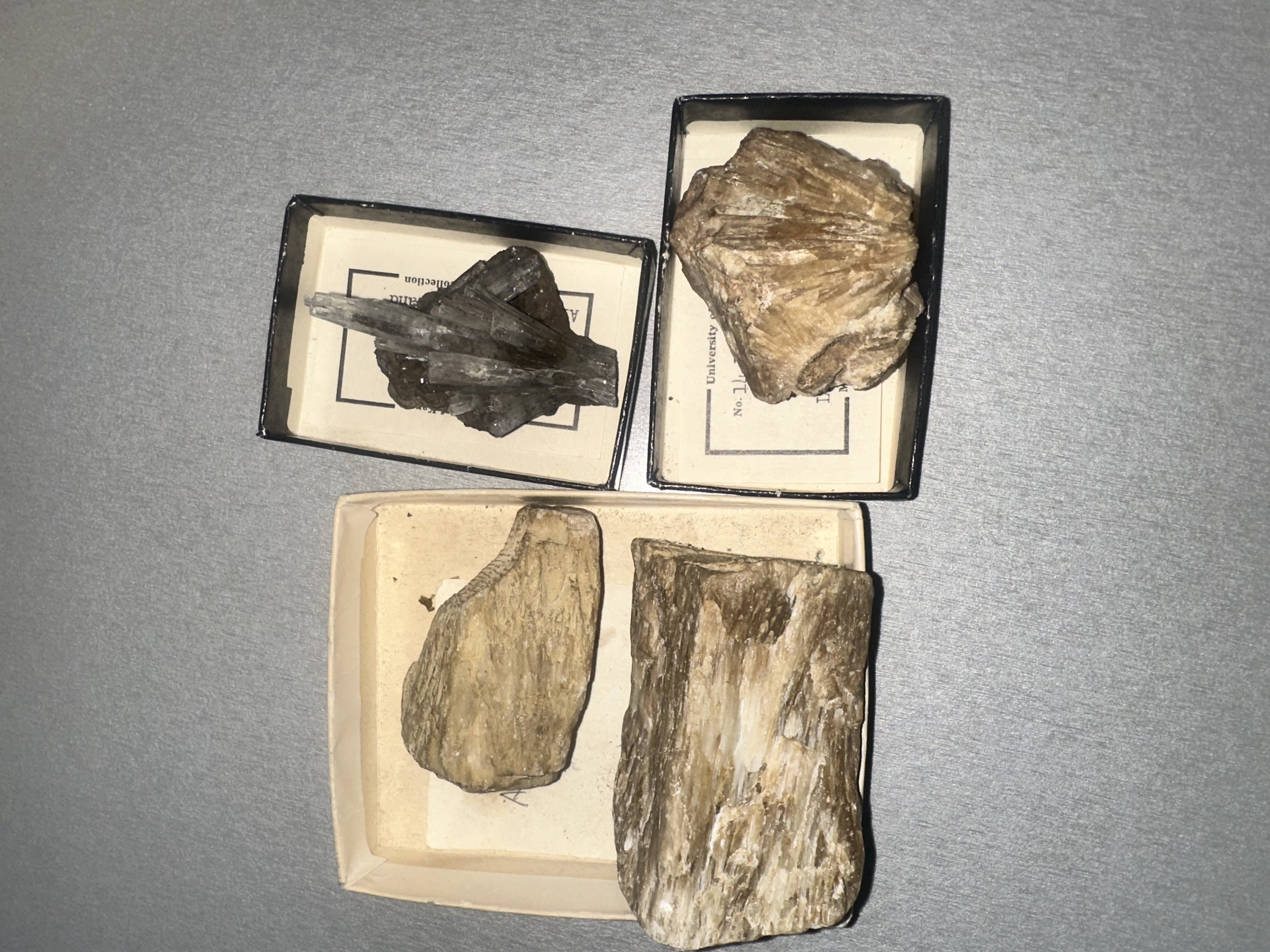
Hardness: 3.5–4
Luster: Vitreous
Color/Streak: White or colorless
Cleavage: Poor
Special: Orthorhombic form of CaCO₃
Aragonite
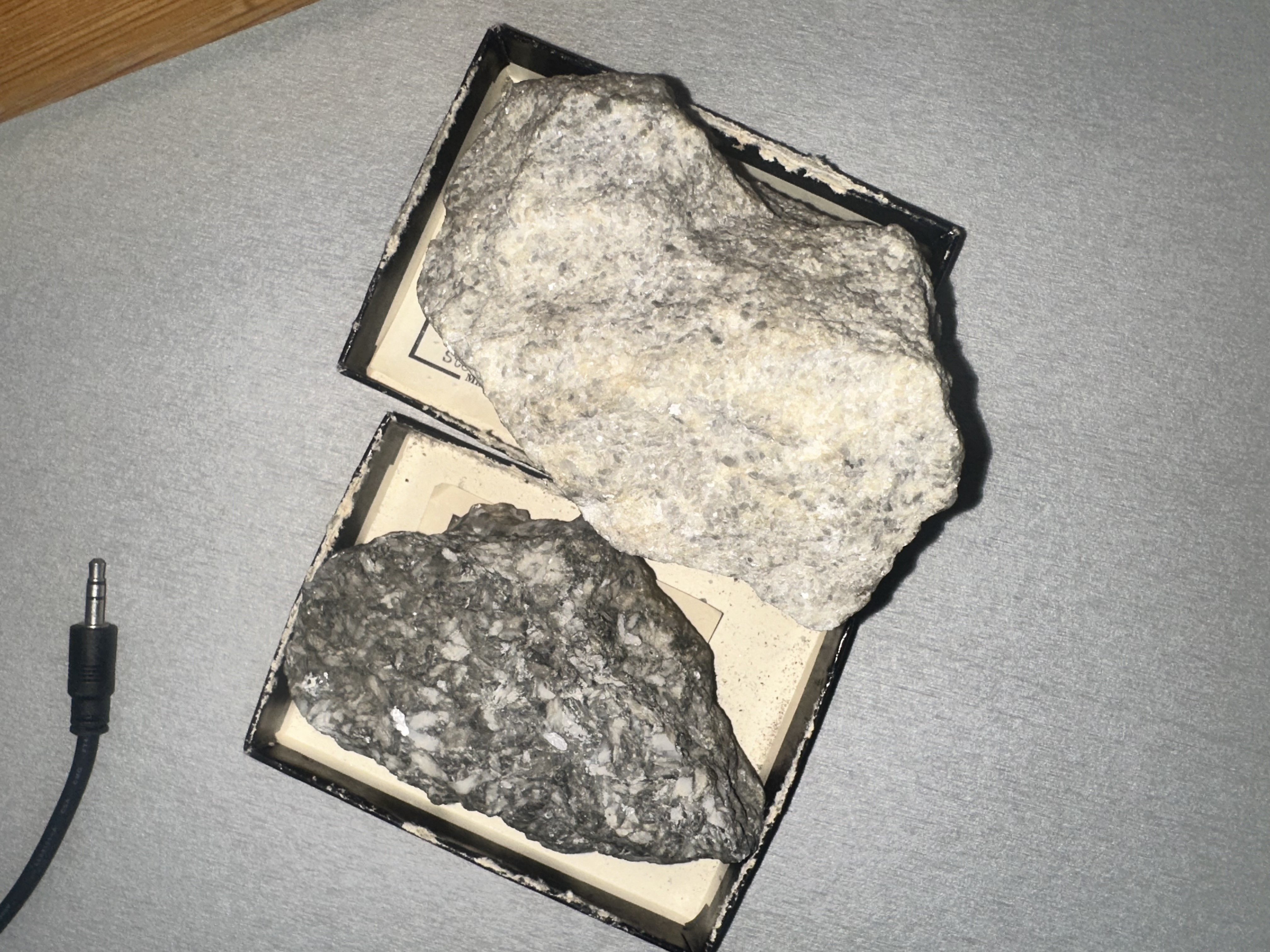
Hardness: 3.5–4.5
Luster: Vitreous to dull
Color/Streak: White; white streak
Cleavage: Rhombohedral
Special: Reacts slowly with HCl when powdered
Magnesite
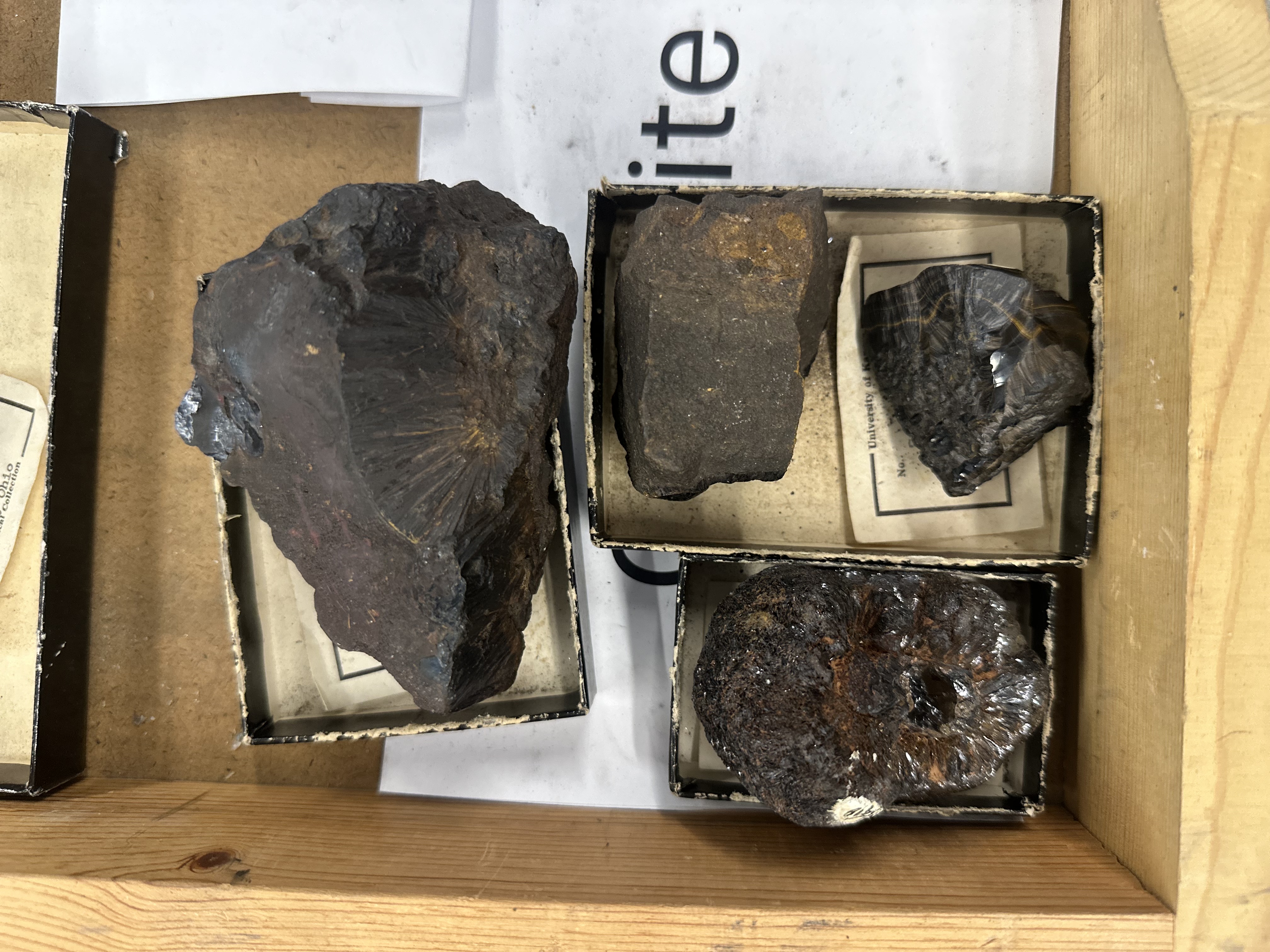
Hardness: 5–5.5
Luster: Adamantine to dull
Color/Streak: Brown; yellow-brown streak
Cleavage: None
Special: Brown earthy masses
goethite
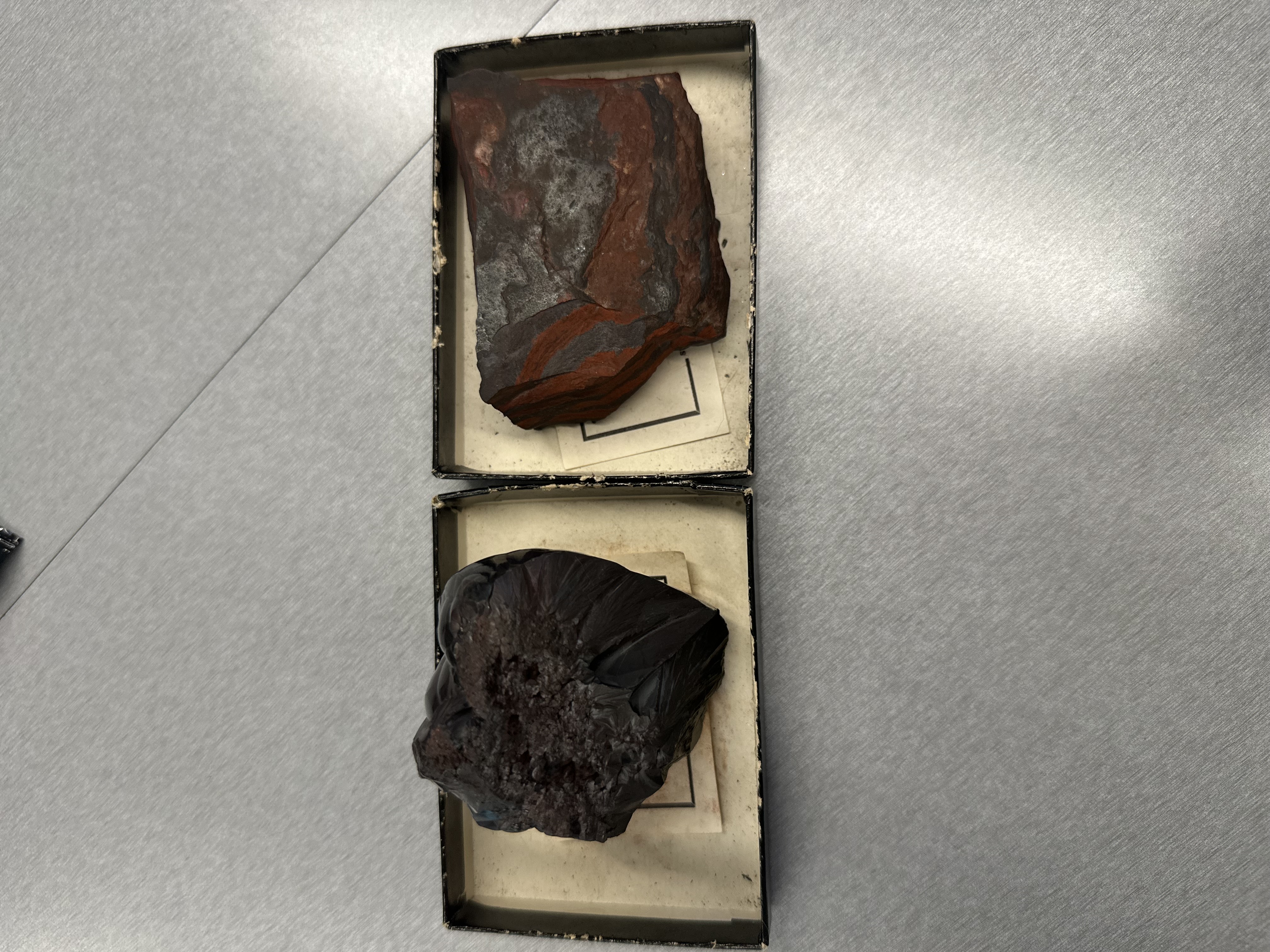
Hardness: 5–6.5
Luster: Metallic to earthy
Color/Streak: Red-brown streak
Cleavage: None
Special: High density, weak magnetism
Hematite
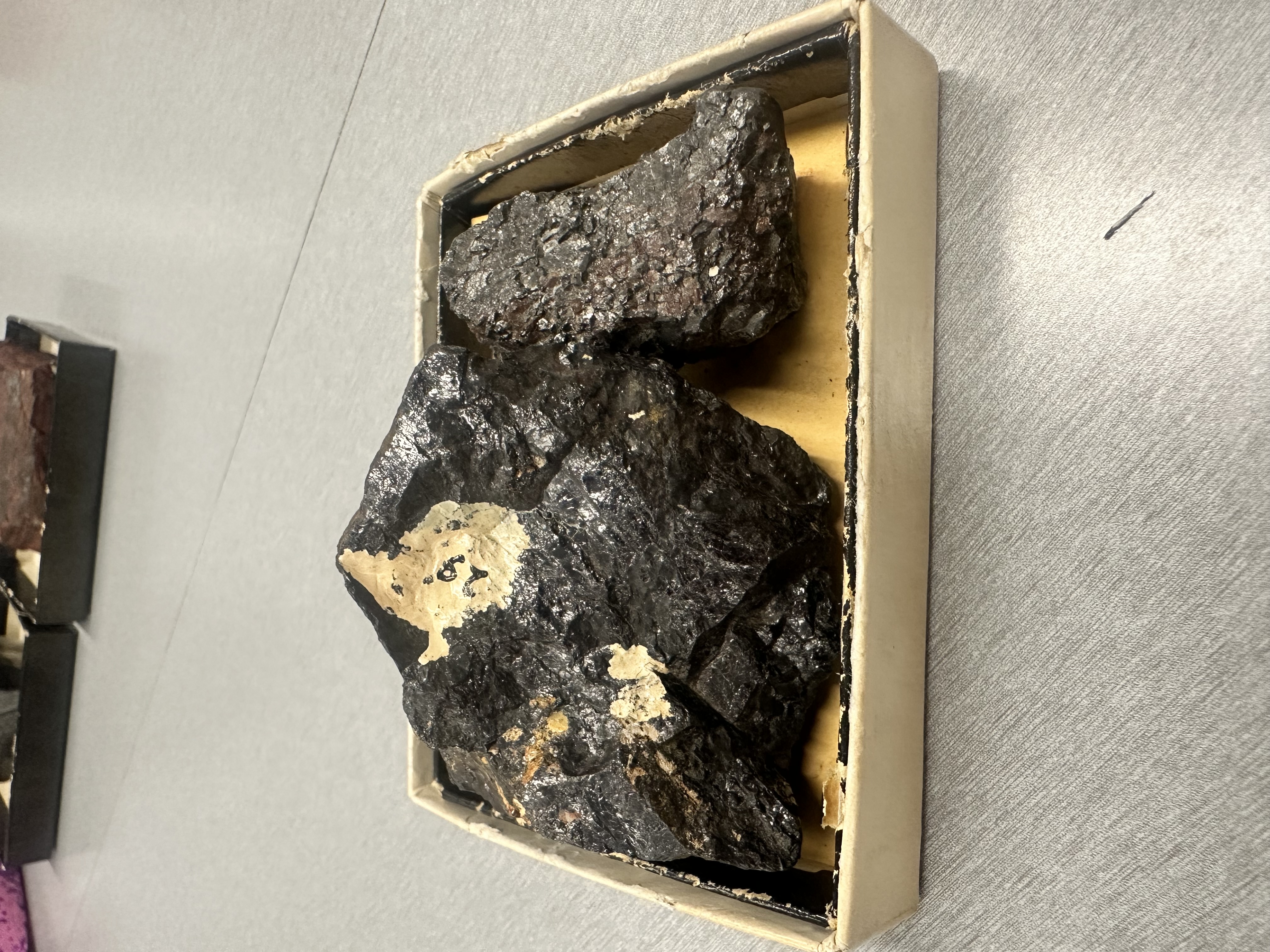
Hardness: 5.5–6.5
Luster: Metallic
Color/Streak: Black; black streak
Cleavage: None (subconchoidal fracture)
Special: Strongly magnetic
Magnetite
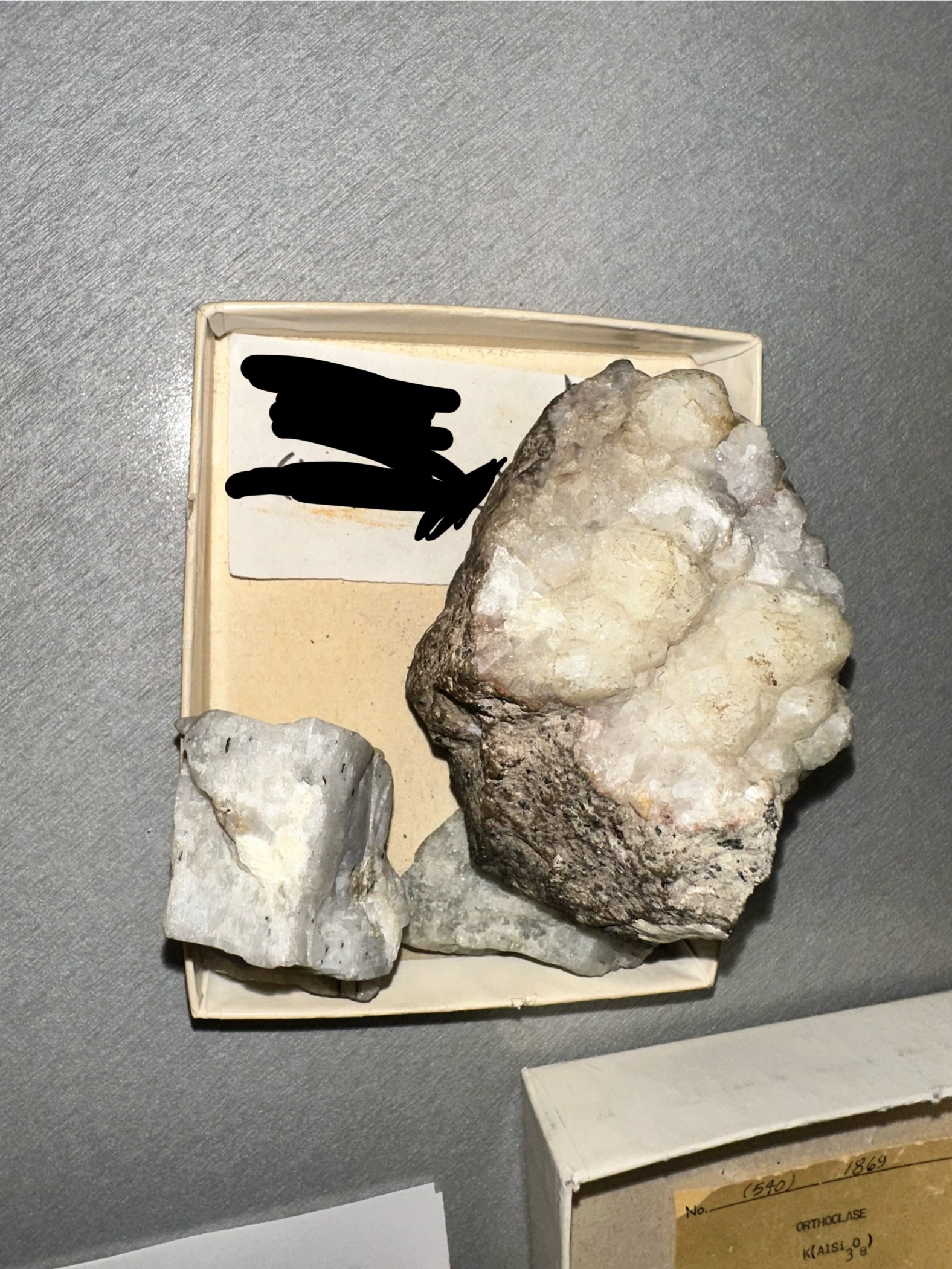
Hardness: 5.5–6
Luster: Vitreous to greasy
Color/Streak: Gray, greenish, colorless; white streak
Cleavage: Poor
Special: Gelatinizes with HCl; no quartz present in host rock
nephaline
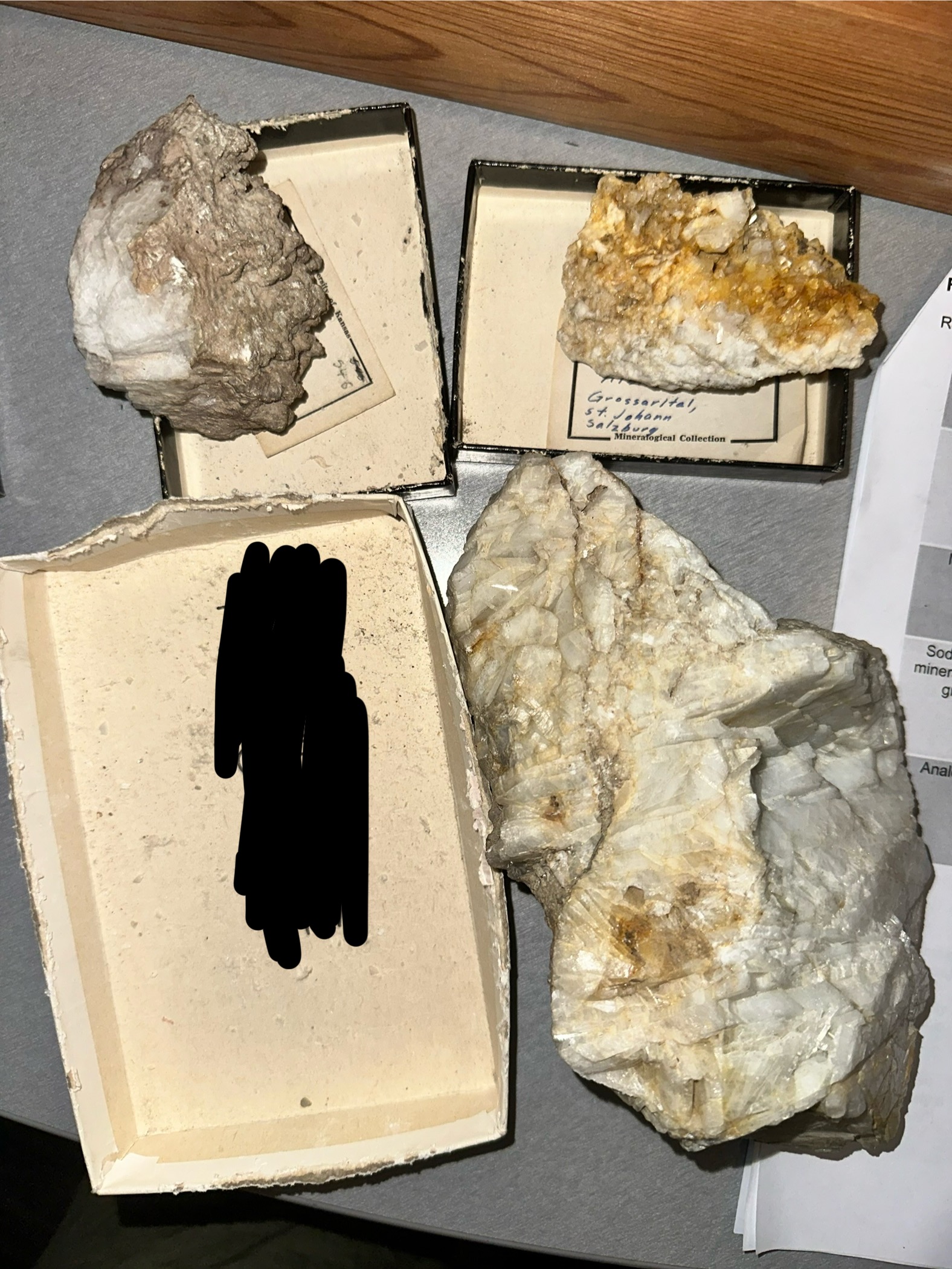
Hardness: 6–6.5
Luster: Vitreous
Color/Streak: White to gray; white streak
Cleavage: Perfect in two directions at ~90°
Special: Plagioclase feldspar end member
Albite
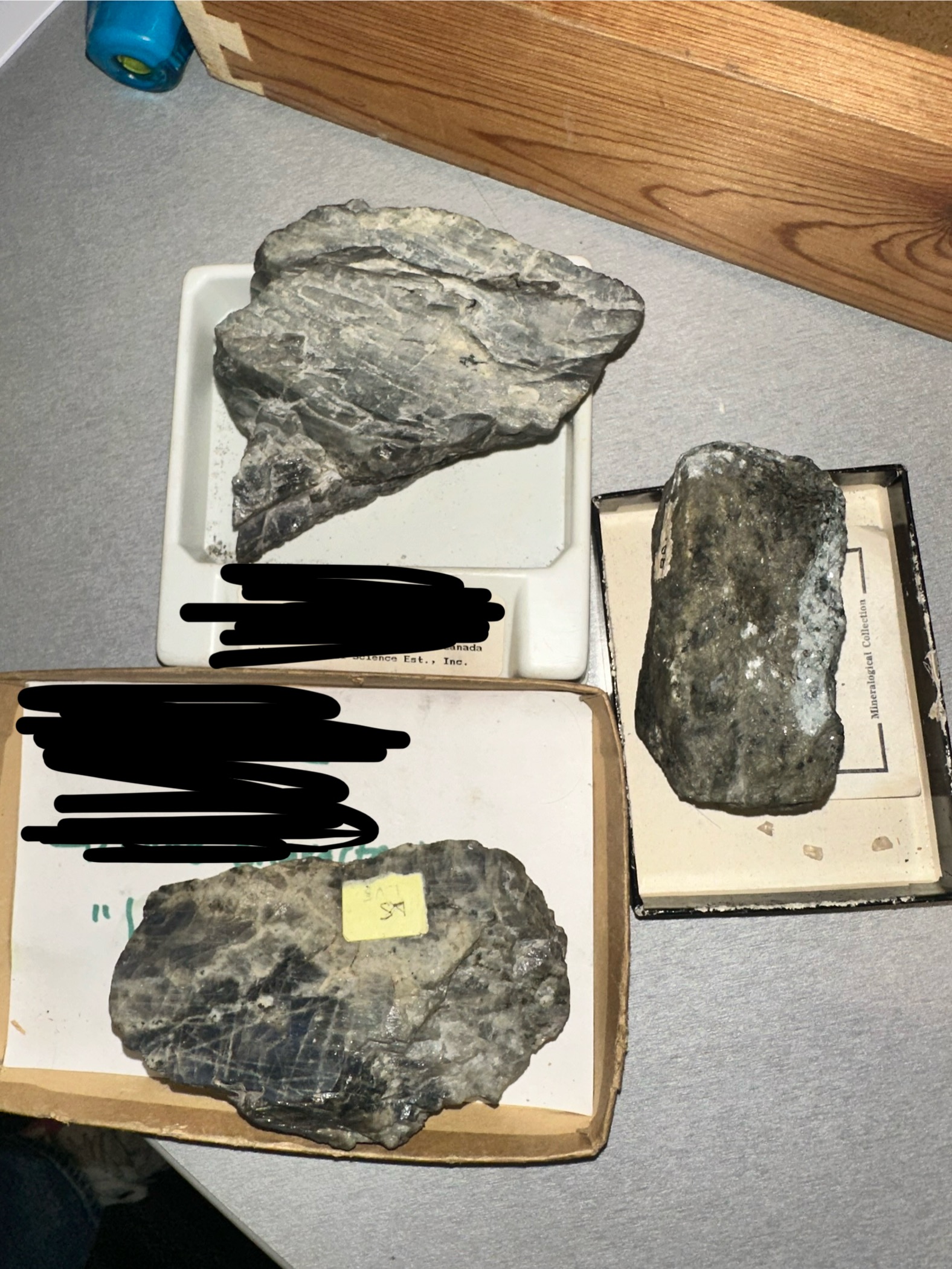
Hardness: 6–6.5
Luster: Vitreous
Color/Streak: Gray to dark; white streak
Cleavage: Perfect in two directions at ~90°
Special: Distinctive labradorescence (iridescent play of colors)
Labradorite
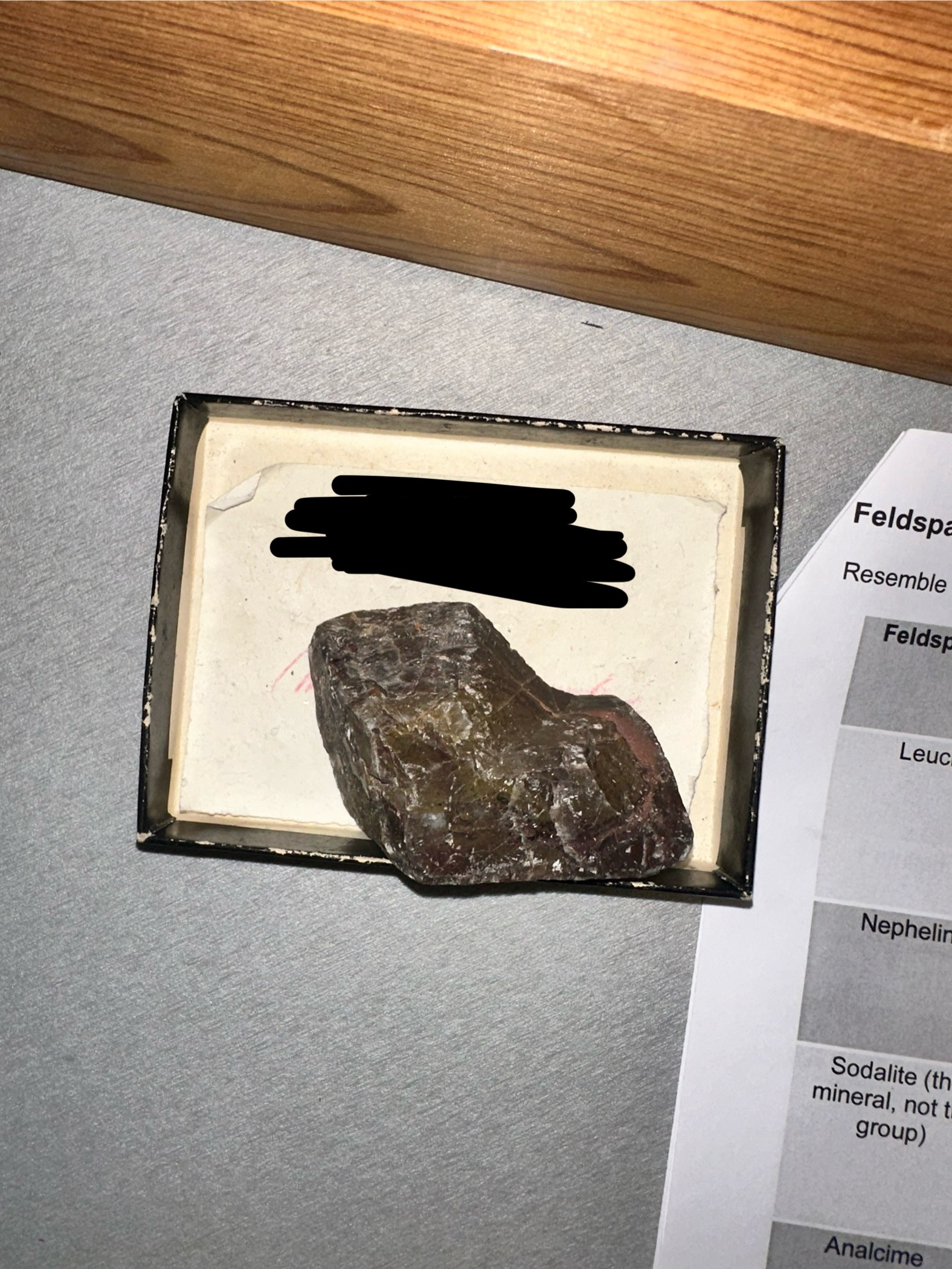
Hardness: 5–5.5
Luster: Vitreous
Color/Streak: Colorless to white; white streak
Cleavage: Poor to indistinct
Special: Zeolite group; trapezohedral crystals
Anaclime
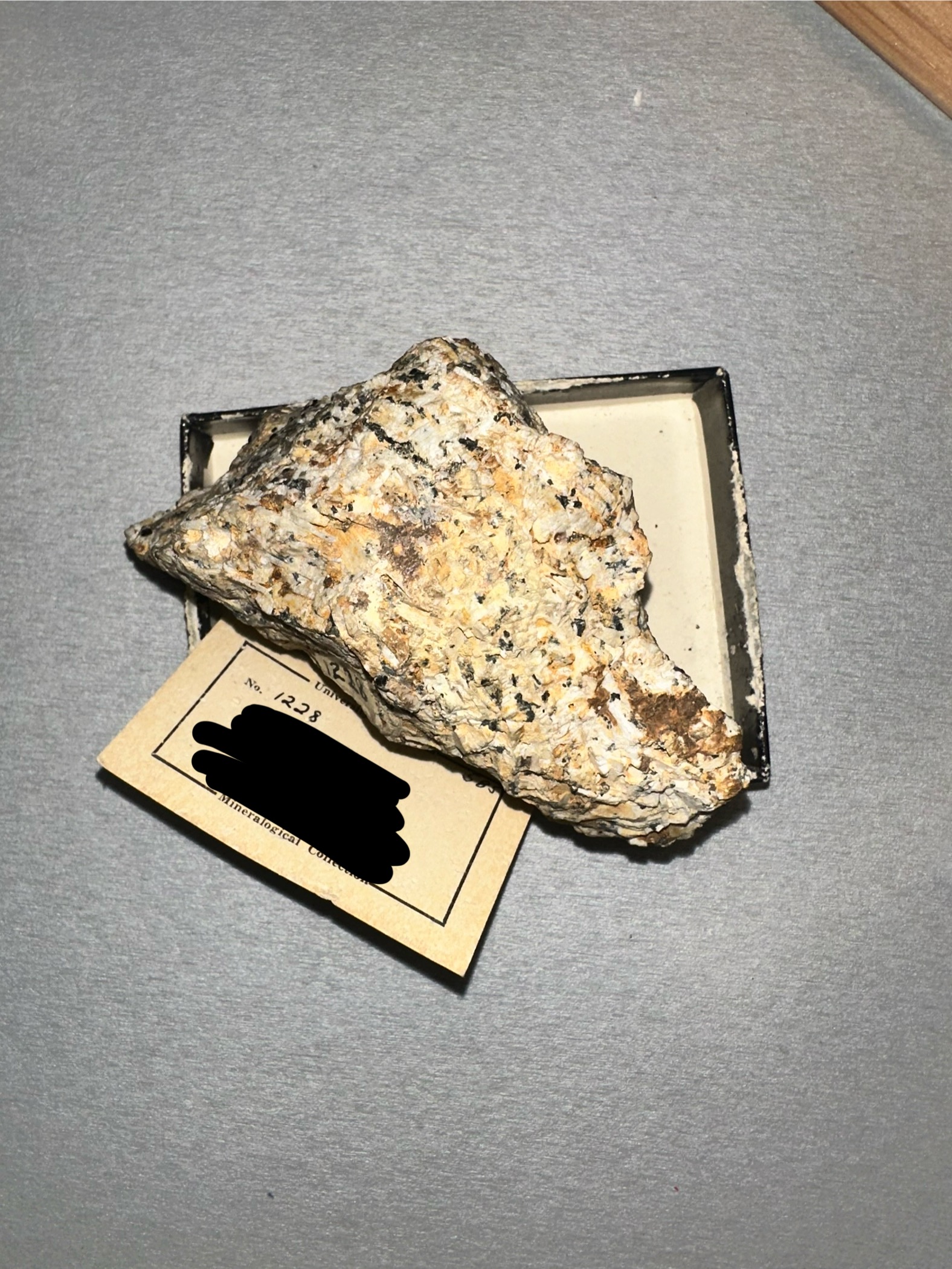
Hardness: ~5.5–6 (matrix varies)
Luster: Dull to vitreous
Color/Streak: Gray, greenish; white streak
Cleavage: Poor (feldspar shows good cleavage)
Special: Quartz-free feldspathoid rock
Nephalite Syenite
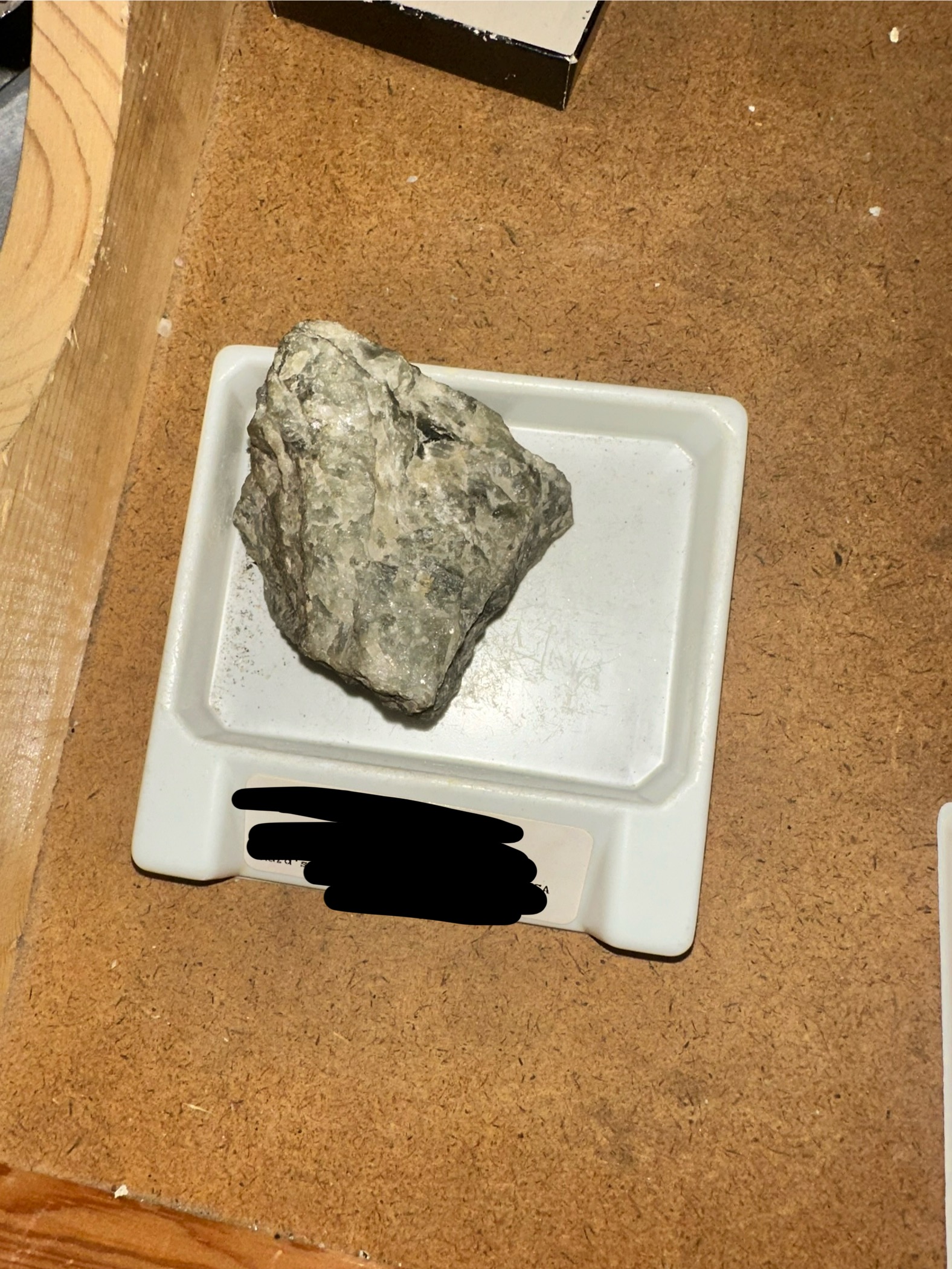
Hardness: 6–6.5
Luster: Vitreous
Color/Streak: White to gray; white streak
Cleavage: Perfect in two directions at ~90°
Special: Plagioclase feldspar (Ca-rich)
Bytownite
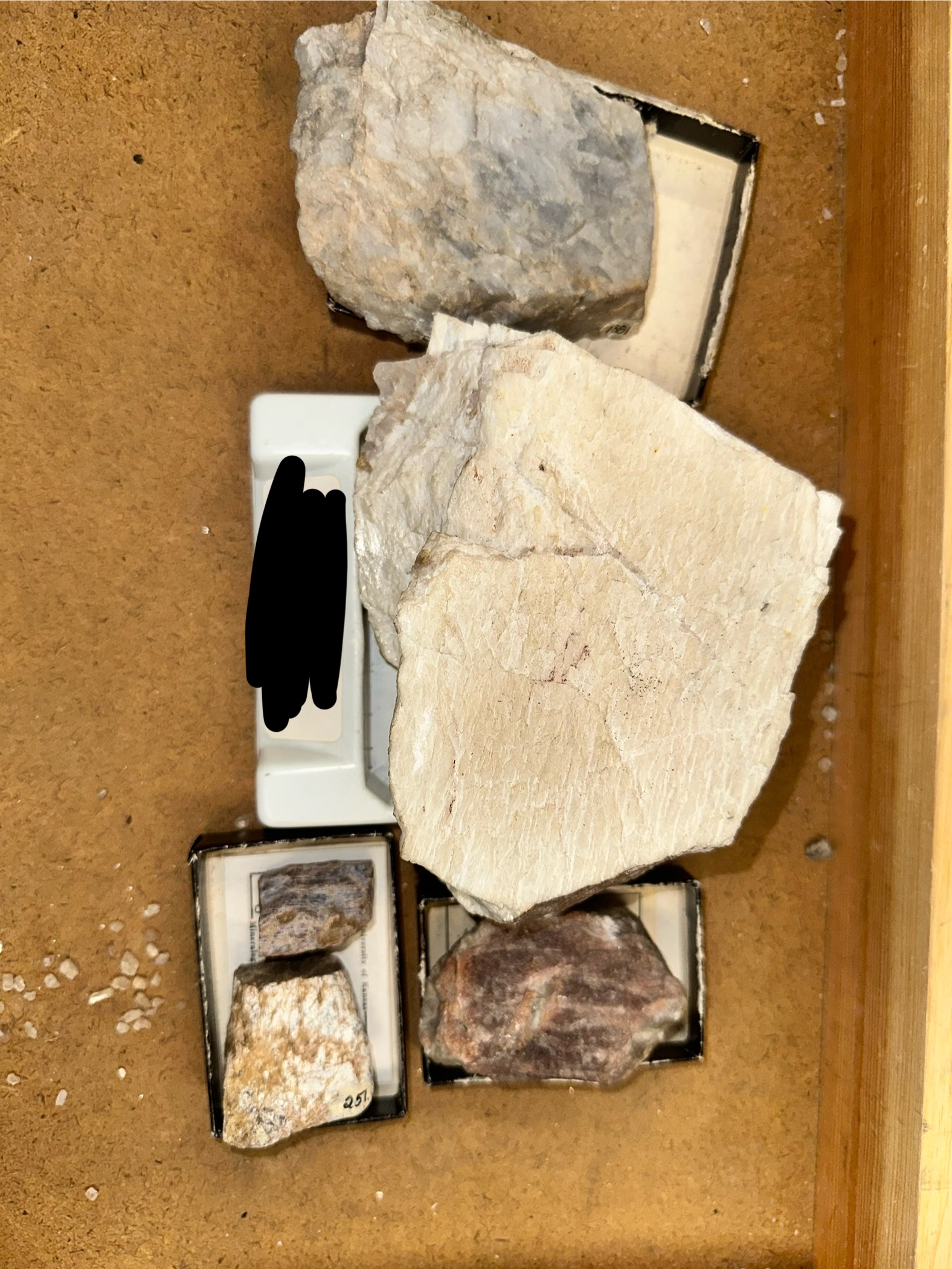
Hardness: 6–6.5
Luster: Vitreous
Color/Streak: White to grayish; white streak
Cleavage: Perfect in two directions at ~90°
Special: Plagioclase feldspar (Na-rich)
Oligoclase
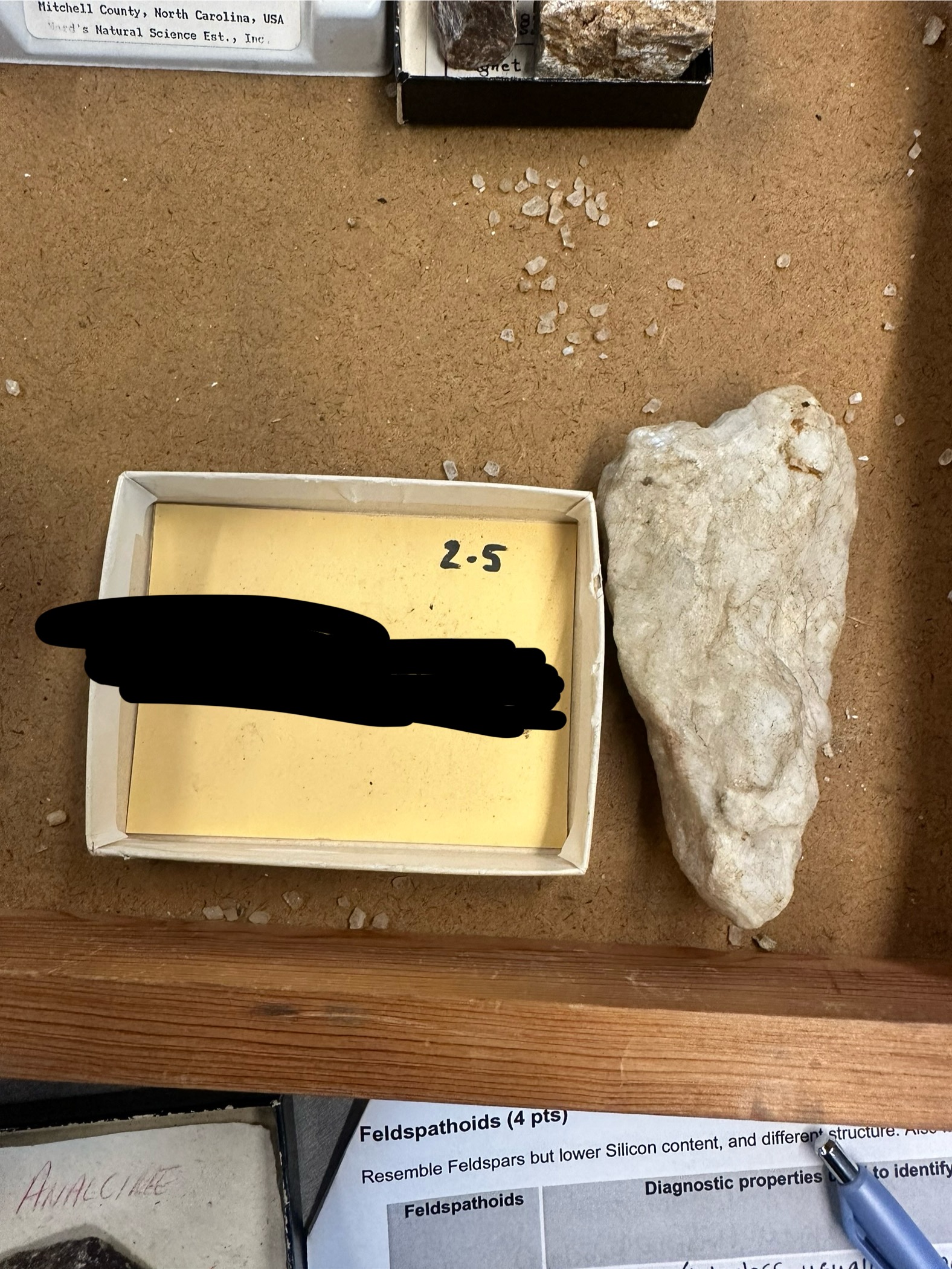
Hardness: 6–6.5
Luster: Vitreous
Color/Streak: White to gray; white streak
Cleavage: Perfect in two directions at ~90°
Special: Common striations on cleavage faces
Plagioclase
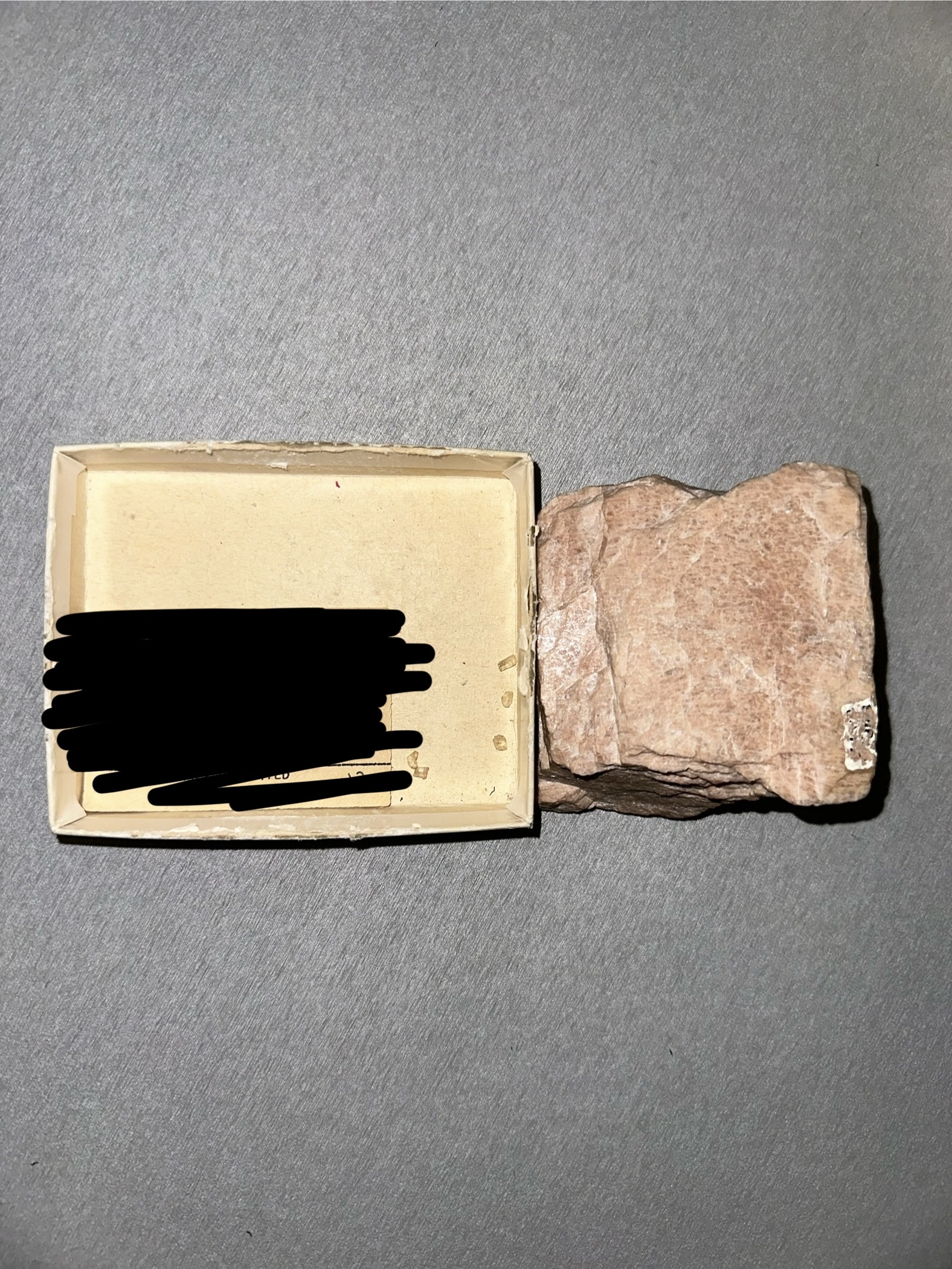
Hardness: 6
Luster: Vitreous
Color/Streak: Pink, white, colorless; white streak
Cleavage: Perfect in two directions at ~90°
Special: K-feldspar end member
Orthoclase
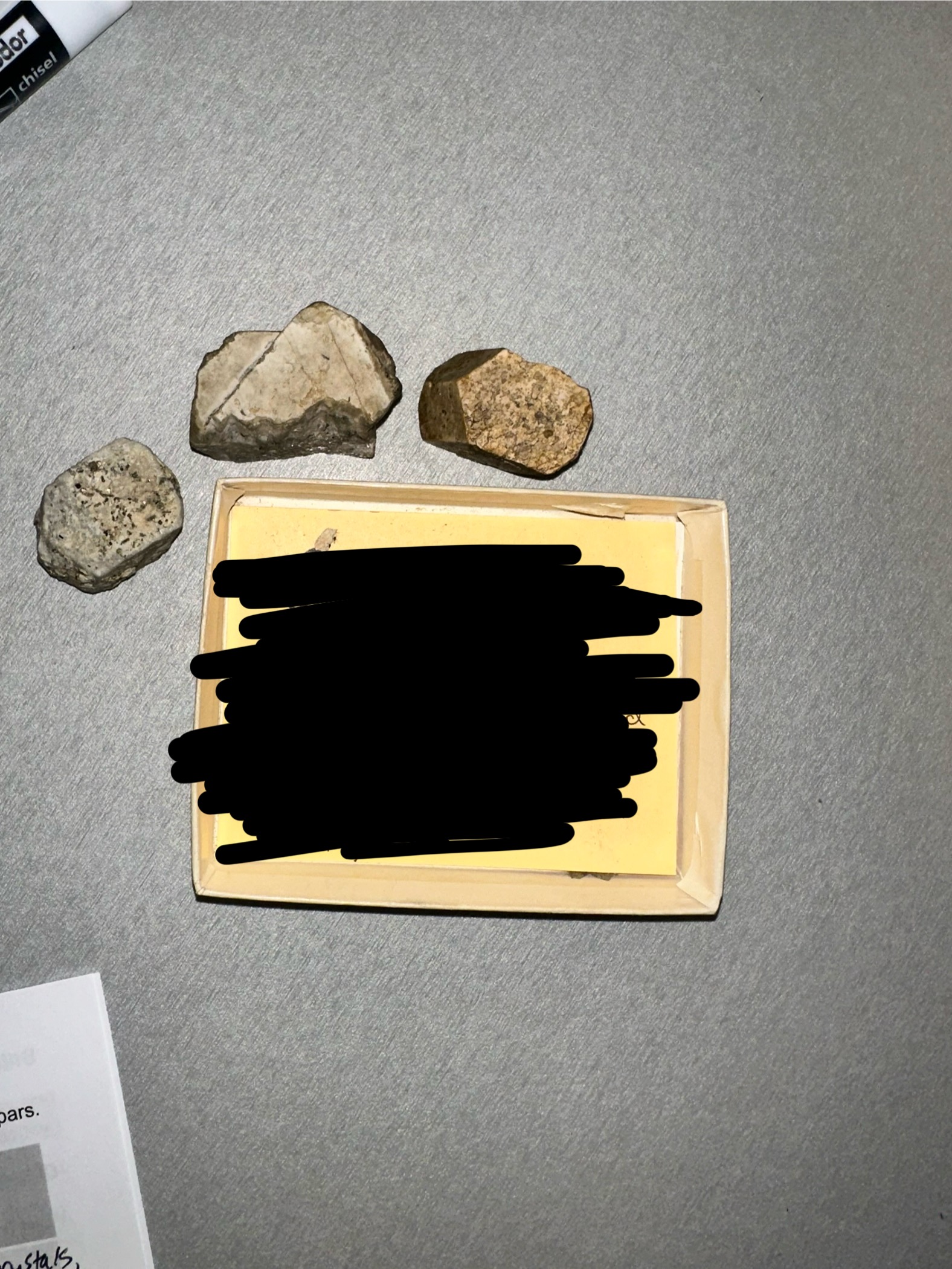
Hardness: 6
Luster: Vitreous
Color/Streak: Pink, white, colorless; white streak
Cleavage: Perfect in two directions at ~90°
Special: K-feldspar end member
Orthoclase
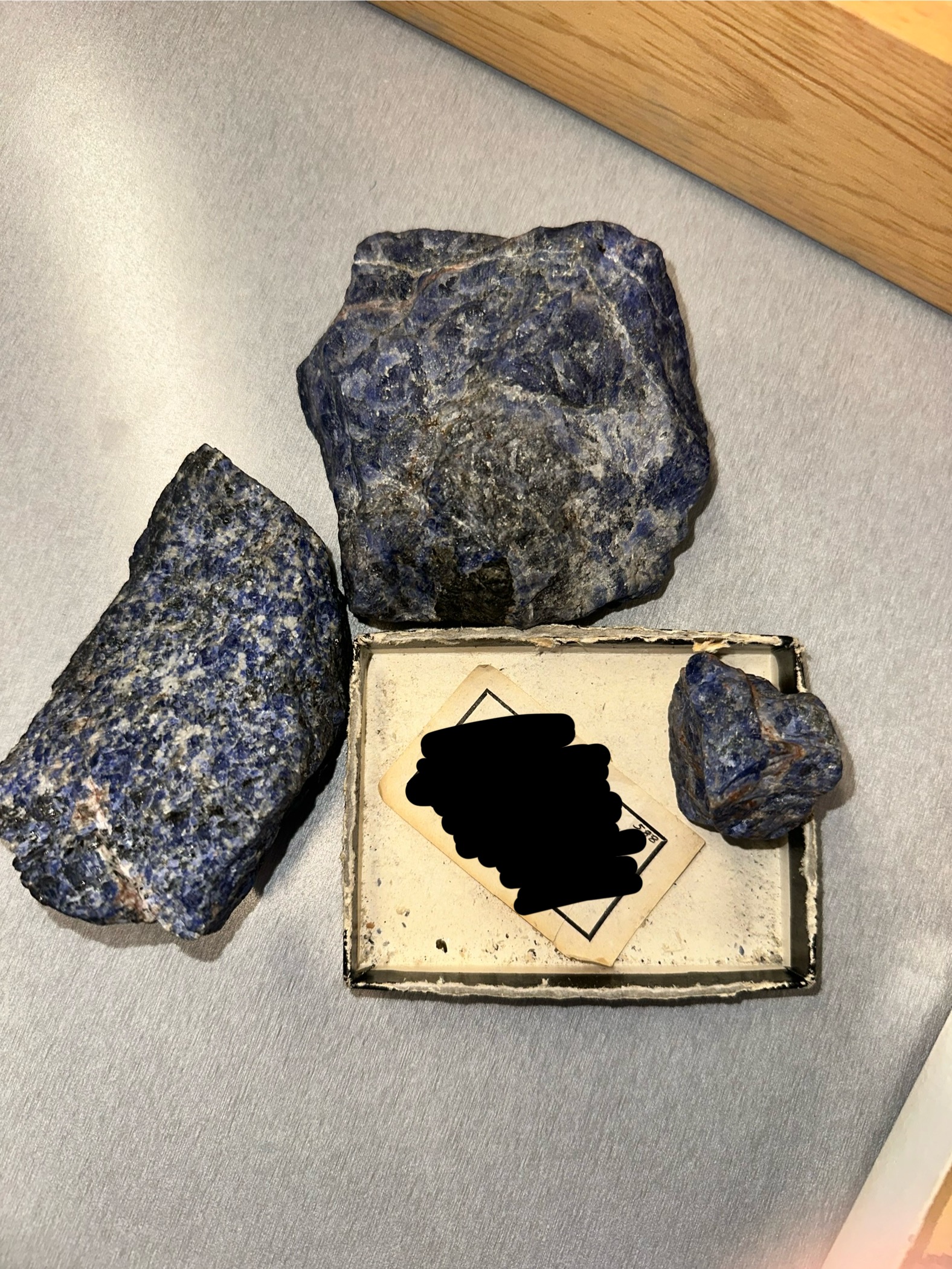
Hardness: 5.5–6
Luster: Vitreous to greasy
Color/Streak: Blue, gray; white streak
Cleavage: Poor
Special: Feldspathoid group; may fluoresce orange
Sodalite
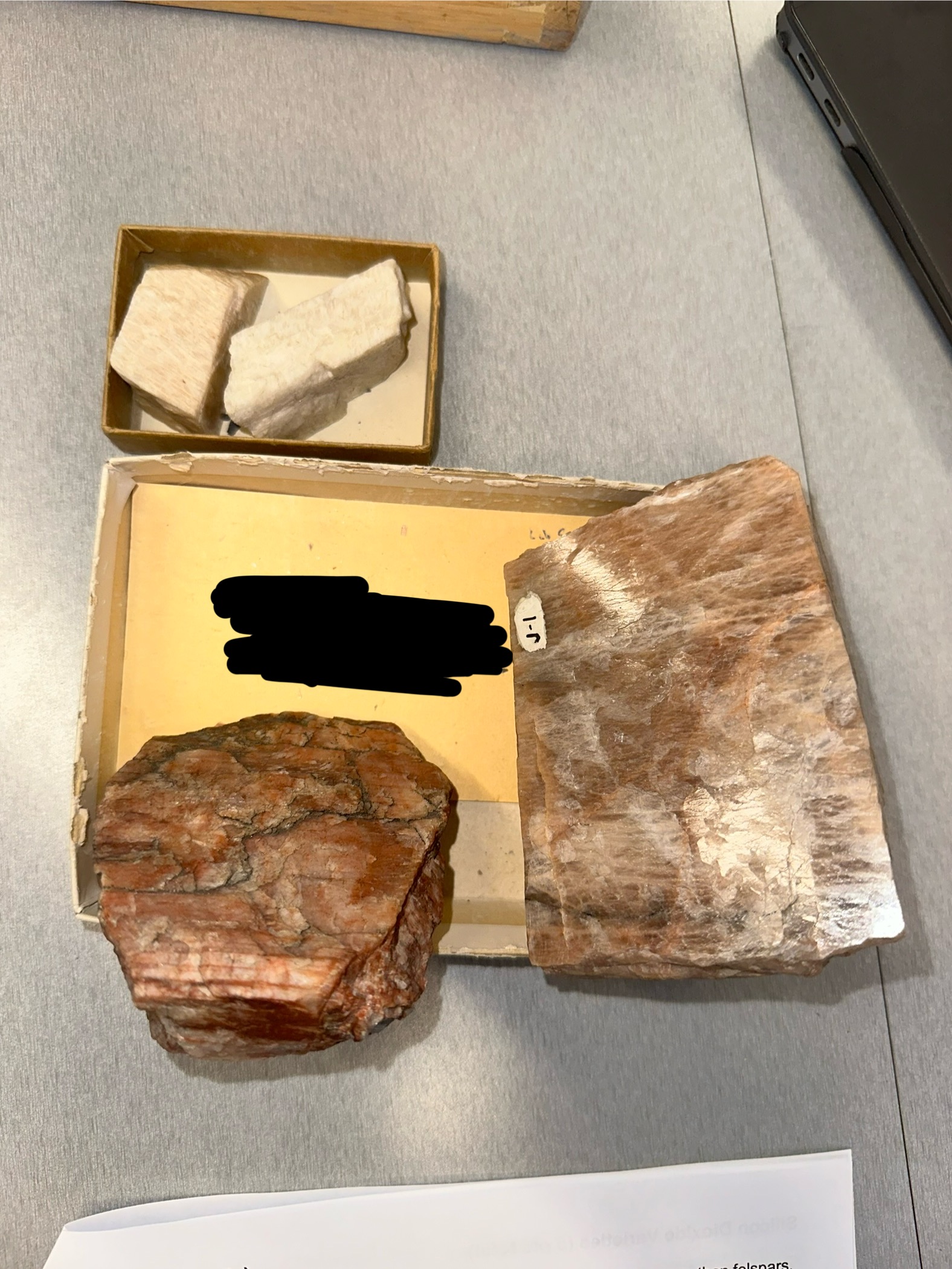
Hardness: 6
Luster: Vitreous
Color/Streak: Pink to flesh-colored; white streak
Cleavage: Perfect in two directions at ~90°
Special: Intergrowth of K-feldspar and albite (visible lamellae)
Perthite
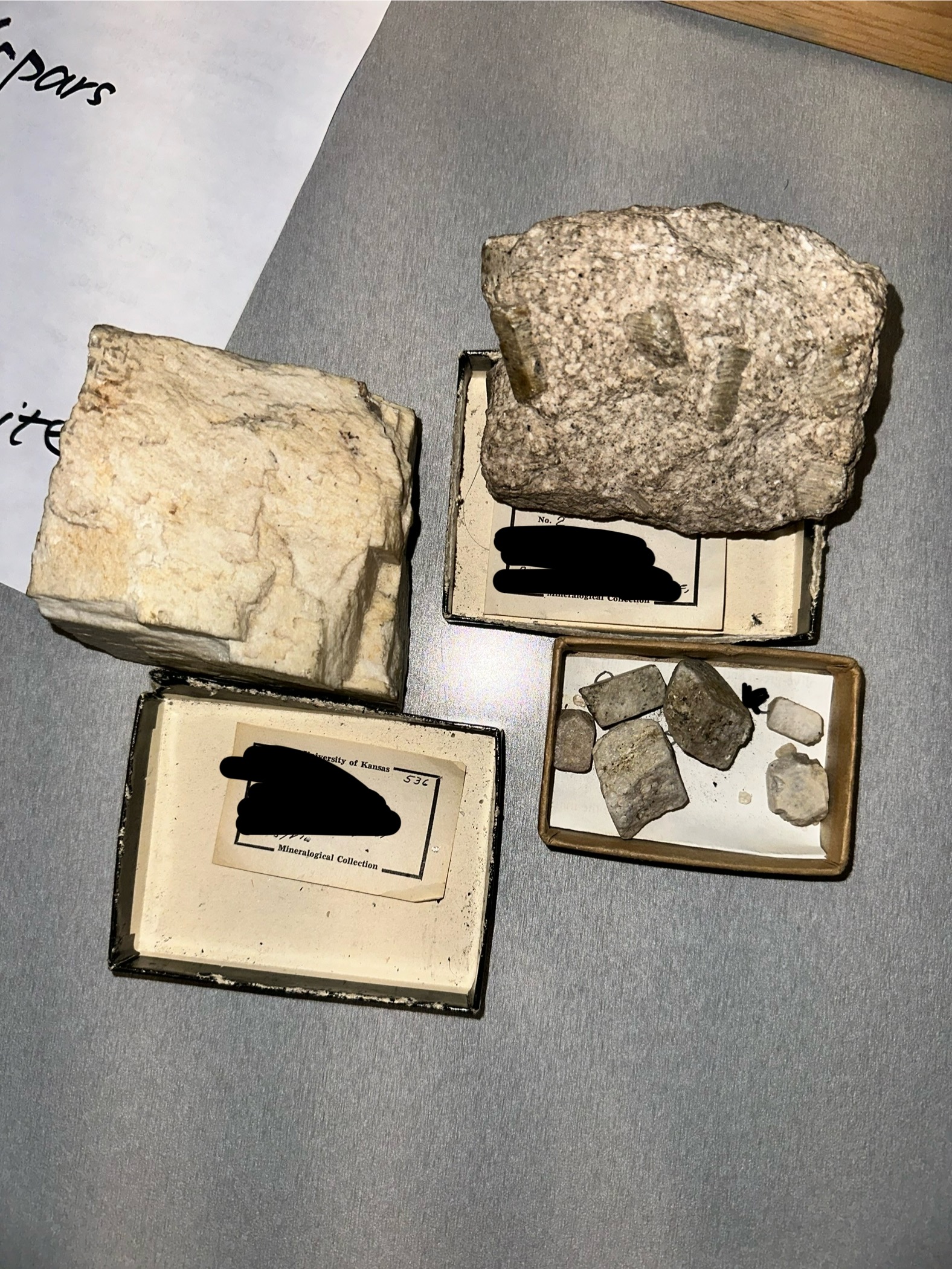
Hardness: 6
Luster: Vitreous
Color/Streak: Pink, white, colorless; white streak
Cleavage: Perfect in two directions at ~90°
Special: K-feldspar end member
Orthoclase
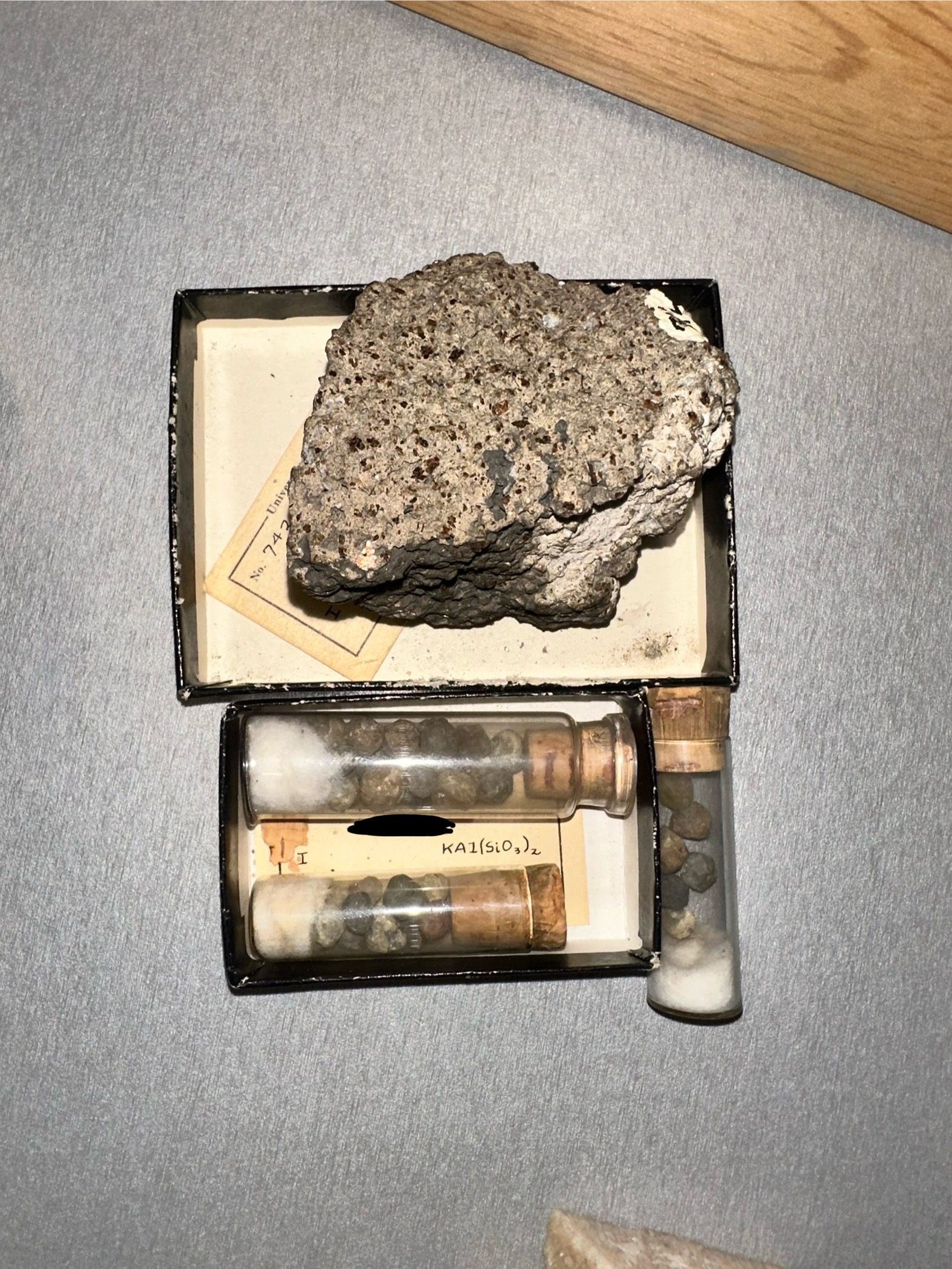
Hardness: 5.5–6
Luster: Vitreous to dull
Color/Streak: White, gray; white streak
Cleavage: Poor to none
Special: Feldspathoid group; typically forms icositetrahedral crystals
Leucite
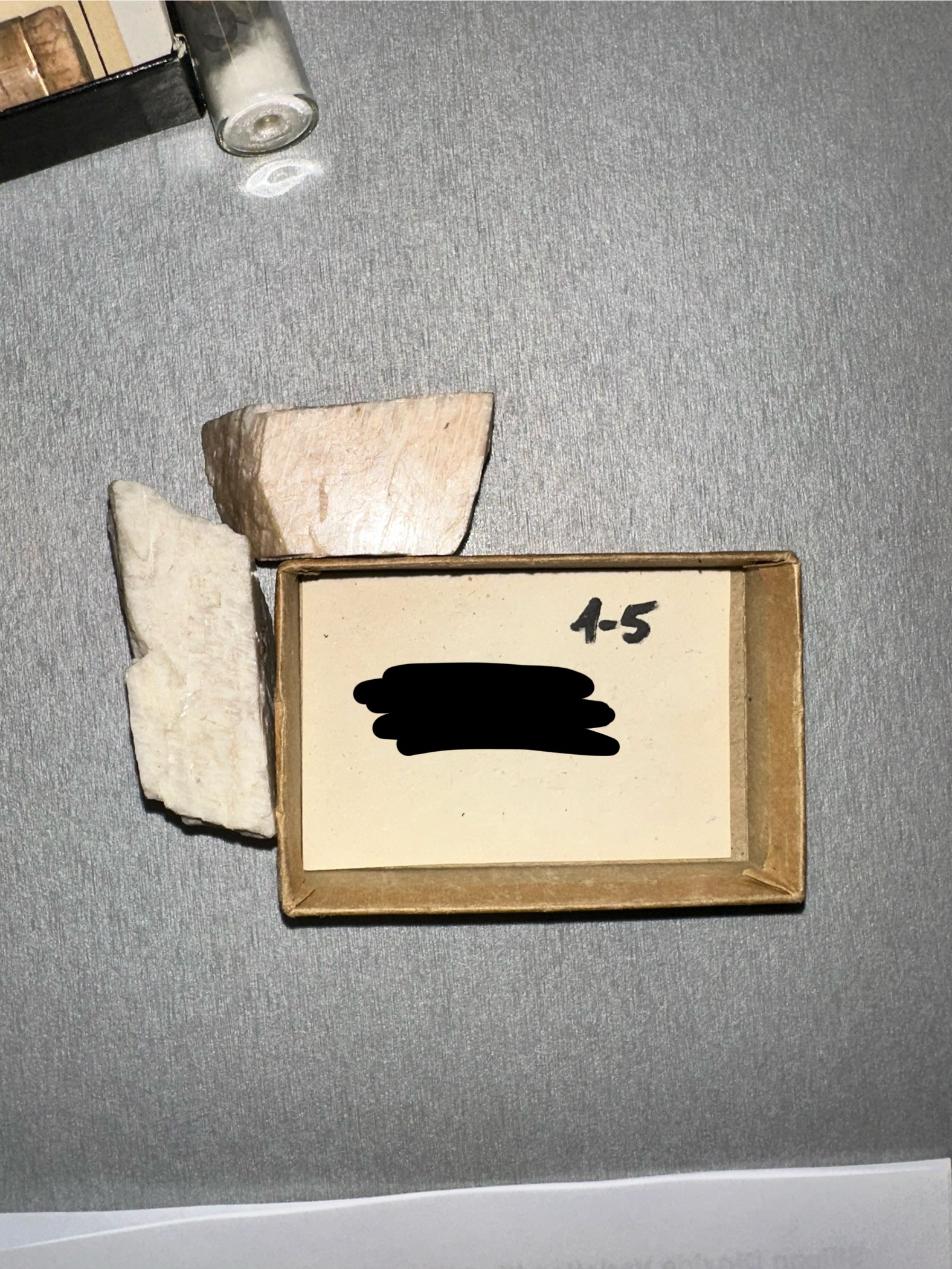
Hardness: 6
Luster: Vitreous
Color/Streak: Pink to flesh-colored; white streak
Cleavage: Perfect in two directions at ~90°
Special: Intergrowth of K-feldspar and albite (visible lamellae)
Perthite
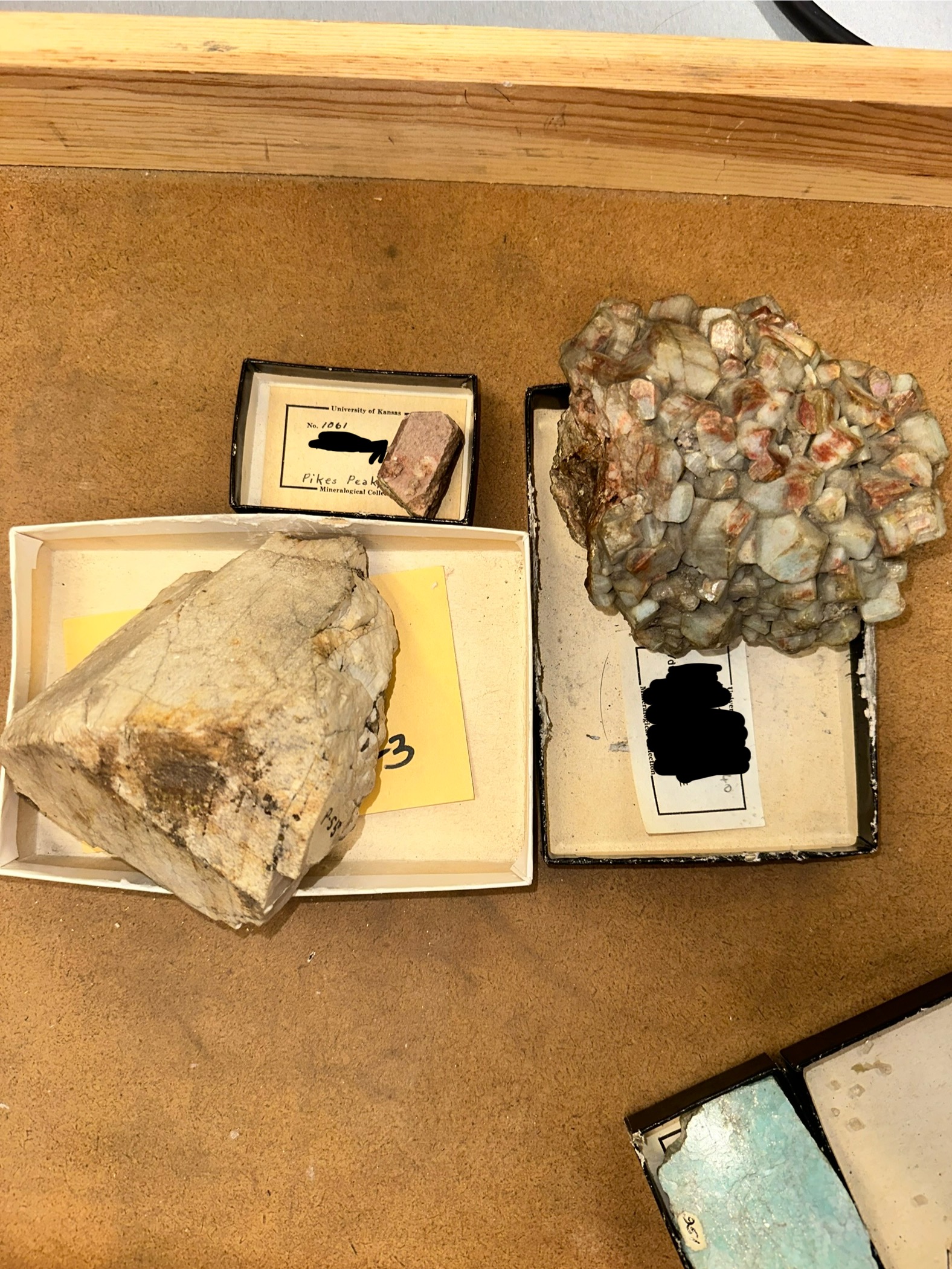
Hardness: 6–6.5
Luster: Vitreous
Color/Streak: White, pink, green; white streak
Cleavage: Perfect in two directions at ~90°
Special: Cross-hatched (grid) twinning diagnostic
microcline
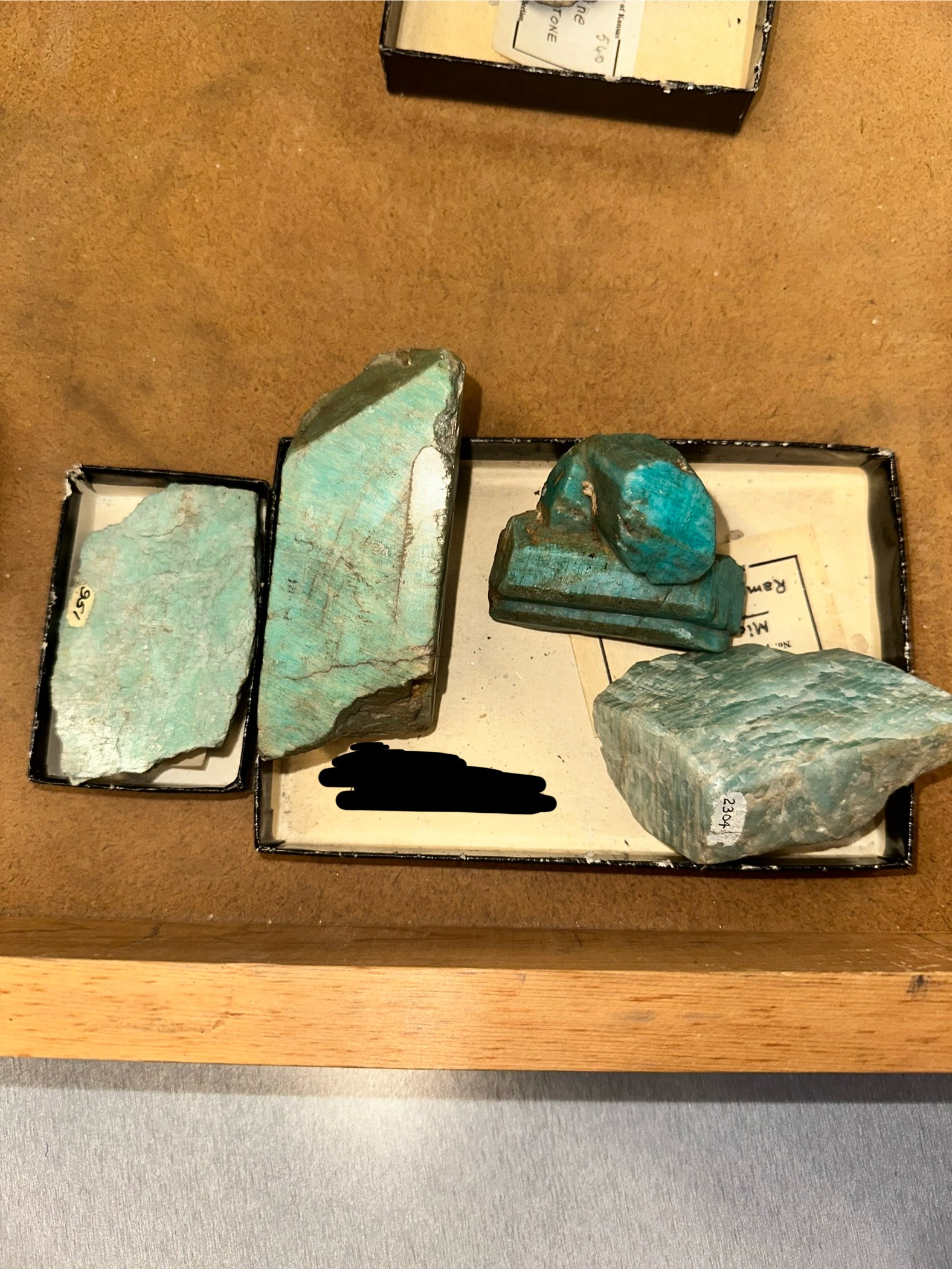
Hardness: 6–6.5
Luster: Vitreous
Color/Streak: Green to blue-green; white streak
Cleavage: Perfect in two directions at ~90°
Special: Microcline variety with distinctive color
Amazonite
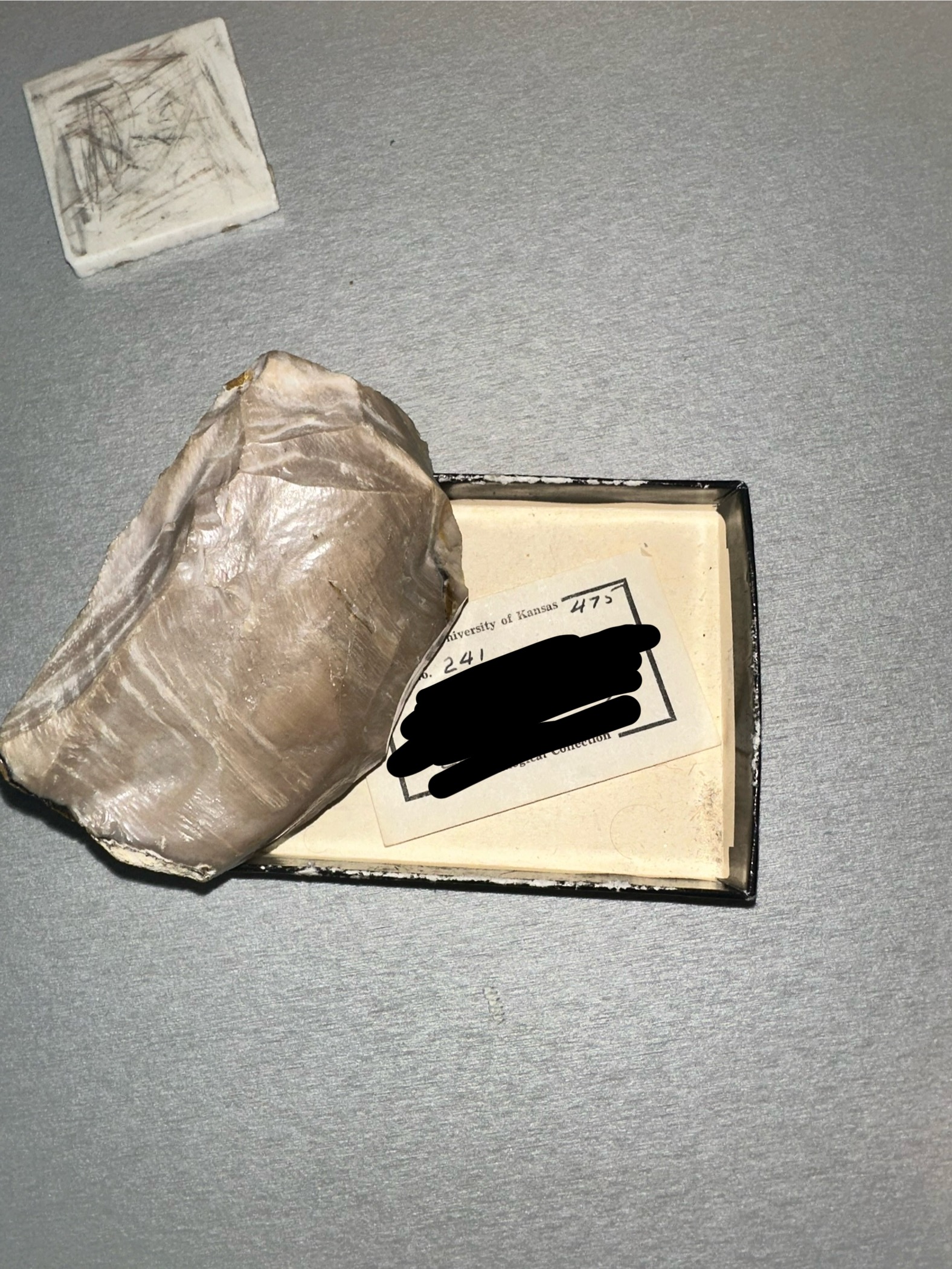
Hardness: 5–6.5
Luster: Vitreous to waxy
Color/Streak: Varied; white streak
Cleavage: None (conchoidal fracture)
Special: Fossilized wood replaced by opal
Opalized Wood
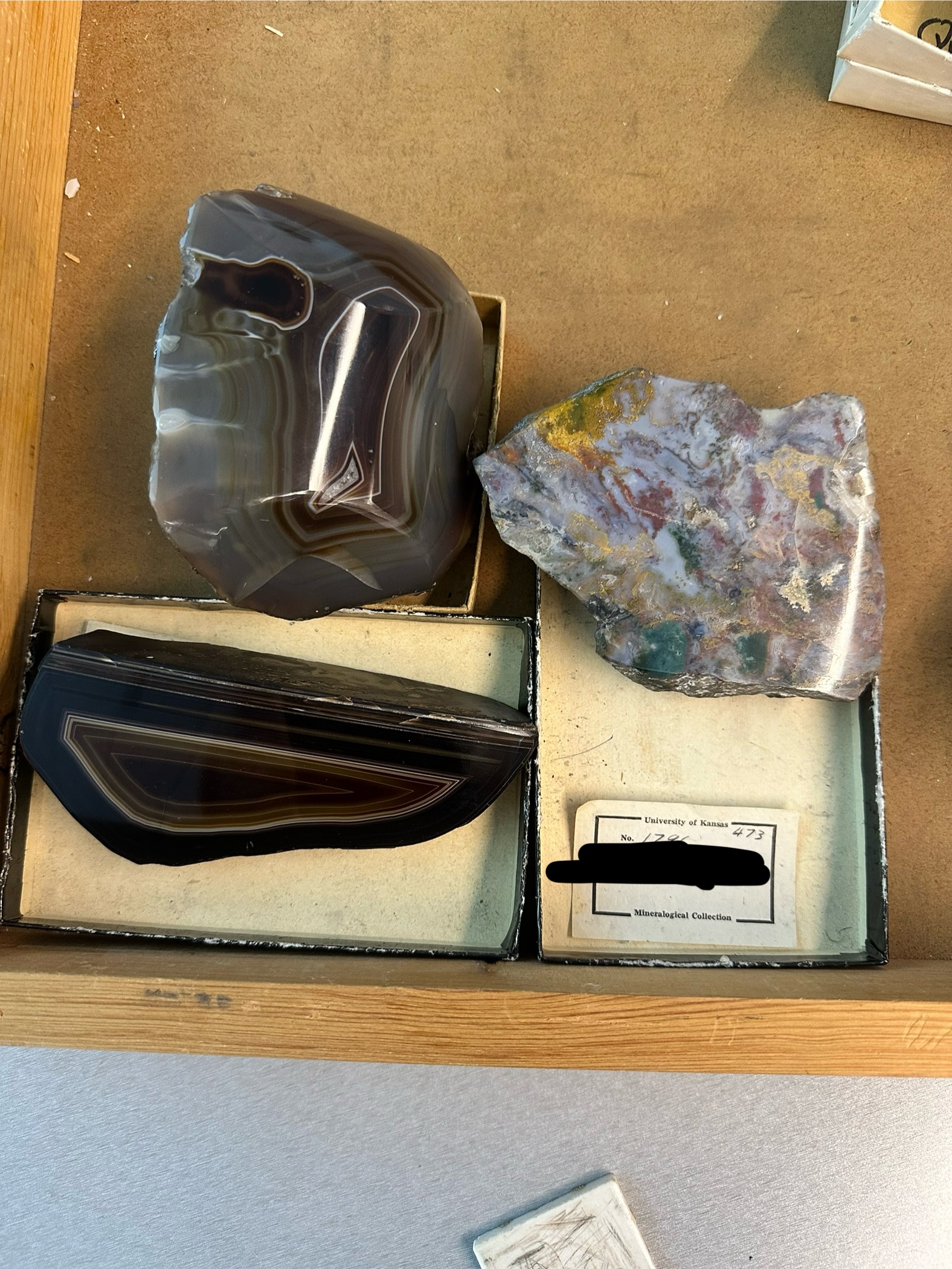
Hardness: 6.5–7
Luster: Waxy to vitreous
Color/Streak: Banded multicolored; white streak
Cleavage: None (conchoidal fracture)
Special: Banded chalcedony (cryptocrystalline quartz)
Agate
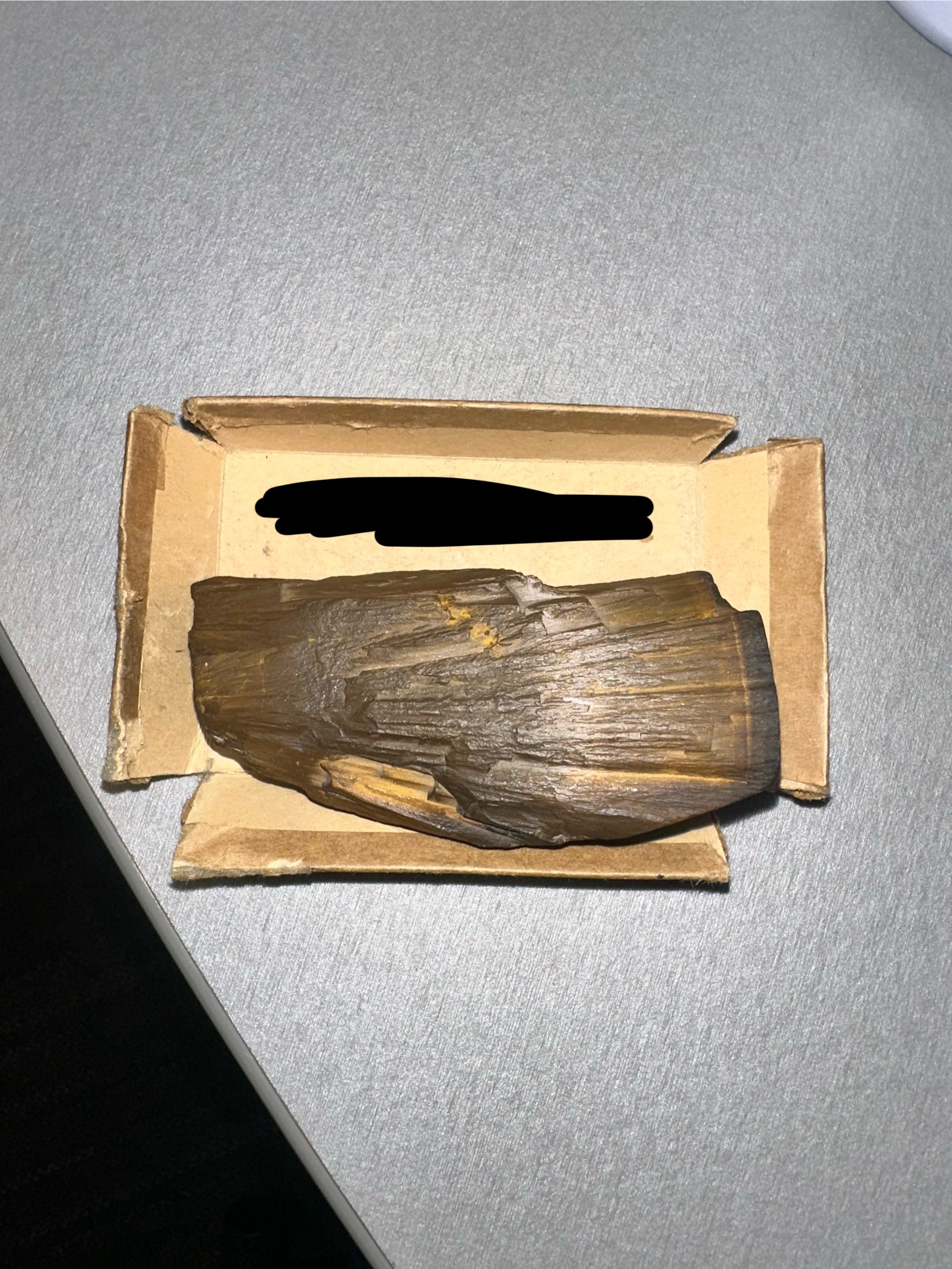
Hardness: 3–4.5
Luster: Metallic
Color/Streak: Steel-gray to black; dark gray streak
Cleavage: Indistinct
Special: Copper antimony sulfide; tetrahedral crystals
Tetrahedrite
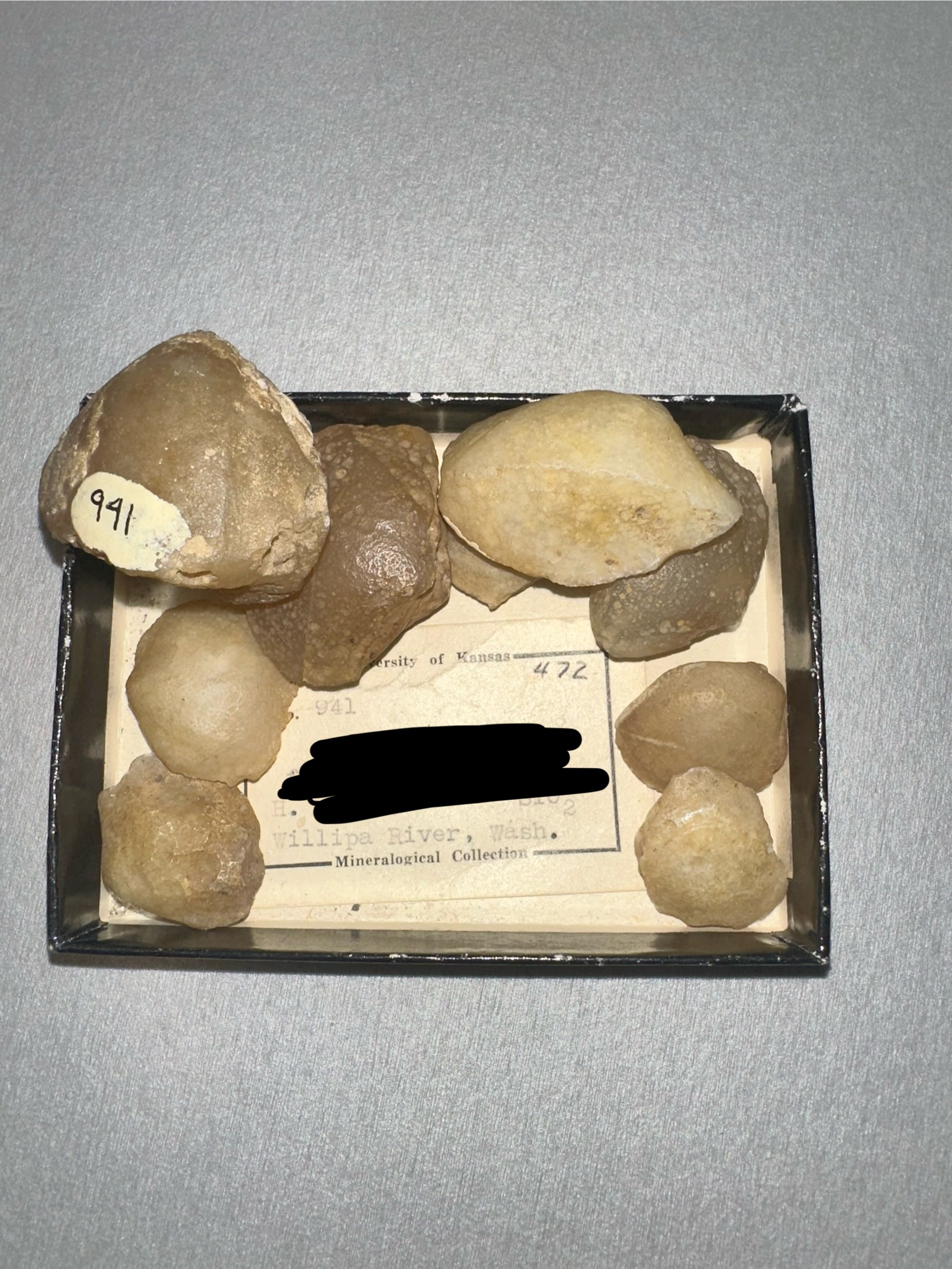
Hardness: 6.5–7
Luster: Waxy
Color/Streak: White to bluish; white streak
Cleavage: None (conchoidal fracture)
Special: Cryptocrystalline quartz variety
Chalcedony
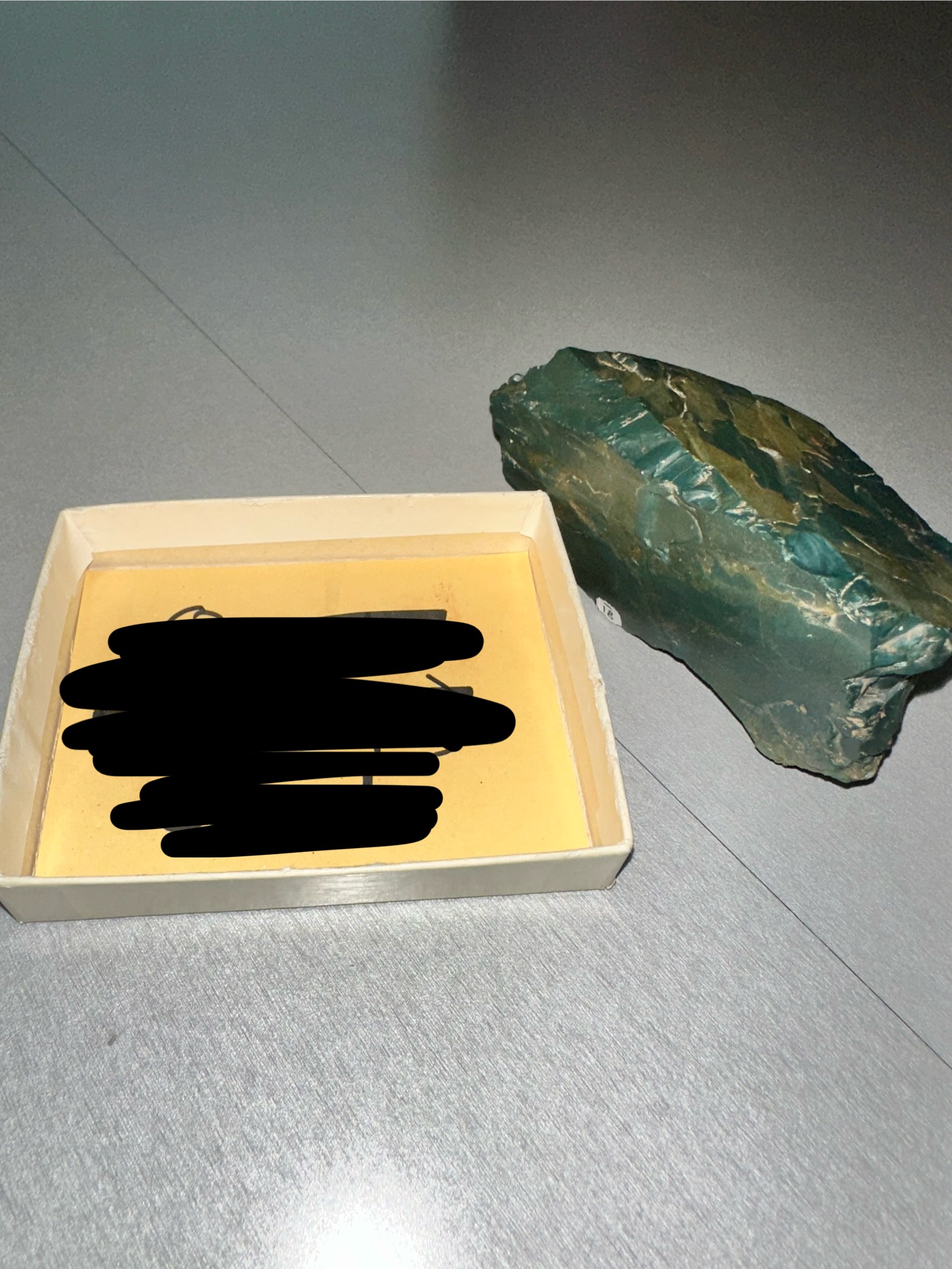
Hardness: 6.5–7
Luster: Dull to waxy
Color/Streak: Varied (gray, brown); white streak
Cleavage: None (conchoidal fracture)
Special: Dense, microcrystalline quartz
Chert
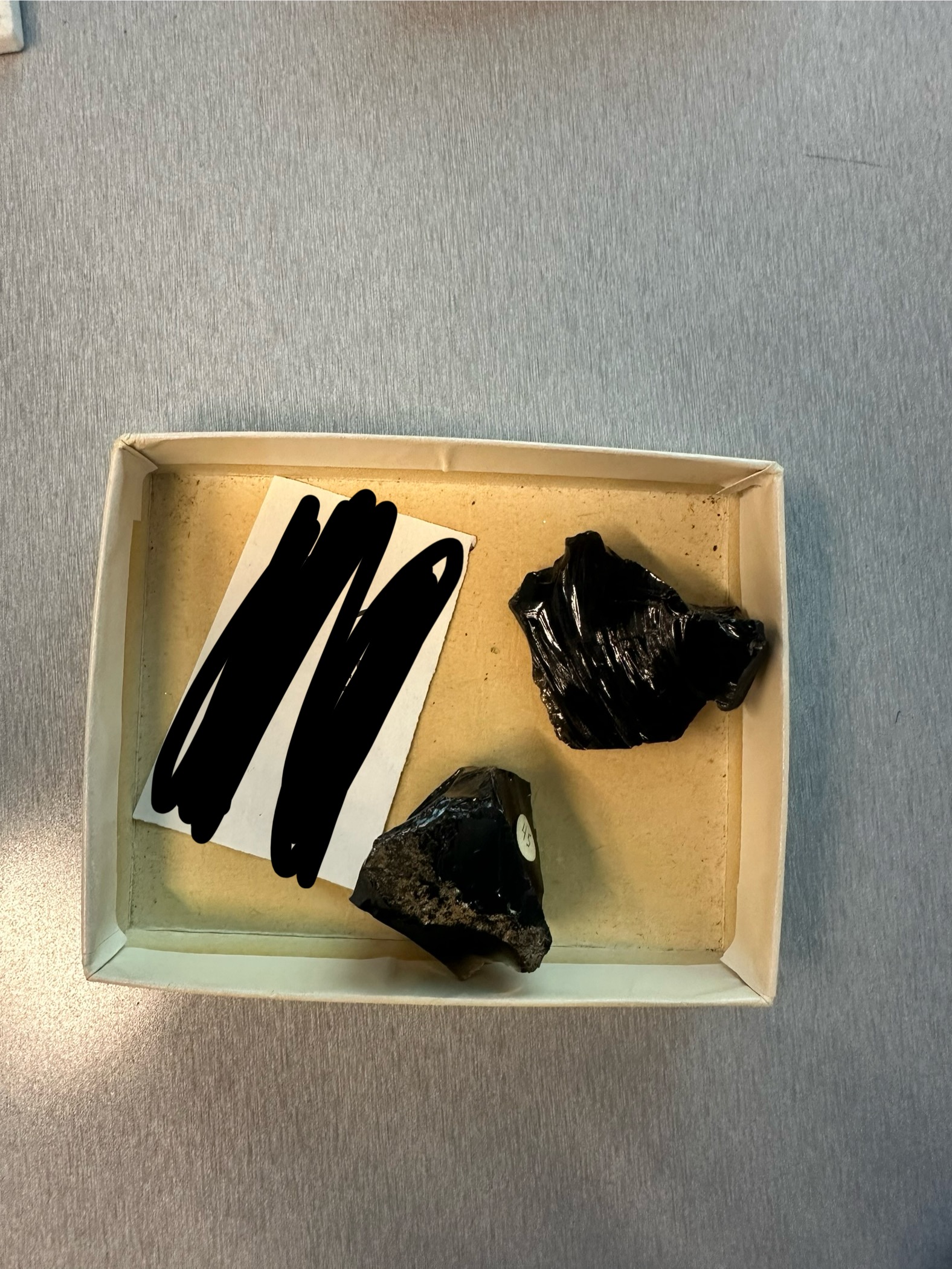
Hardness: ~5–6
Luster: Glassy
Color/Streak: Black to dark brown; no streak (or gray)
Cleavage: None (conchoidal fracture)
Special: Natural volcanic glass
Obsidian
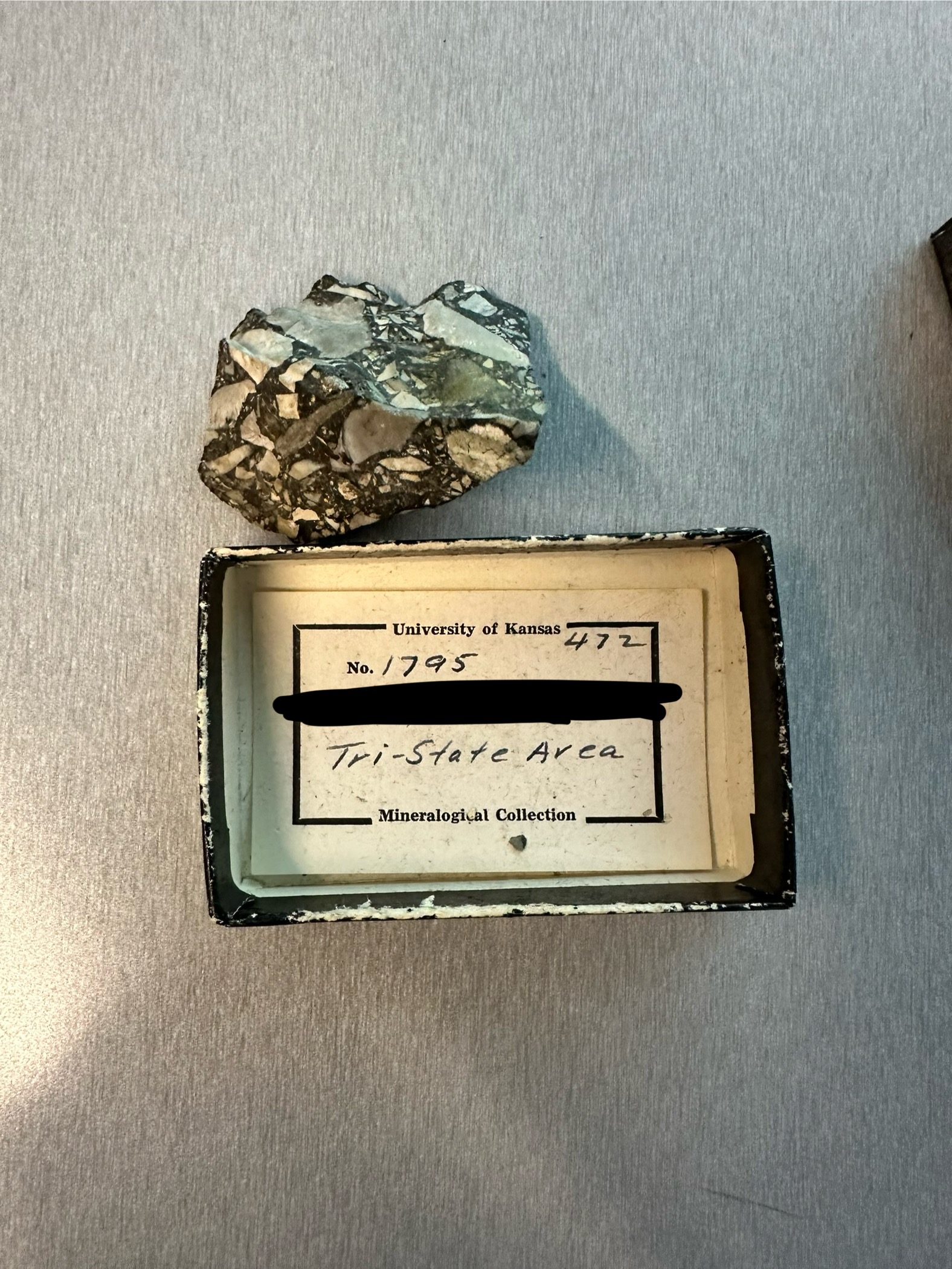
Color: Gray, brown, tan with angular fragments.
Luster: Dull to waxy.
Hardness: ~7 (like quartz).
Fracture: Conchoidal on chert pieces; jagged at breccia boundaries.
Diagnostic: Mixture of angular chert fragments cemented together — looks like a “broken mosaic.”
Chert Breccia
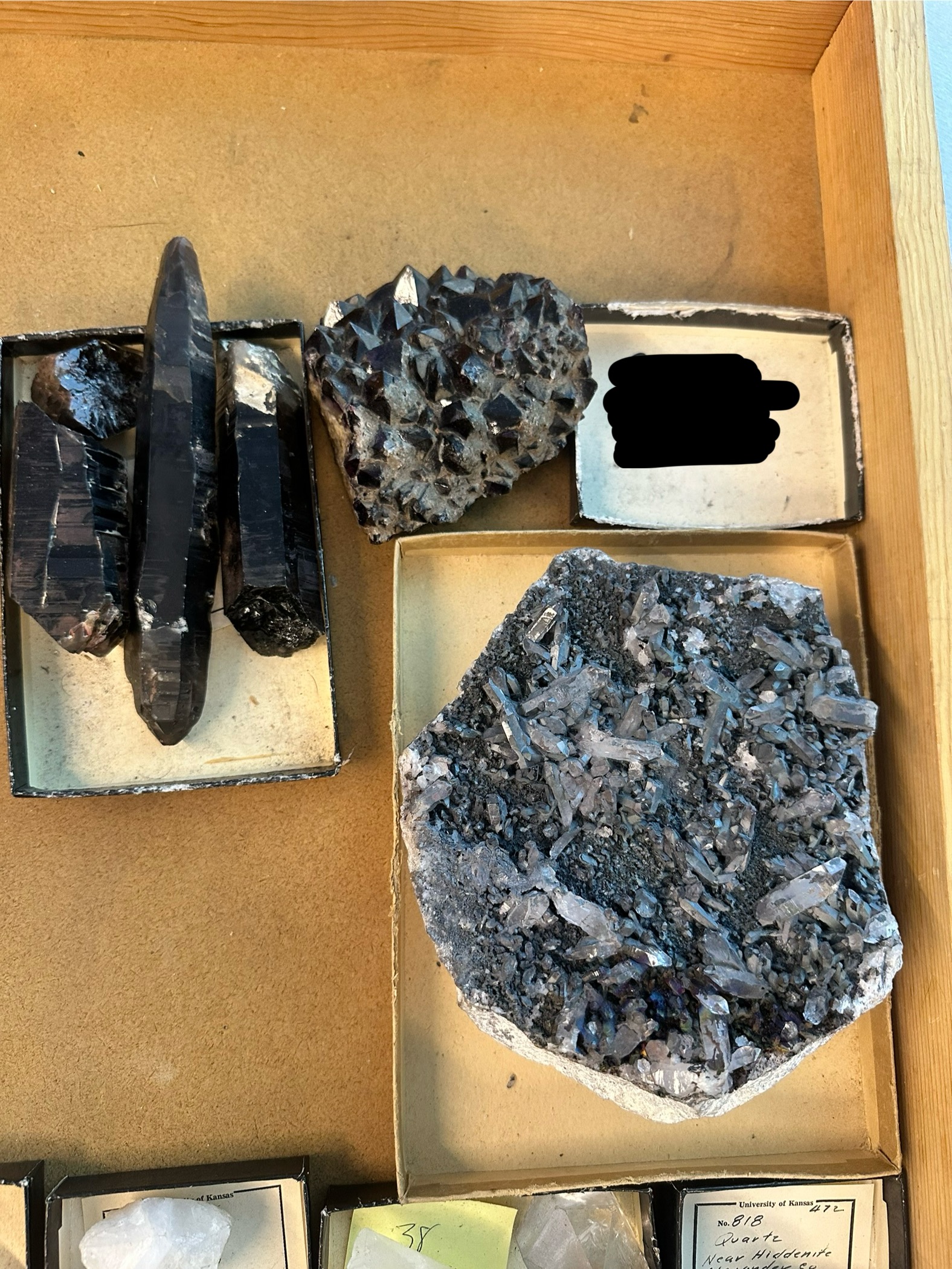
Color: Brown to black smoky tint.
Luster: Vitreous (glassy).
Hardness: 7.
Cleavage: None; conchoidal fracture.
Diagnostic: Transparent to translucent quartz with smoky coloration due to natural radiation.
Smoky Quartz
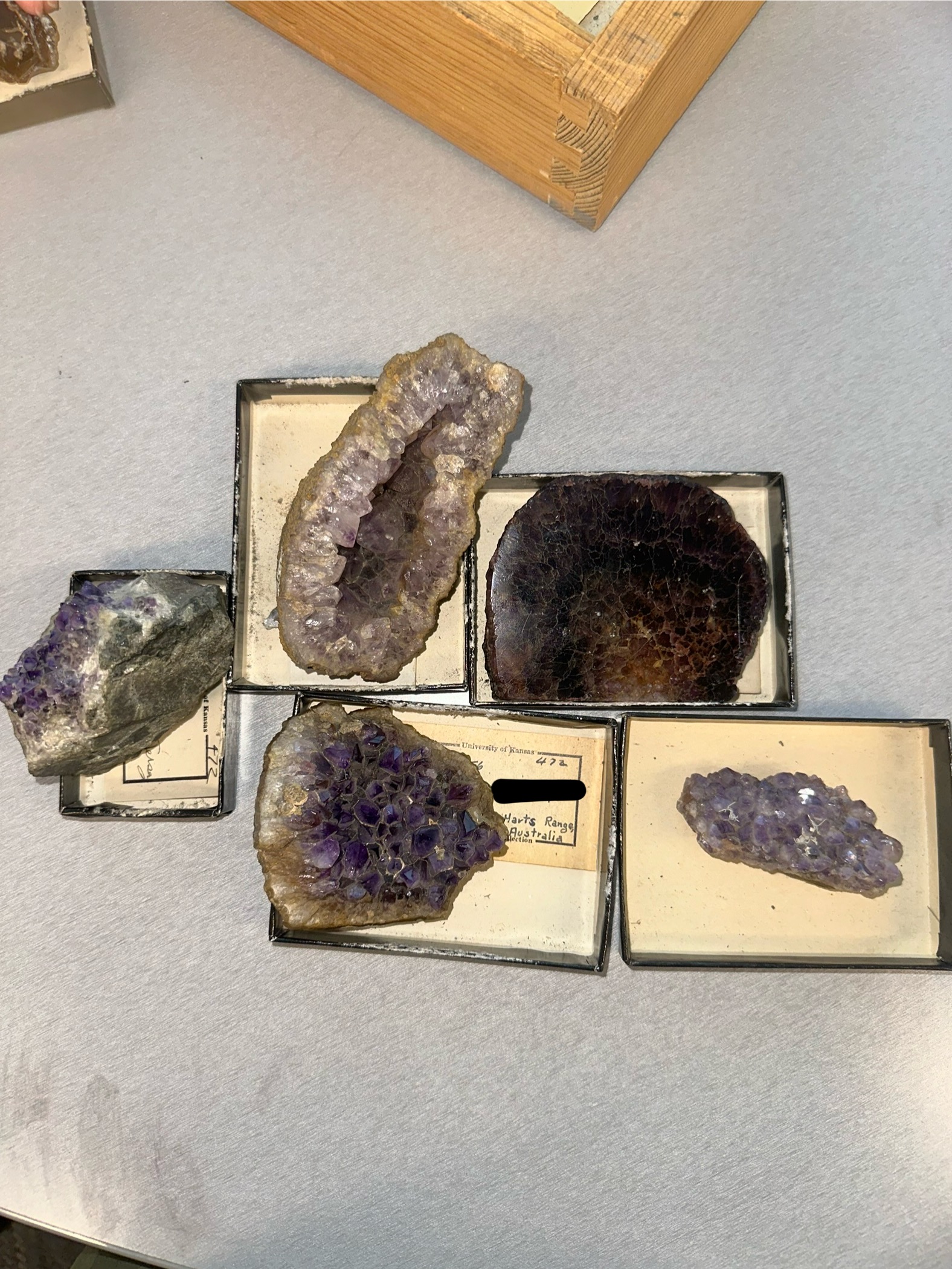
Color: Purple to violet.
Luster: Vitreous.
Hardness: 7.
Cleavage: None; conchoidal fracture.
Diagnostic: Purple quartz variety — color is key.
Amethyst
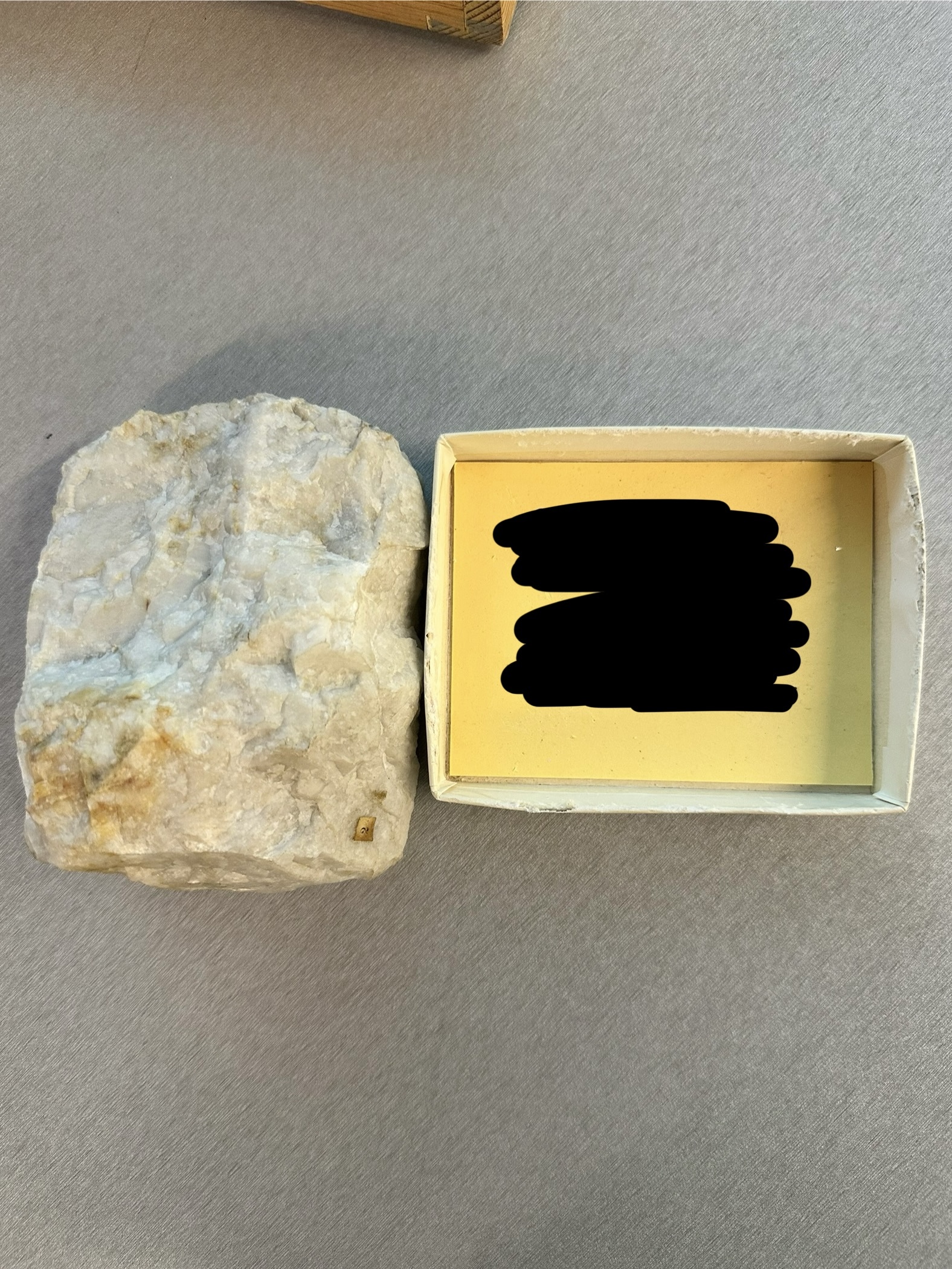
Color: White to cloudy white.
Luster: Vitreous to dull.
Hardness: 7.
Cleavage: None; conchoidal fracture.
Diagnostic: Cloudy white quartz variety — looks “milky.”
Milky Quartz
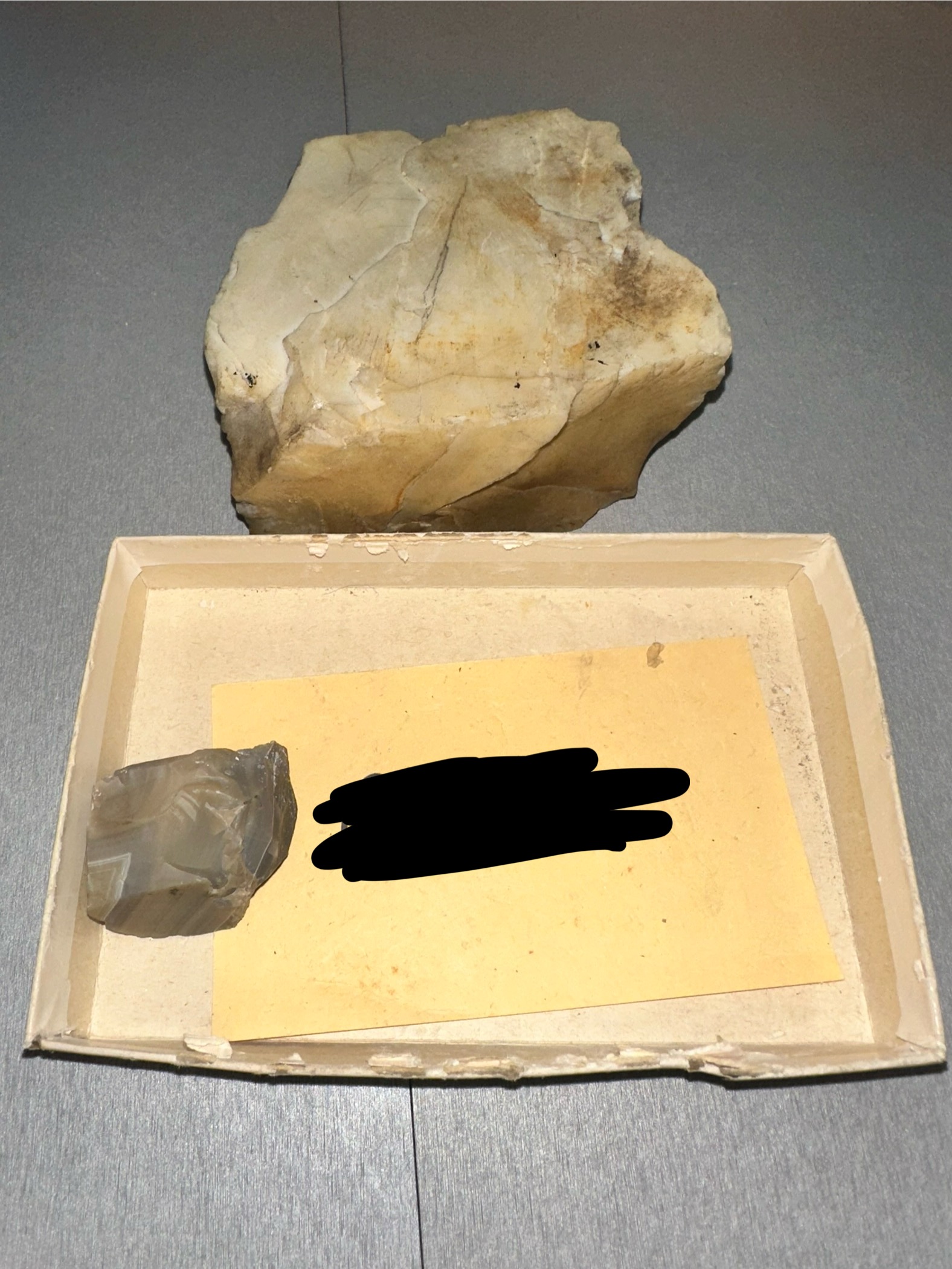
Color: Gray, brown, black, red.
Luster: Dull to waxy.
Hardness: 7.
Fracture: Conchoidal.
Diagnostic: Microcrystalline quartz — very hard, breaks like glass.
Chert
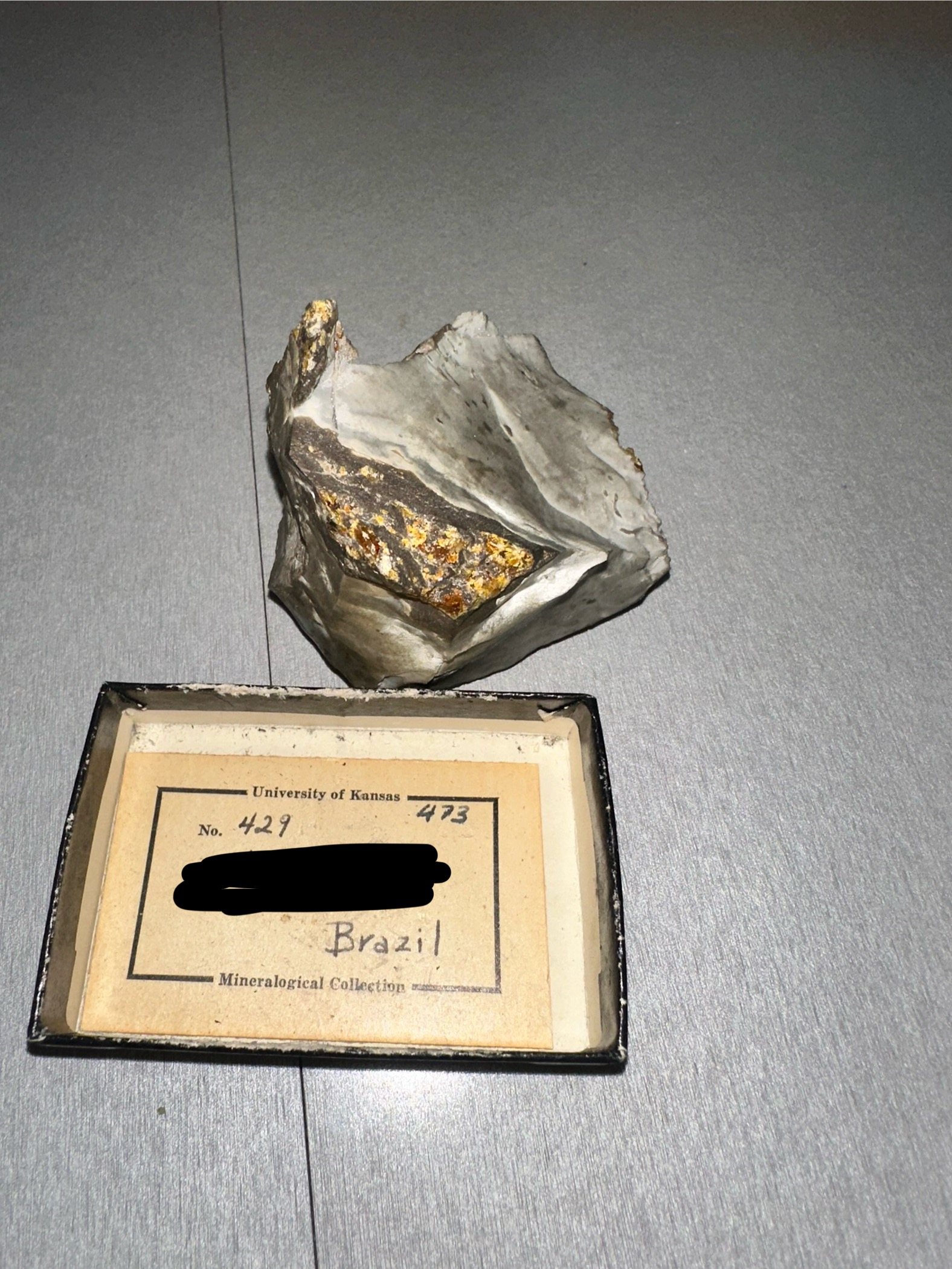
Color: Banded — many colors.
Luster: Waxy to vitreous.
Hardness: 7.
Cleavage: None.
Diagnostic: Banded chalcedony (microcrystalline quartz) — concentric or wavy stripes.
Agate
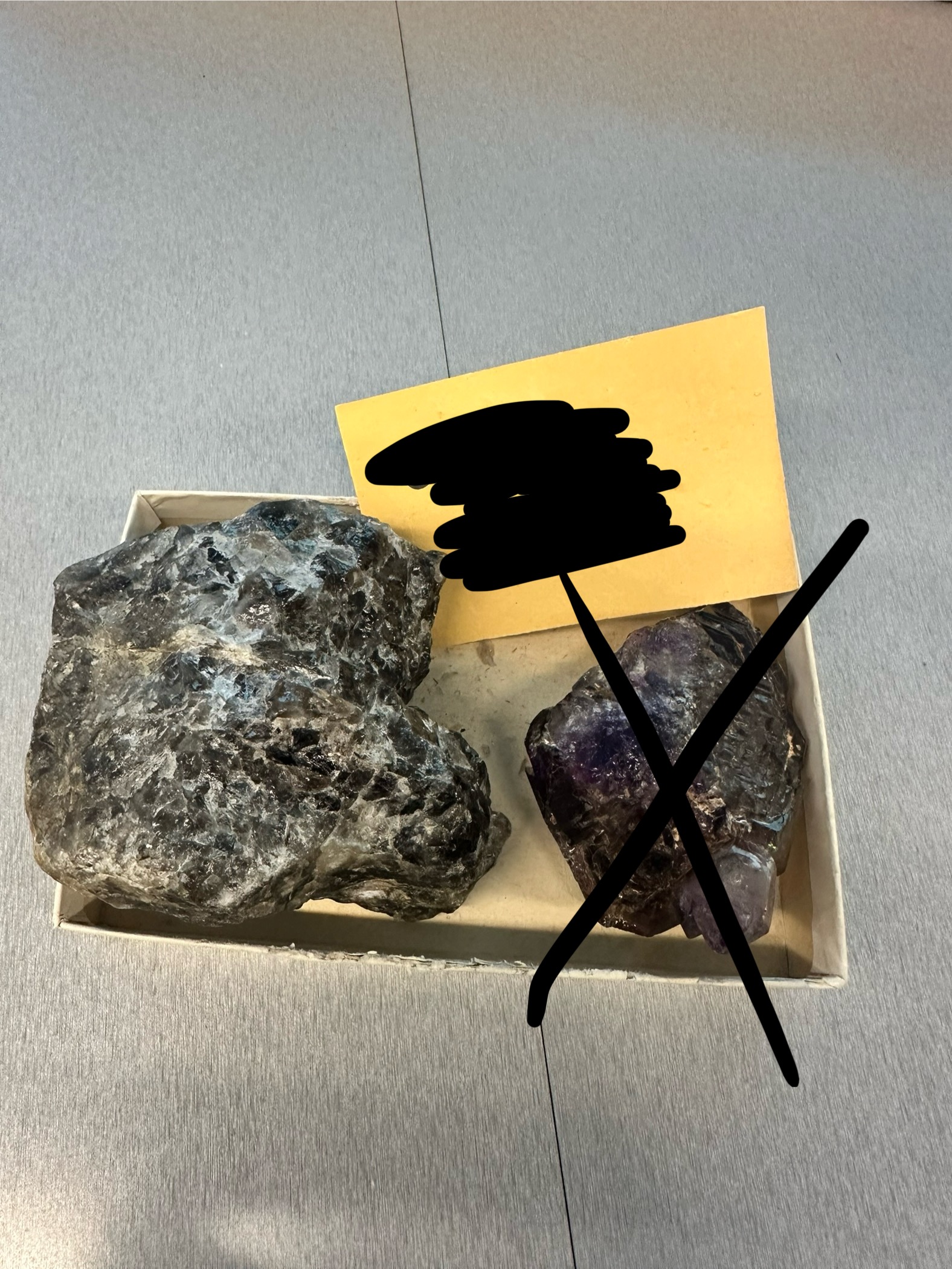
Color: Brown to black smoky tint.
Luster: Vitreous (glassy).
Hardness: 7.
Cleavage: None; conchoidal fracture.
Diagnostic: Transparent to translucent quartz with smoky coloration due to natural radiation.
Smoky Quartz
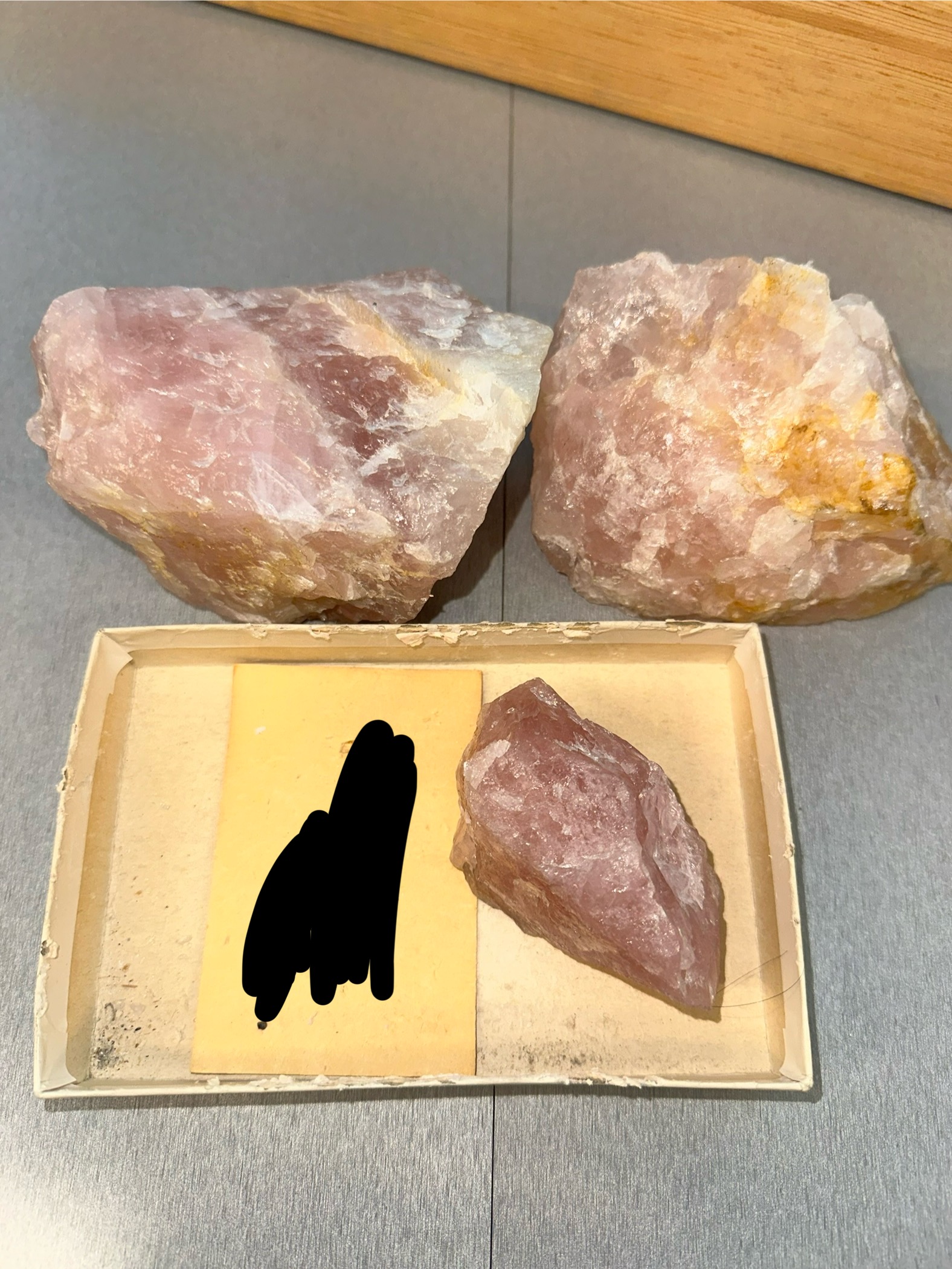
Color: Pink to rose-red.
Luster: Vitreous.
Hardness: 7.
Cleavage: None; conchoidal fracture.
Diagnostic: Pink quartz variety — usually massive, not crystals.
Rose Quartz
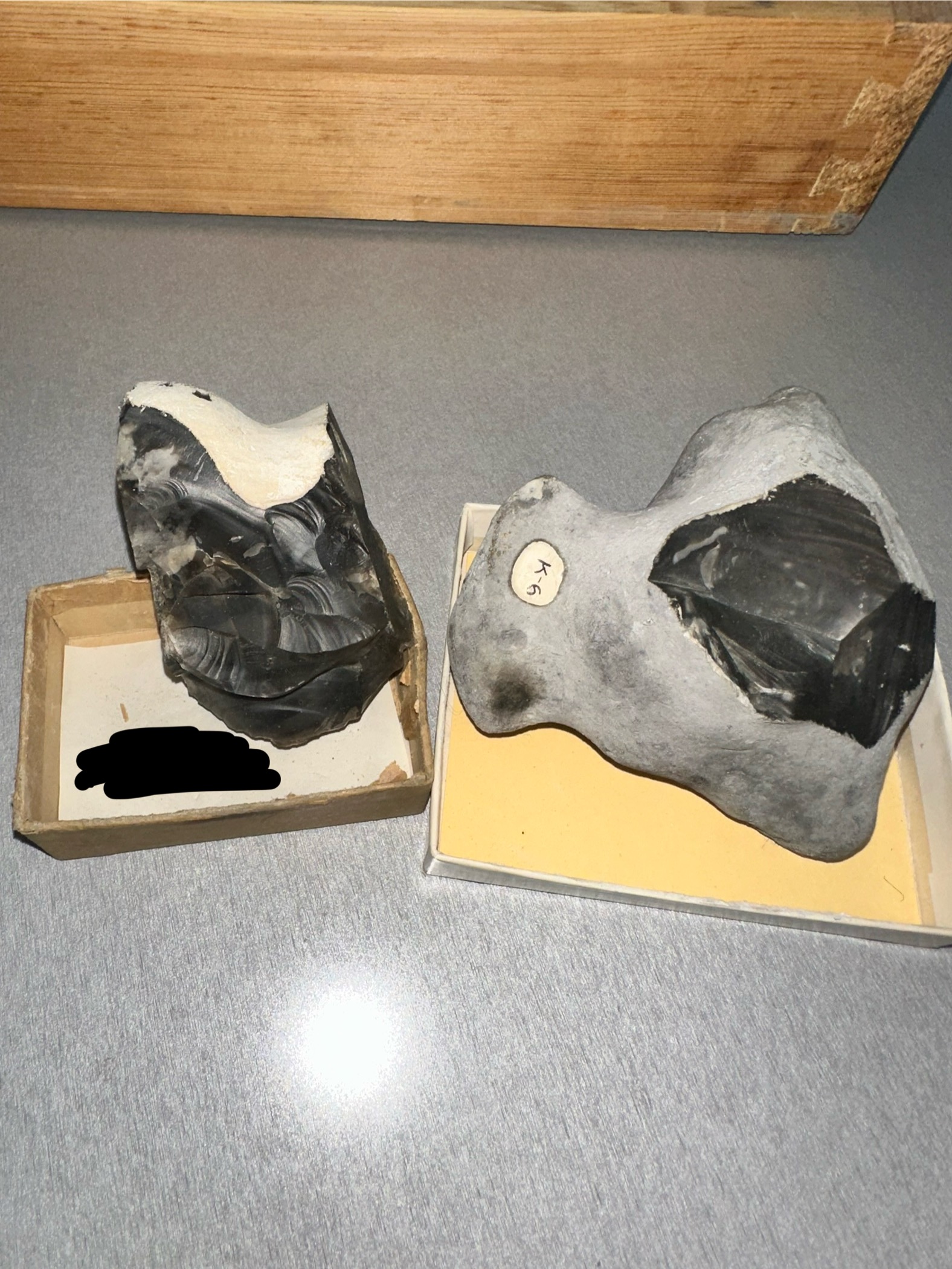
Color: Dark gray to black.
Luster: Dull to waxy.
Hardness: 7.
Fracture: Conchoidal.
Diagnostic: Dark, fine-grained chert used historically for tools and fire-starting.
Flint
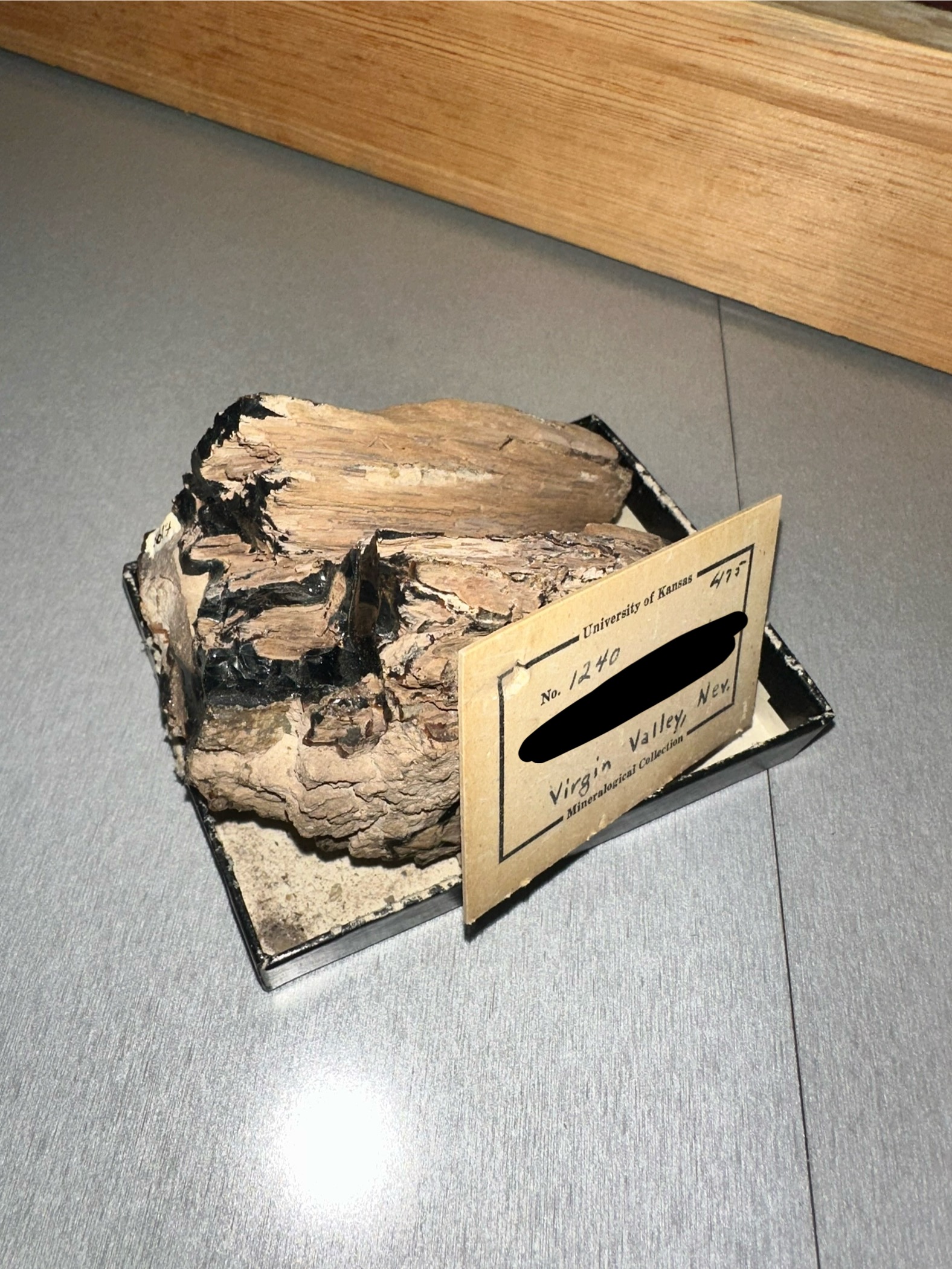
Color: Brown, tan, sometimes rainbow/iridescent.
Luster: Vitreous.
Hardness: ~5.5–6.5.
Cleavage: None.
Diagnostic: Petrified wood replaced by opal — retains wood structure but with opal’s appearance.
Opalized Wood
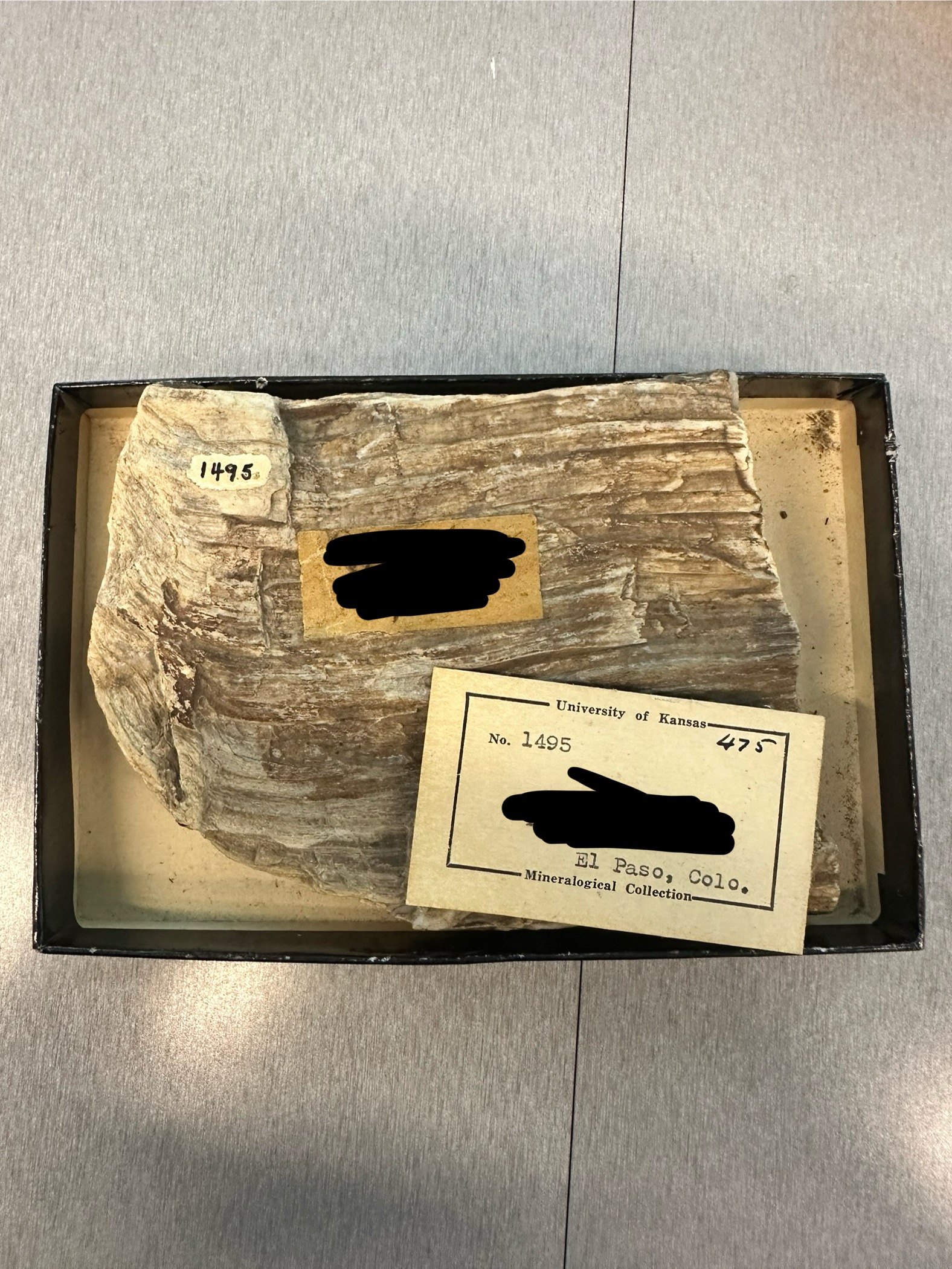
Color: Brown, tan, or multi-colored with possible iridescence.
Luster: Vitreous to waxy.
Hardness: ~5.5–6.5.
Cleavage: None.
Diagnostic: Fossil wood replaced by opal (hydrated silica); keeps tree-ring texture but has opal’s look.
Opal Petrified Wood
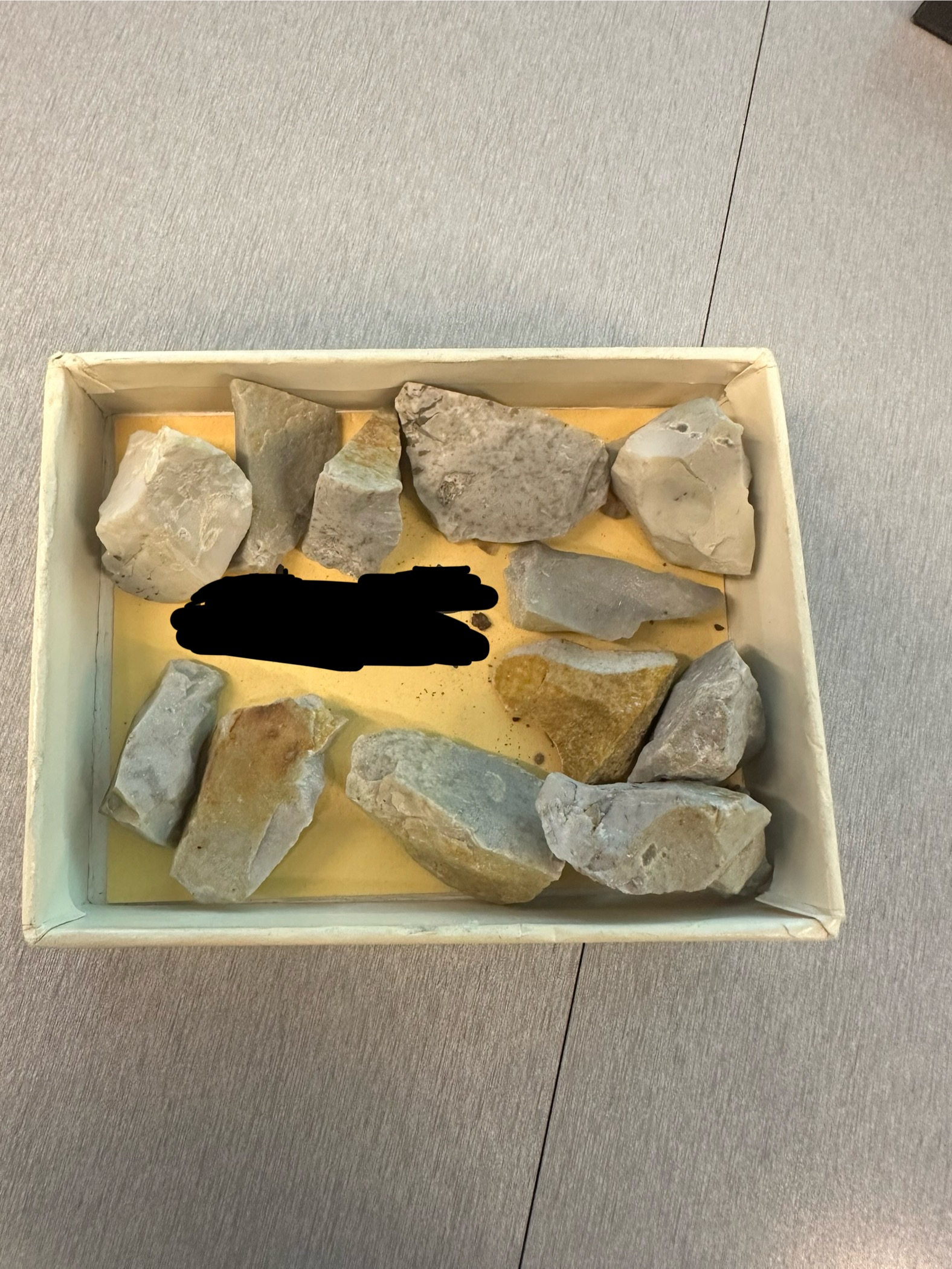
Color: Gray, brown, black, red.
Luster: Dull to waxy.
Hardness: 7.
Fracture: Conchoidal.
Diagnostic: Microcrystalline quartz — very hard, breaks like glass.
Chert
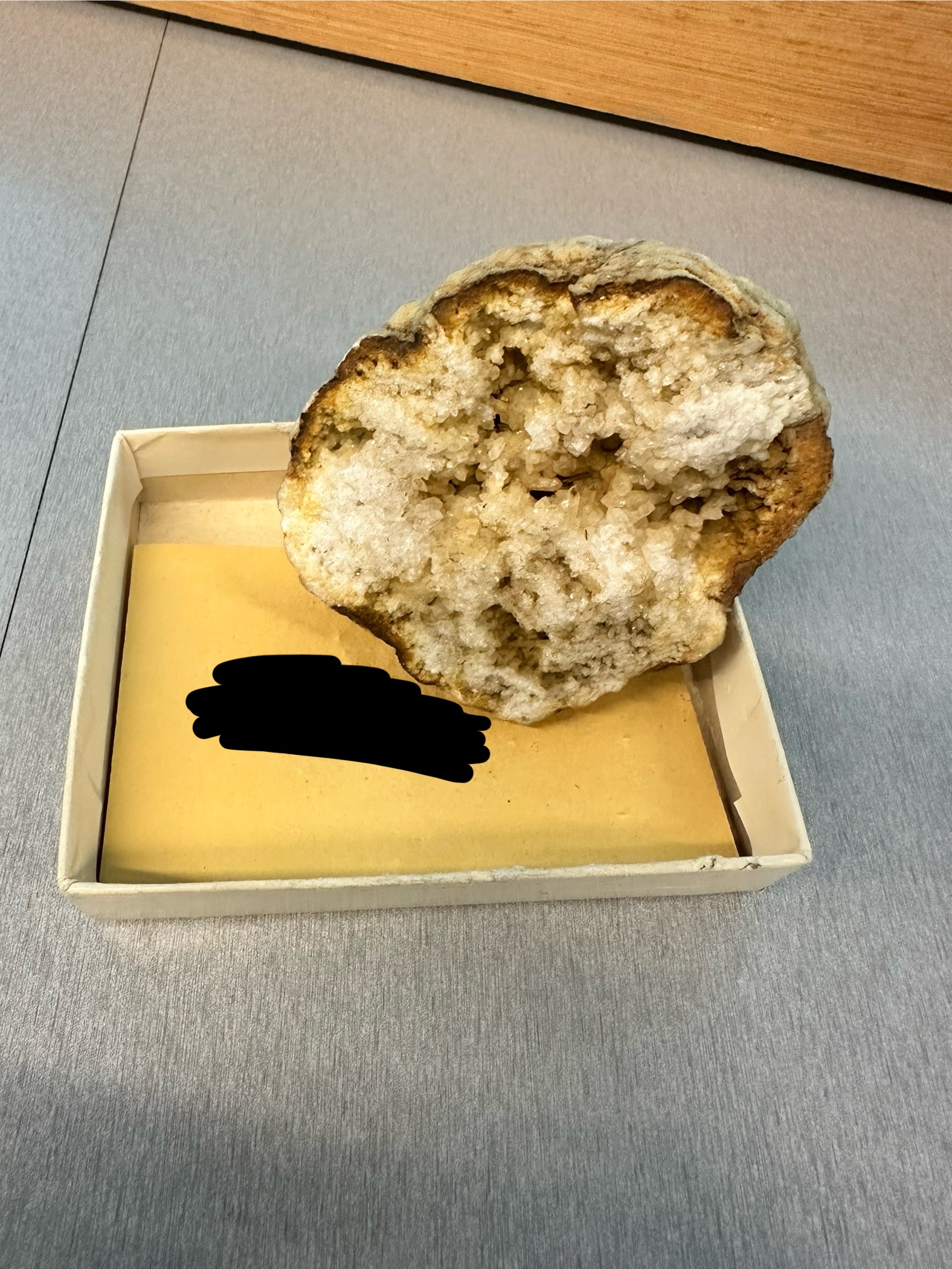
Color: Outer rind gray/brown, interior lined with quartz or calcite crystals of various colors.
Luster: Dull outside, vitreous inside.
Hardness: Depends on inner mineral (quartz ~7).
Cleavage: None.
Diagnostic: Hollow nodule with a crystalline interior — you see a “crust with sparkles inside.”
Geode
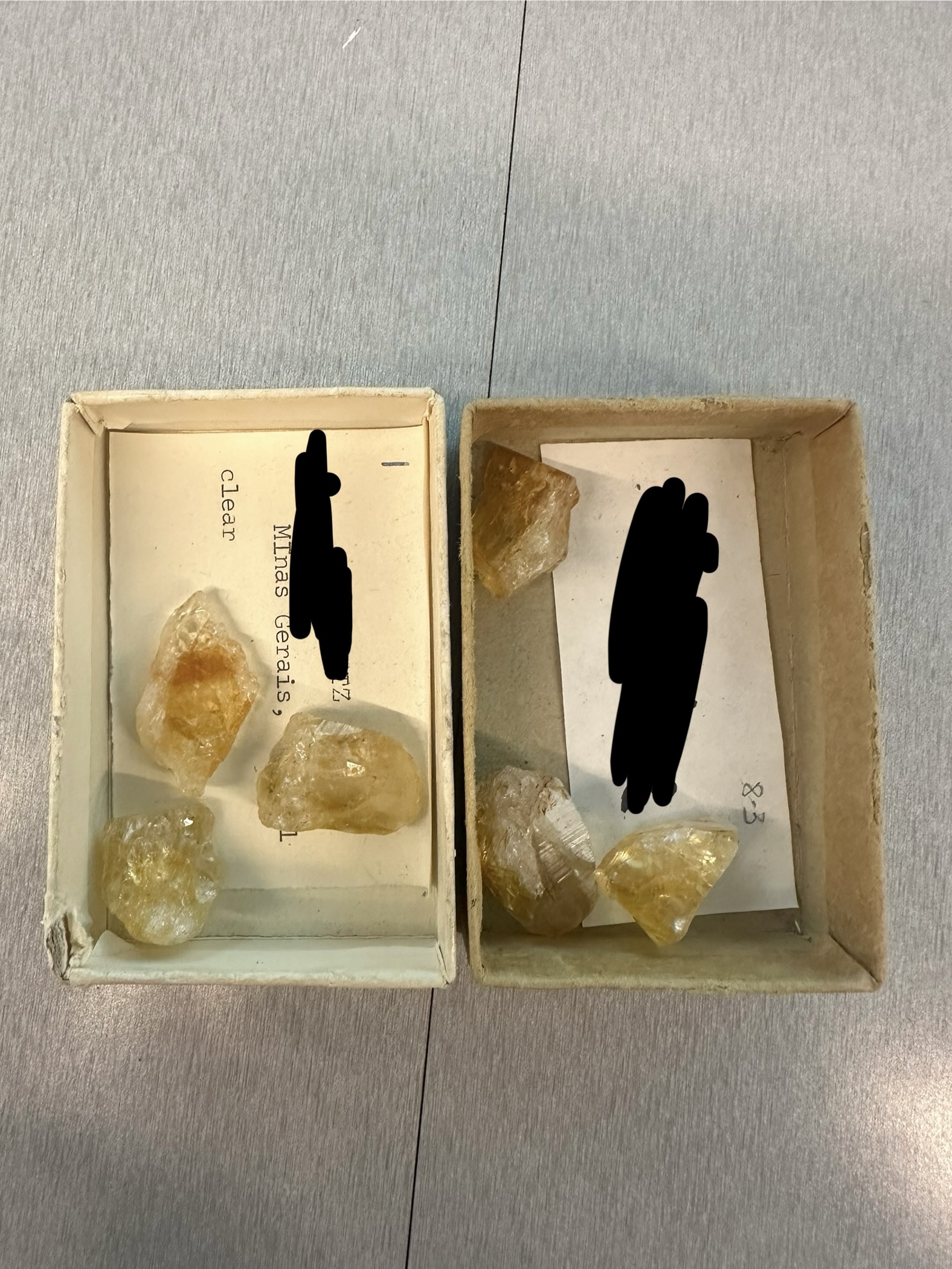
Color: Yellow to orange quartz.
Luster: Vitreous.
Hardness: 7.
Cleavage: None; conchoidal fracture.
Diagnostic: Transparent yellow quartz variety — color from iron.
Citrine
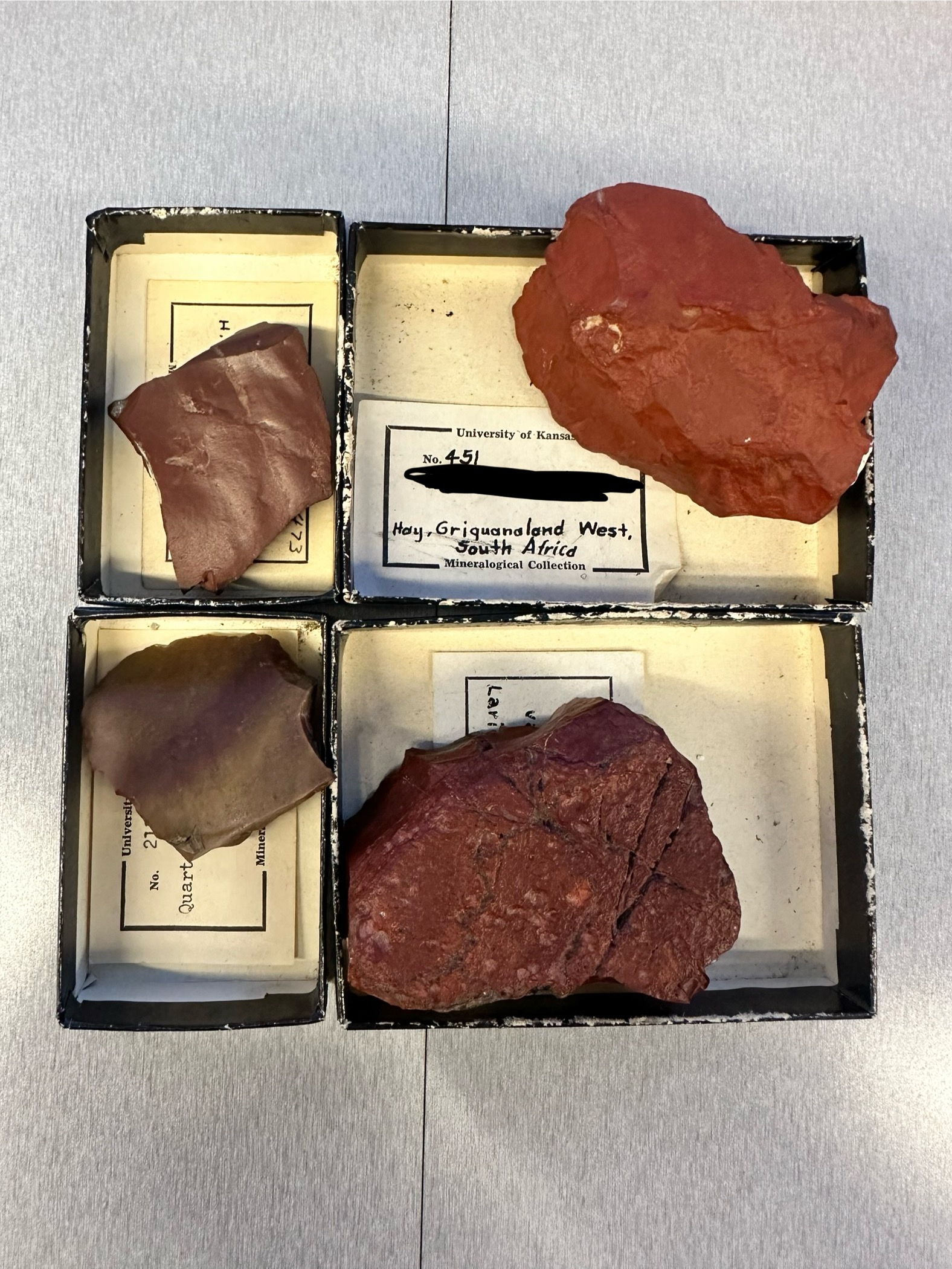
Color: Red, brown, yellow, green; opaque.
Luster: Dull to waxy.
Hardness: 7.
Cleavage: None; conchoidal fracture.
Diagnostic: Opaque, fine-grained chalcedony; uniform color or mottled
Jasper
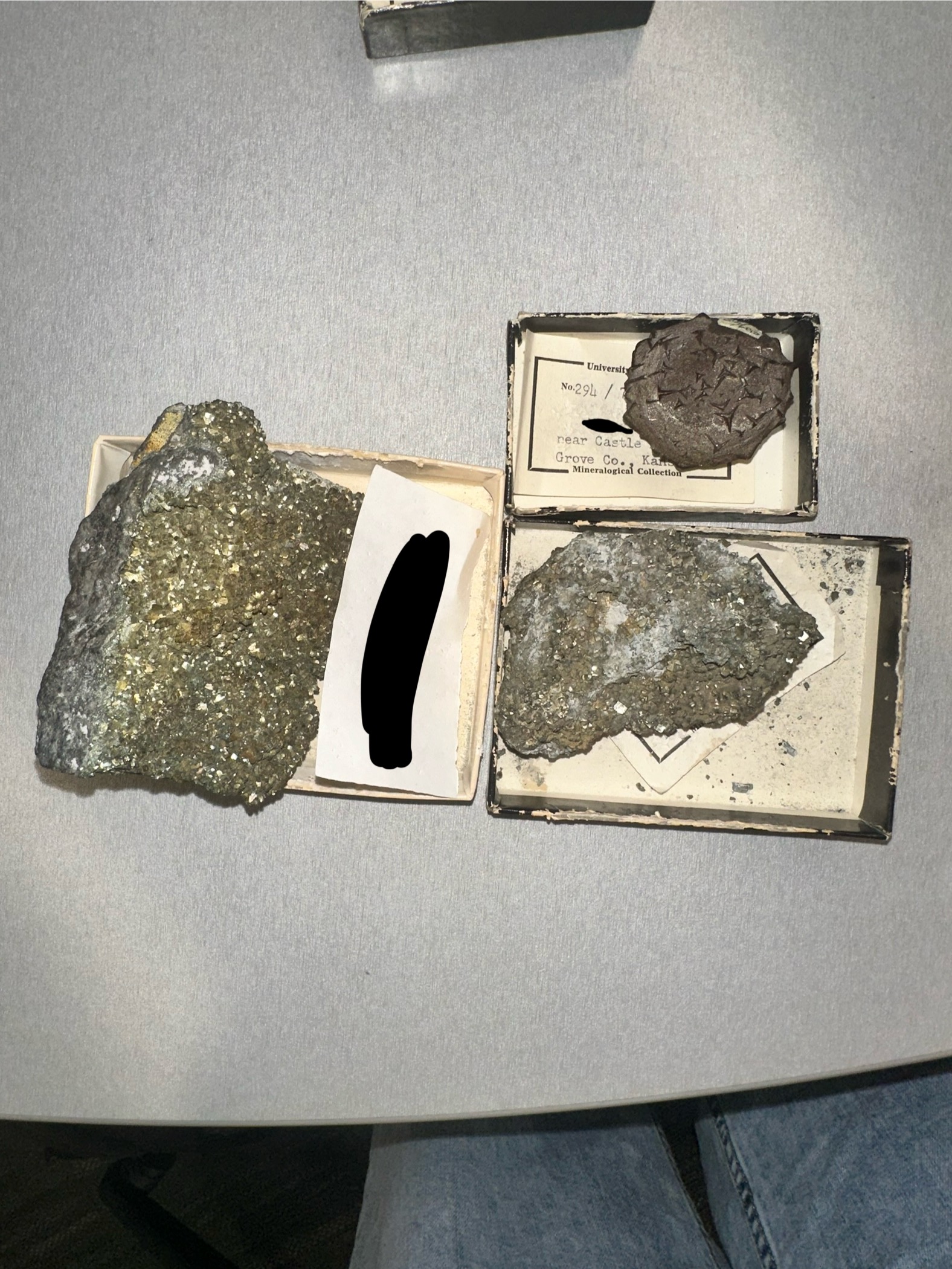
Color: Pale brass-yellow, tarnishes dark.
Luster: Metallic.
Hardness: 6–6.5.
Cleavage: Good on {010}.
Diagnostic: Often tabular or cockscomb aggregates; lighter and more brittle than pyrite.
Marcasite
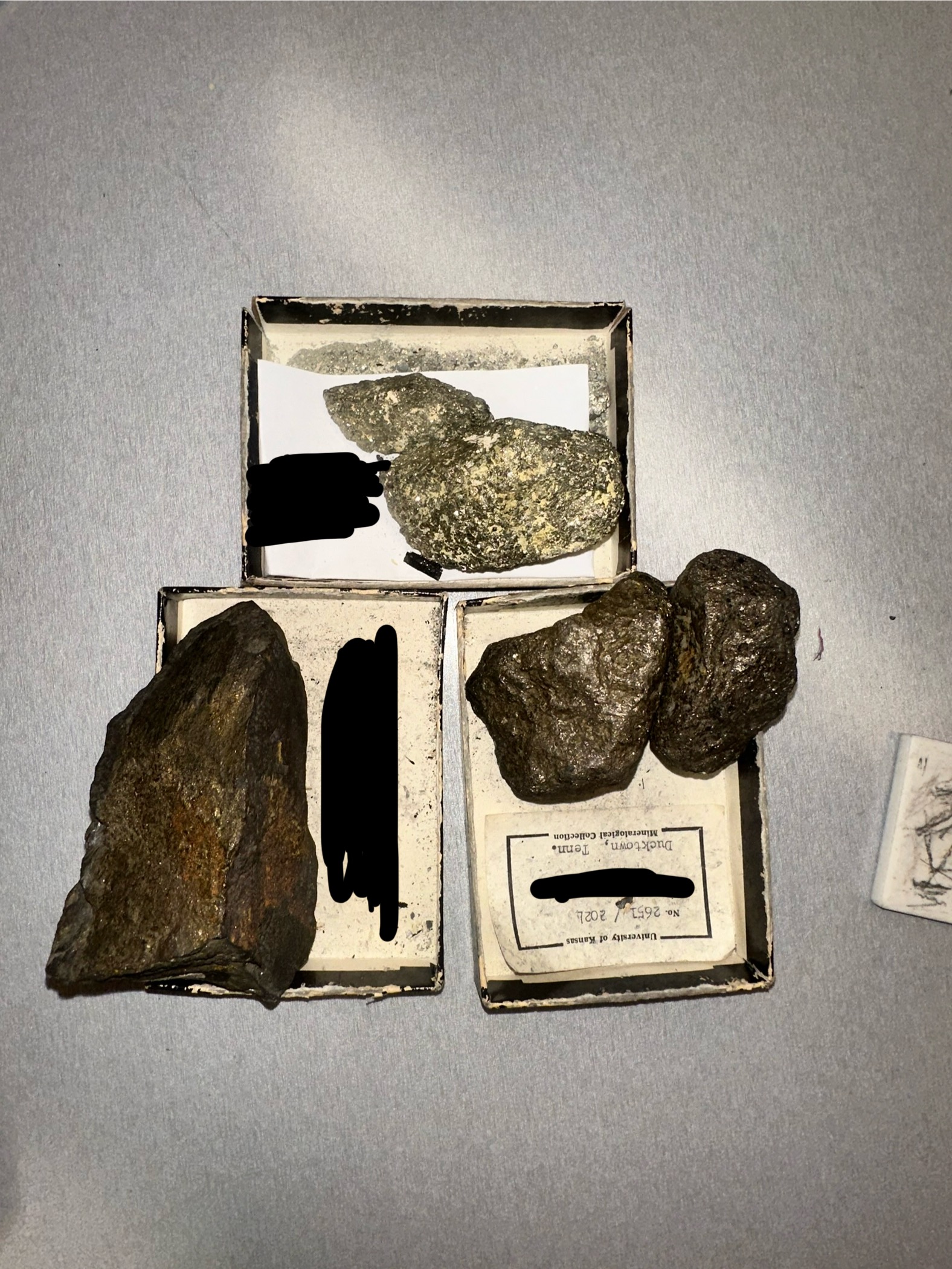
Color: Bronze to brownish-bronze.
Luster: Metallic.
Hardness: 3.5–4.5.
Cleavage: Poor.
Diagnostic: Magnetic (weak to strong); bronze color; streak gray-black.
Pyrrhotite
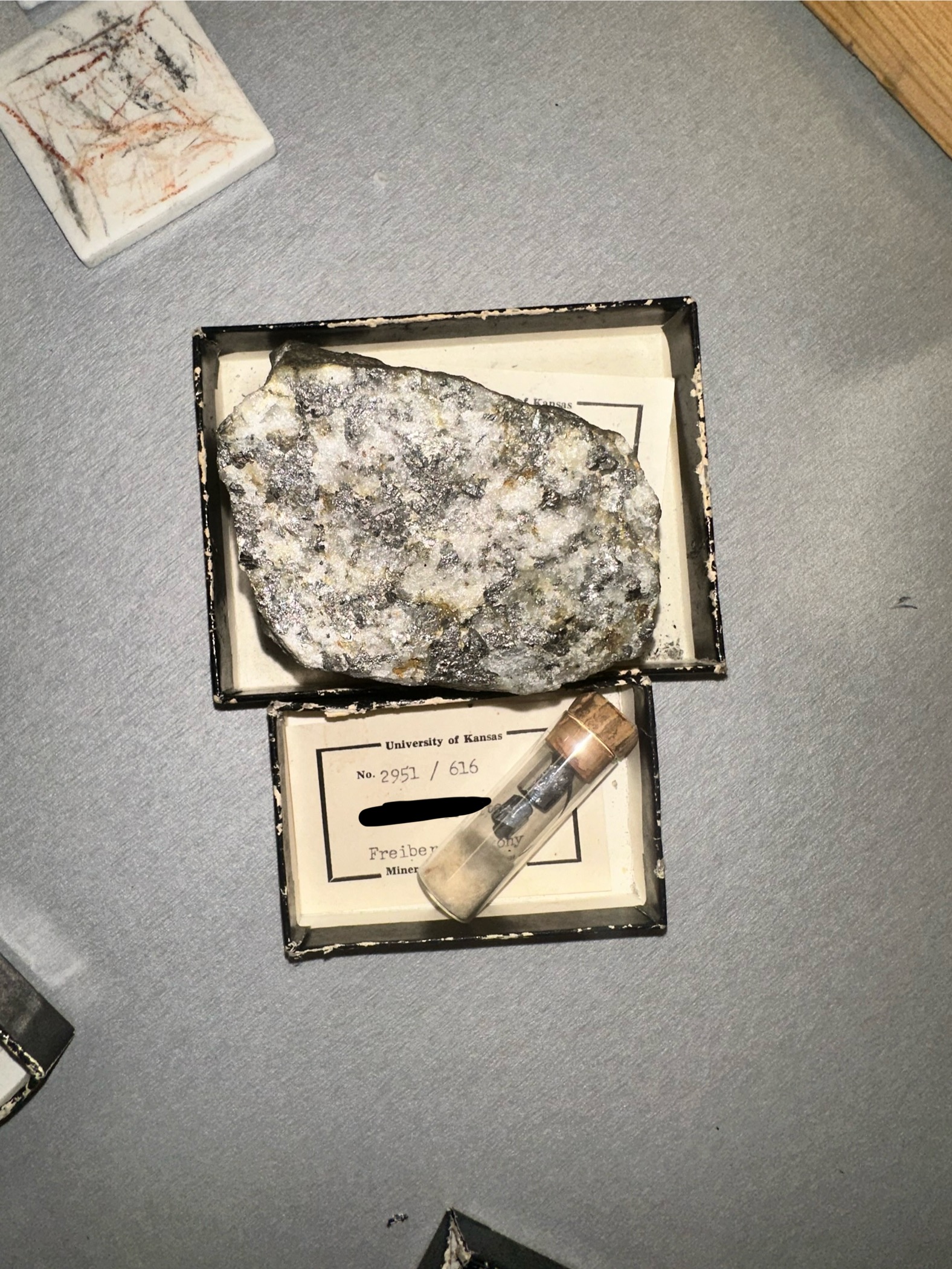
Color: Steel-gray to silver-white.
Luster: Metallic.
Hardness: 5.5–6.
Cleavage: Distinct {010}.
Diagnostic: Garlic odor when struck or heated; wedge-shaped crystals.
Arsenopyrite
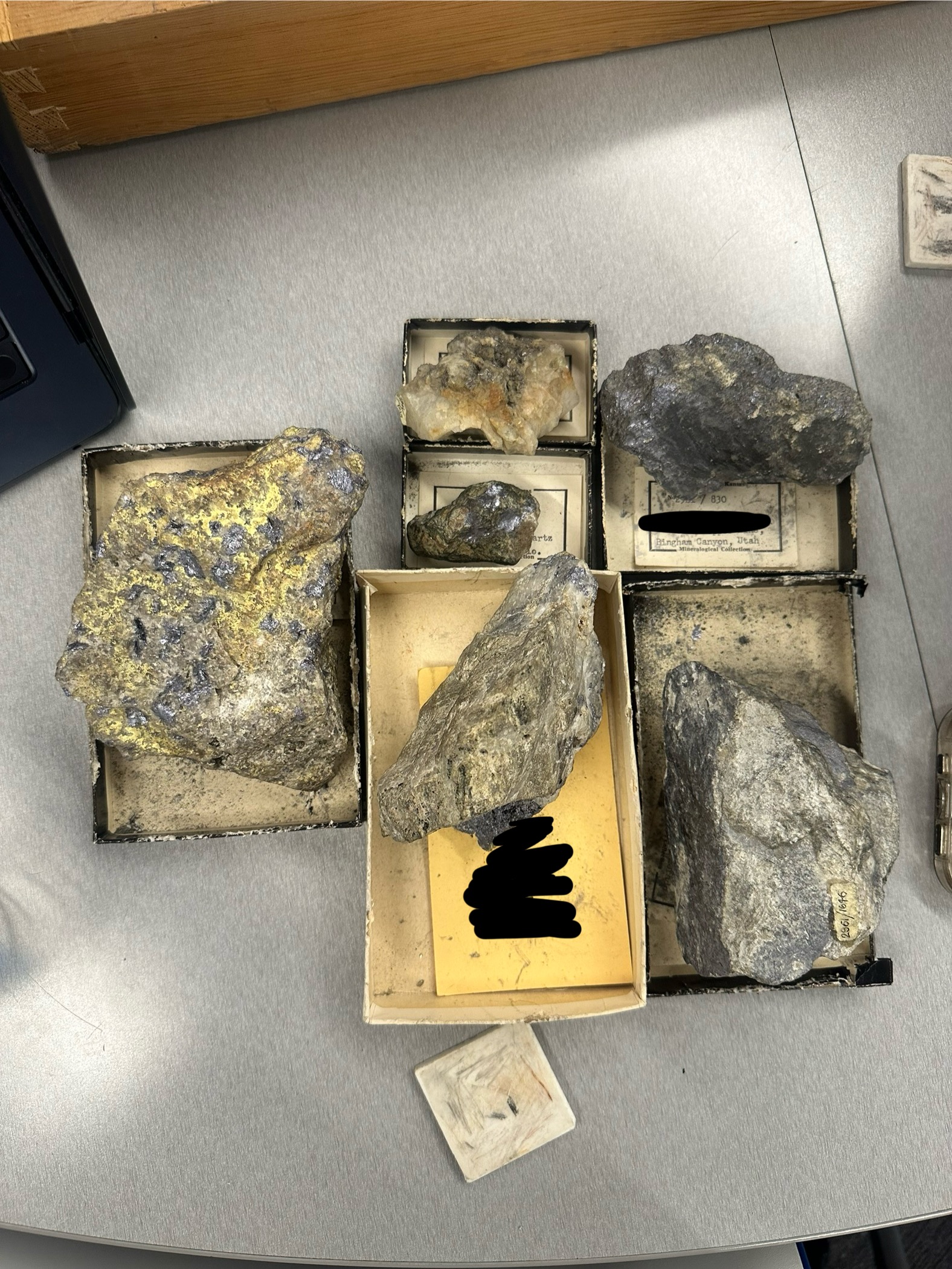
Color: Lead-gray with bluish tint.
Luster: Metallic.
Hardness: 1–1.5.
Cleavage: Perfect basal {0001}.
Diagnostic: Greasy feel; marks paper; resembles graphite but with bluish tinge.
Molybdendite
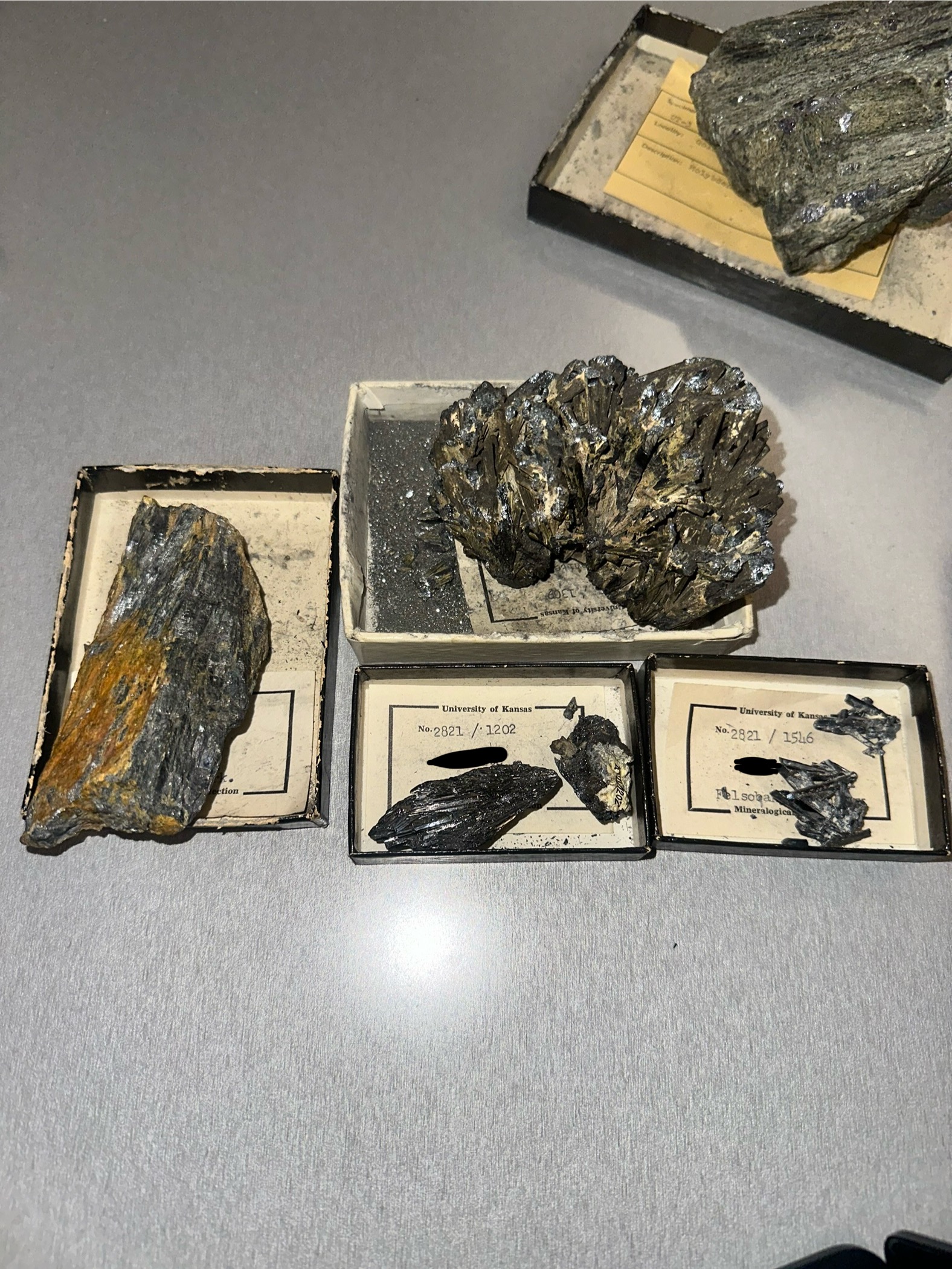
Color: Lead-gray to steel-gray.
Luster: Metallic.
Hardness: 2.
Cleavage: Perfect {010}.
Diagnostic: Elongate prismatic crystals with striations; soft and dense antimony sulfide.
Stibnite
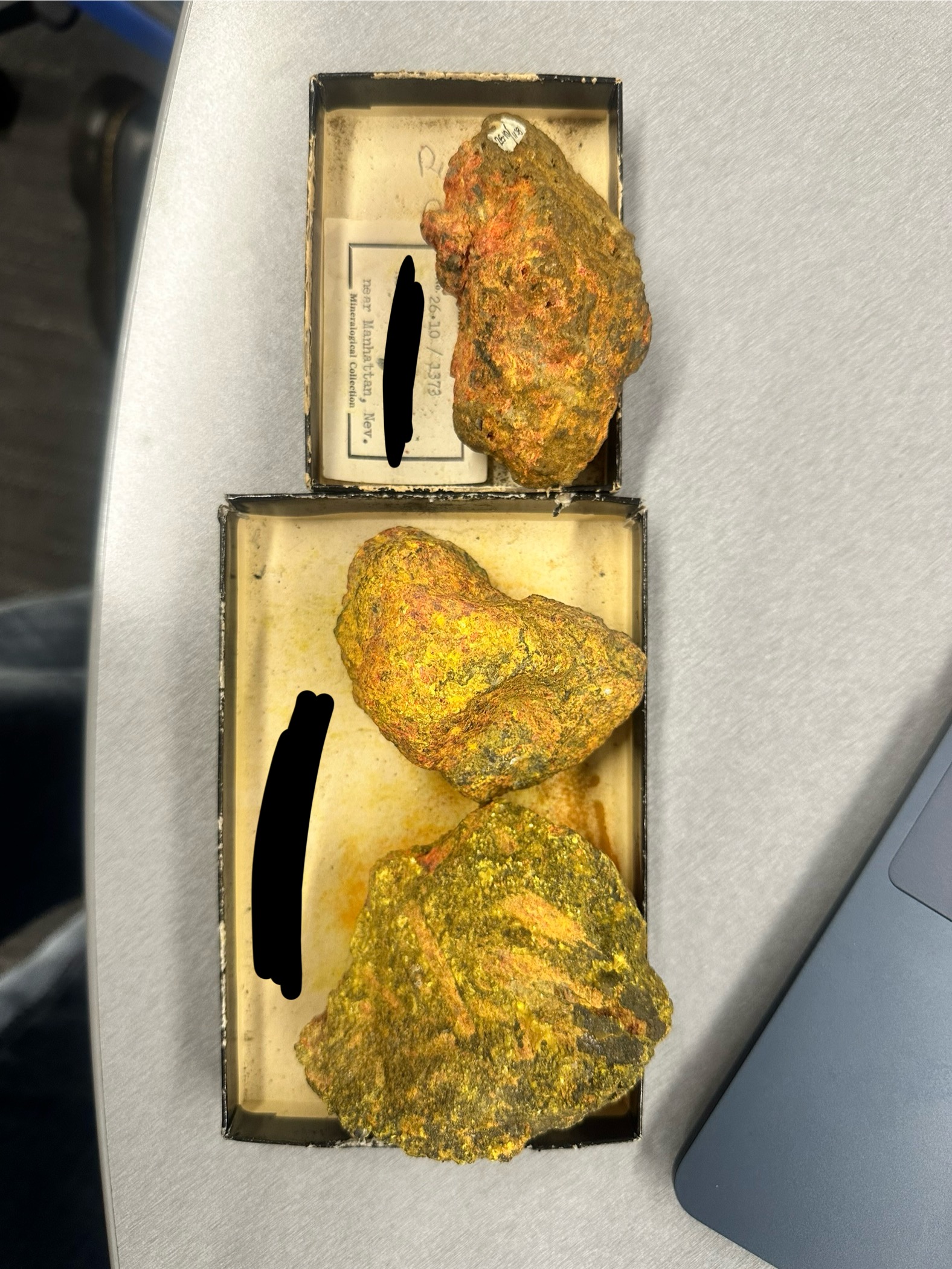
Color: Bright lemon-yellow to orange-yellow.
Luster: Resinous to pearly.
Hardness: 1.5–2.
Cleavage: Perfect {010}.
Diagnostic: Soft, sectile, yellow arsenic sulfide with a garlic odor when heated.
Orpiment
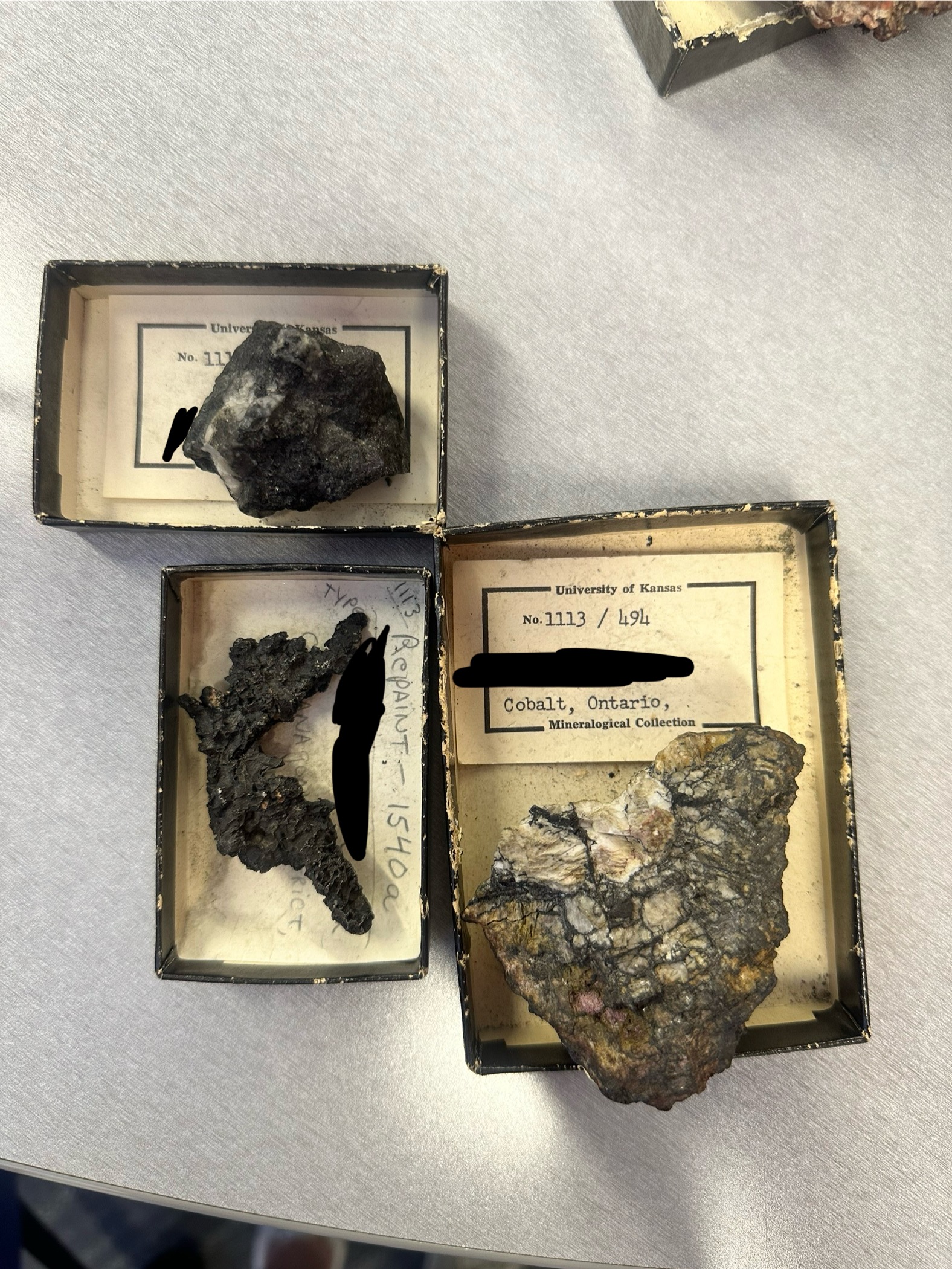
Color: Silvery-white metallic.
Luster: Metallic.
Hardness: 2.5–3.
Cleavage: None.
Diagnostic: Malleable native metal; bright metallic silver color; high density.
Silver
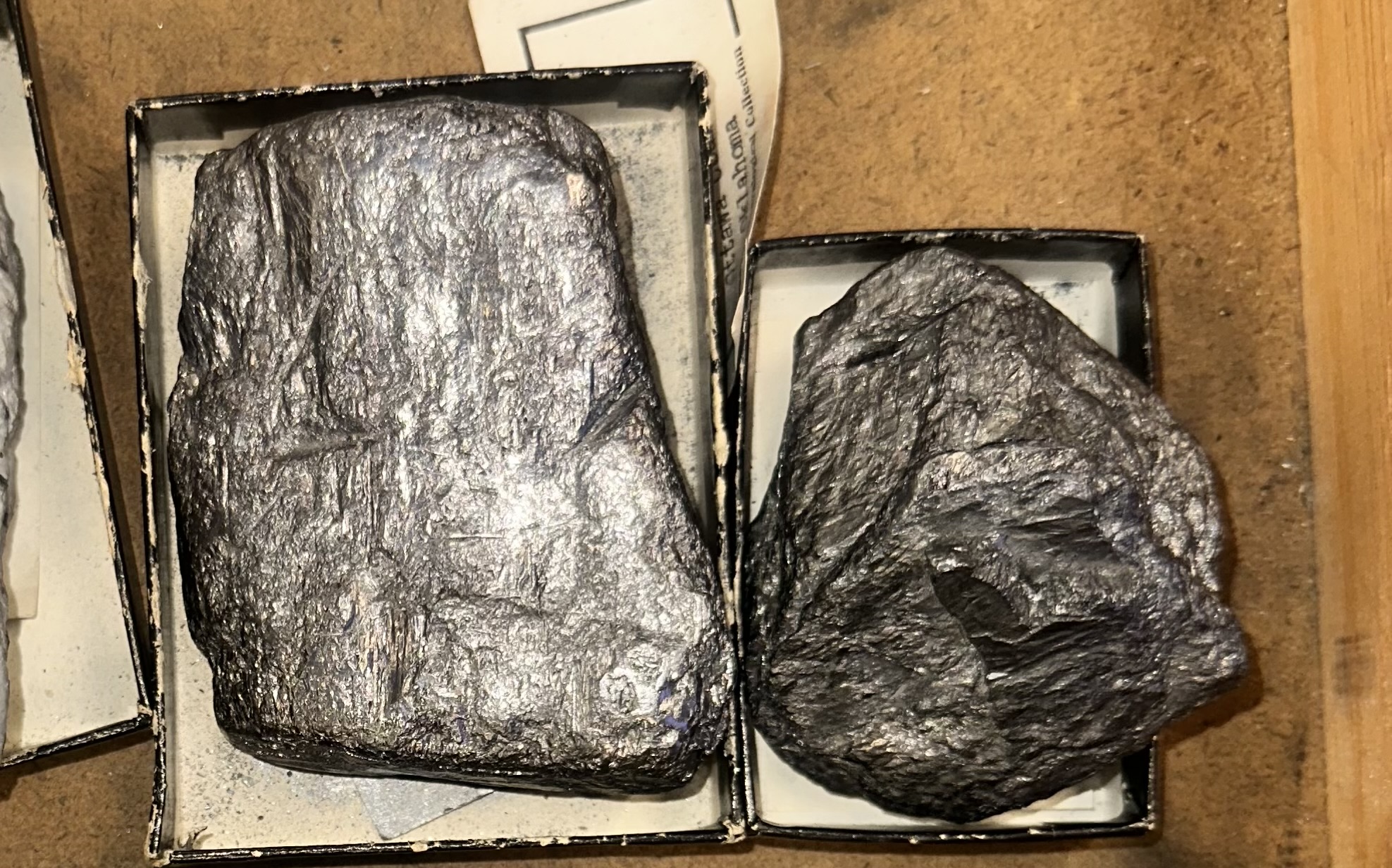
Color: Steel-gray to black.
Luster: Metallic to dull.
Hardness: 1–2.
Cleavage: Perfect basal {0001}.
Diagnostic: Marks paper easily; greasy feel; low specific gravity compared to metallic look.
Graphite
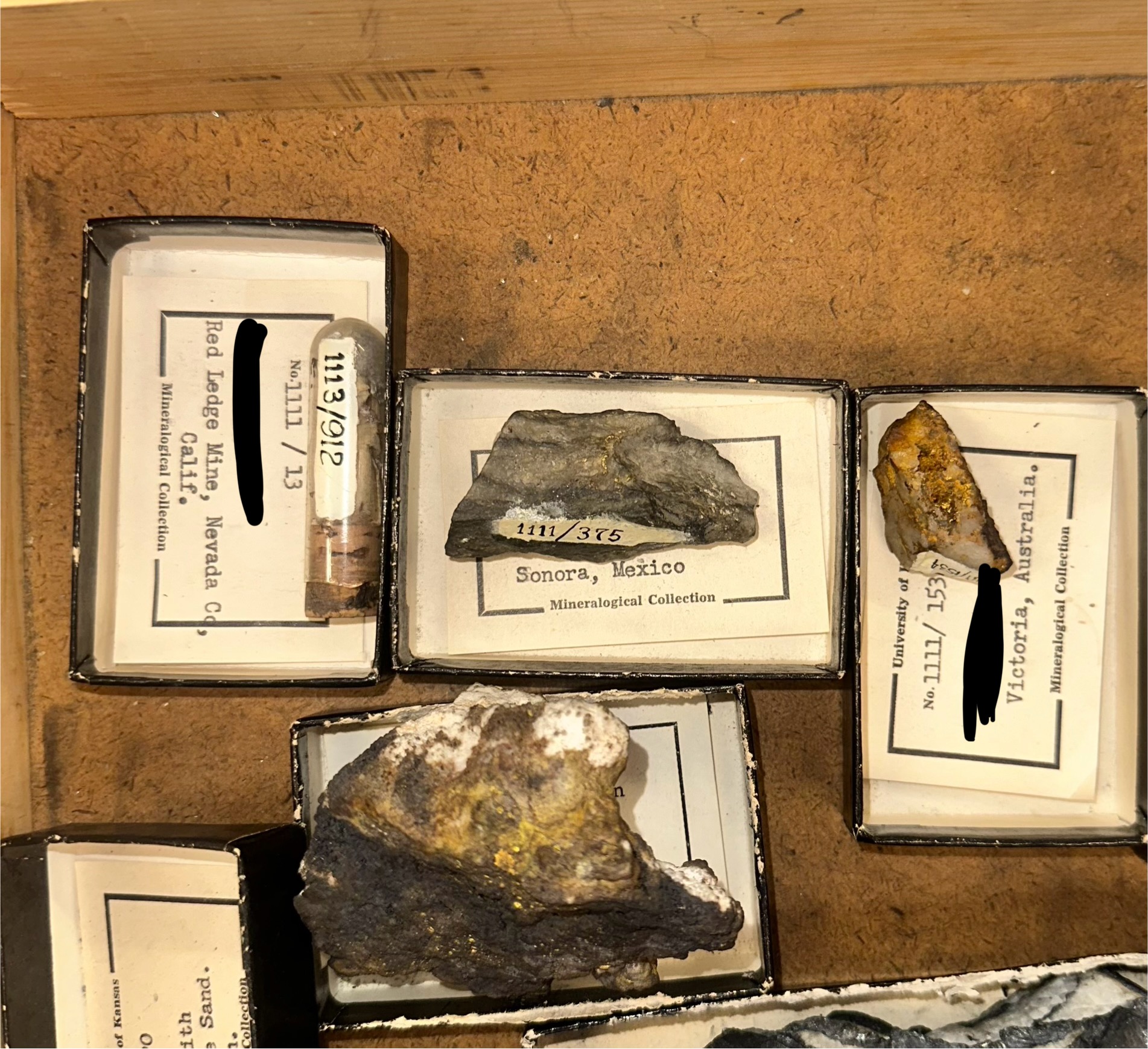
Color: Golden yellow.
Luster: Metallic.
Hardness: 2.5–3.
Cleavage: None.
Diagnostic: Malleable native metal; yellow streak; high density.
Gold
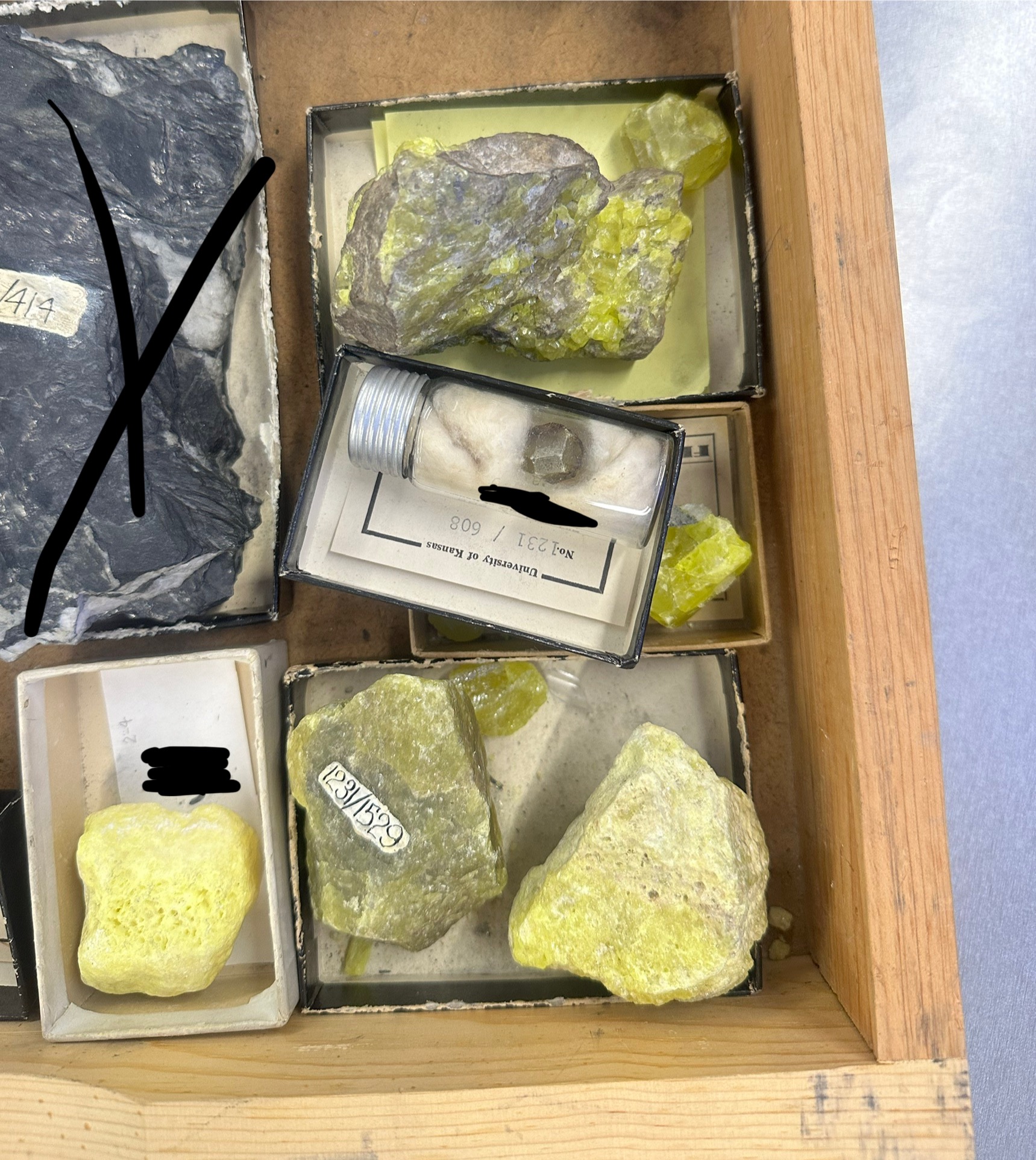
Color: Bright yellow.
Luster: Resinous to greasy.
Hardness: 1.5–2.5.
Cleavage: Poor.
Diagnostic: Light, low-density crystals; burns with blue flame and smell of SO₂.
Sulfur
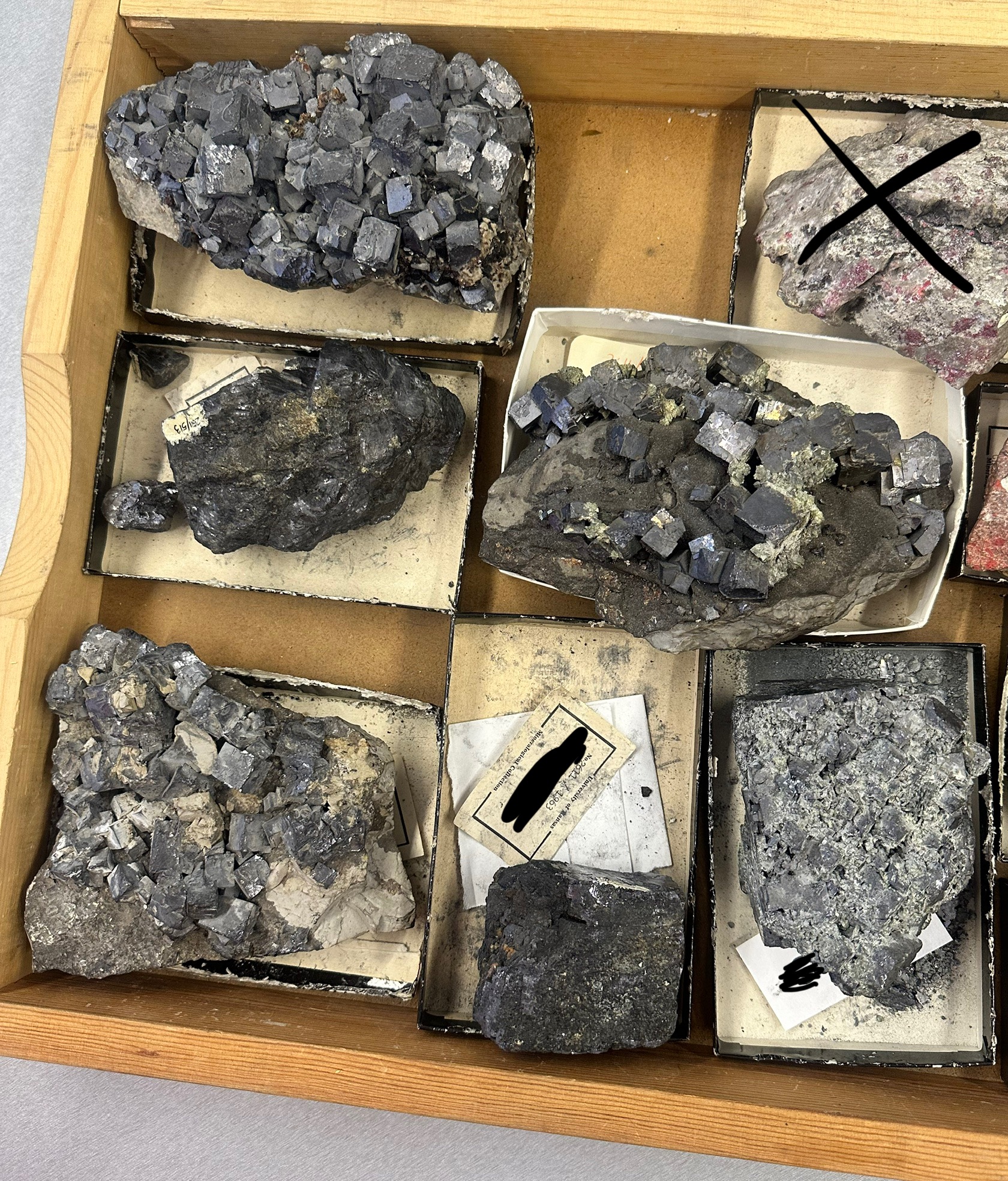
Color: Lead-gray.
Luster: Metallic.
Hardness: 2.5–3.
Cleavage: Perfect cubic {100}.
Diagnostic: Very heavy lead ore; cubic crystals; gray-black streak.
Galena
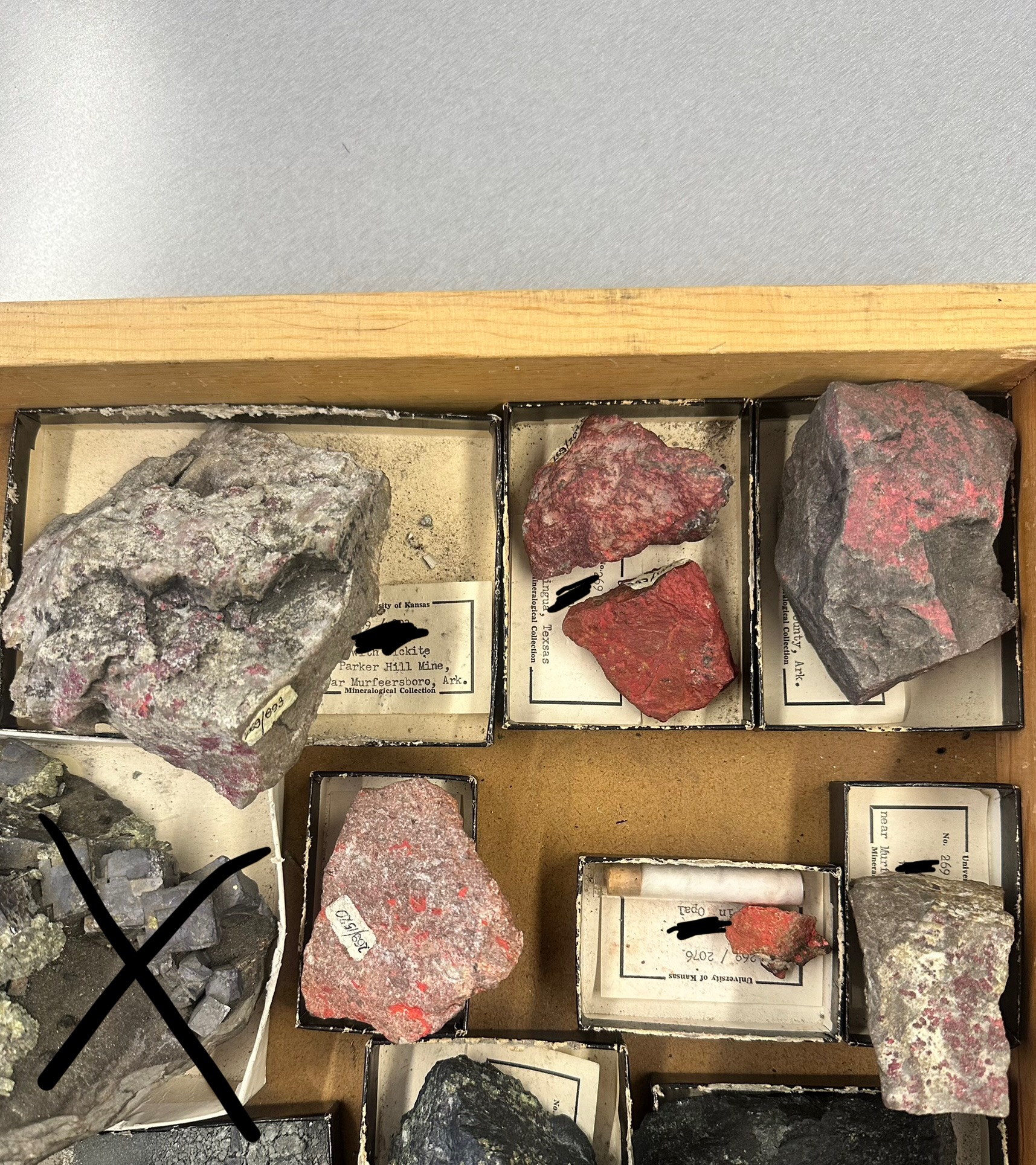
Color: Scarlet red.
Luster: Adamantine to dull.
Hardness: 2–2.5.
Cleavage: Perfect {101̅0}.
Diagnostic: Red mercury sulfide; dense; vermilion streak.
Cinnabar
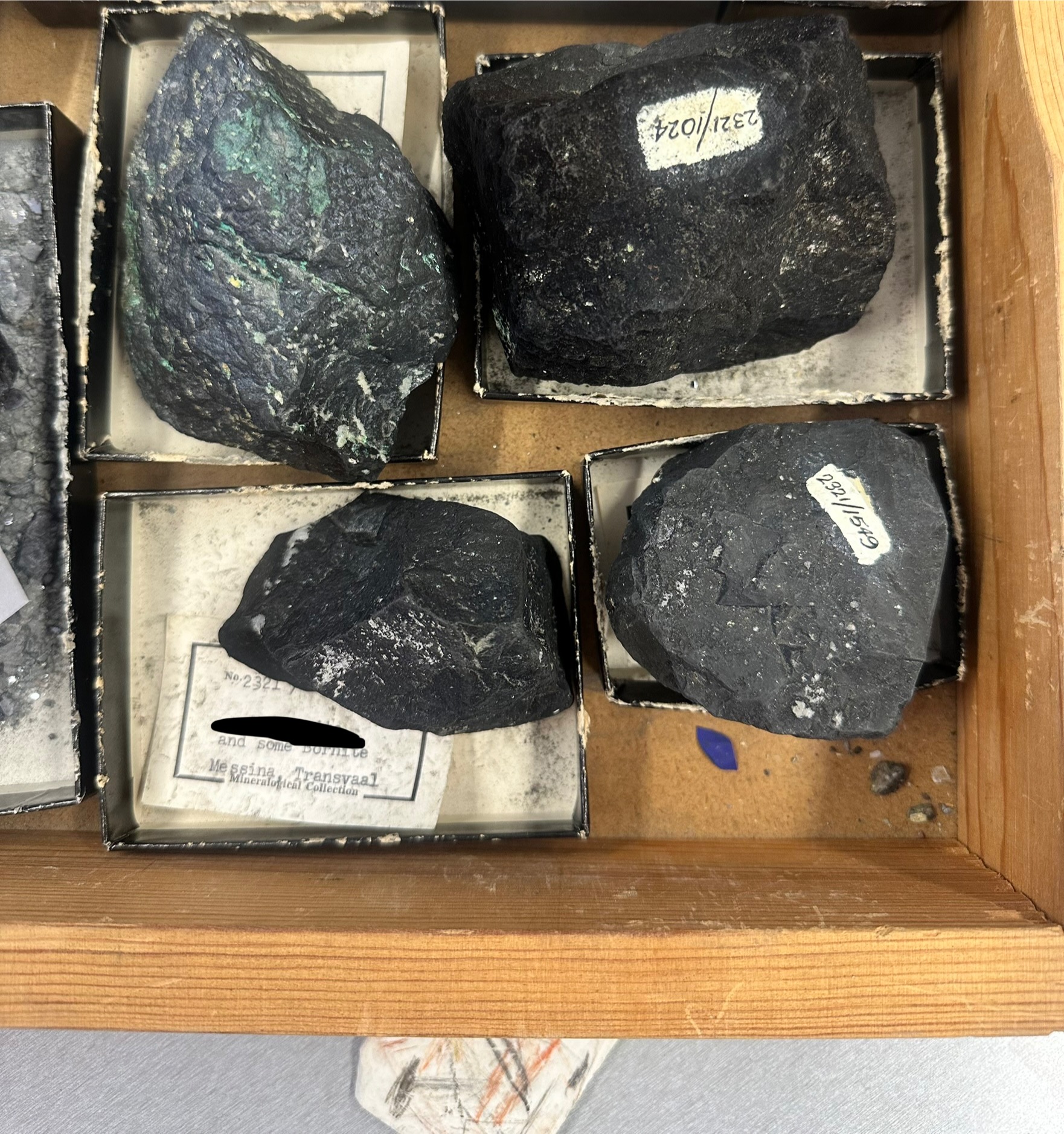
Color: Dark gray to black with metallic luster.
Luster: Metallic.
Hardness: 2.5–3.
Cleavage: Poor.
Diagnostic: Copper sulfide; very heavy; sooty-black streak.
Chalcocite
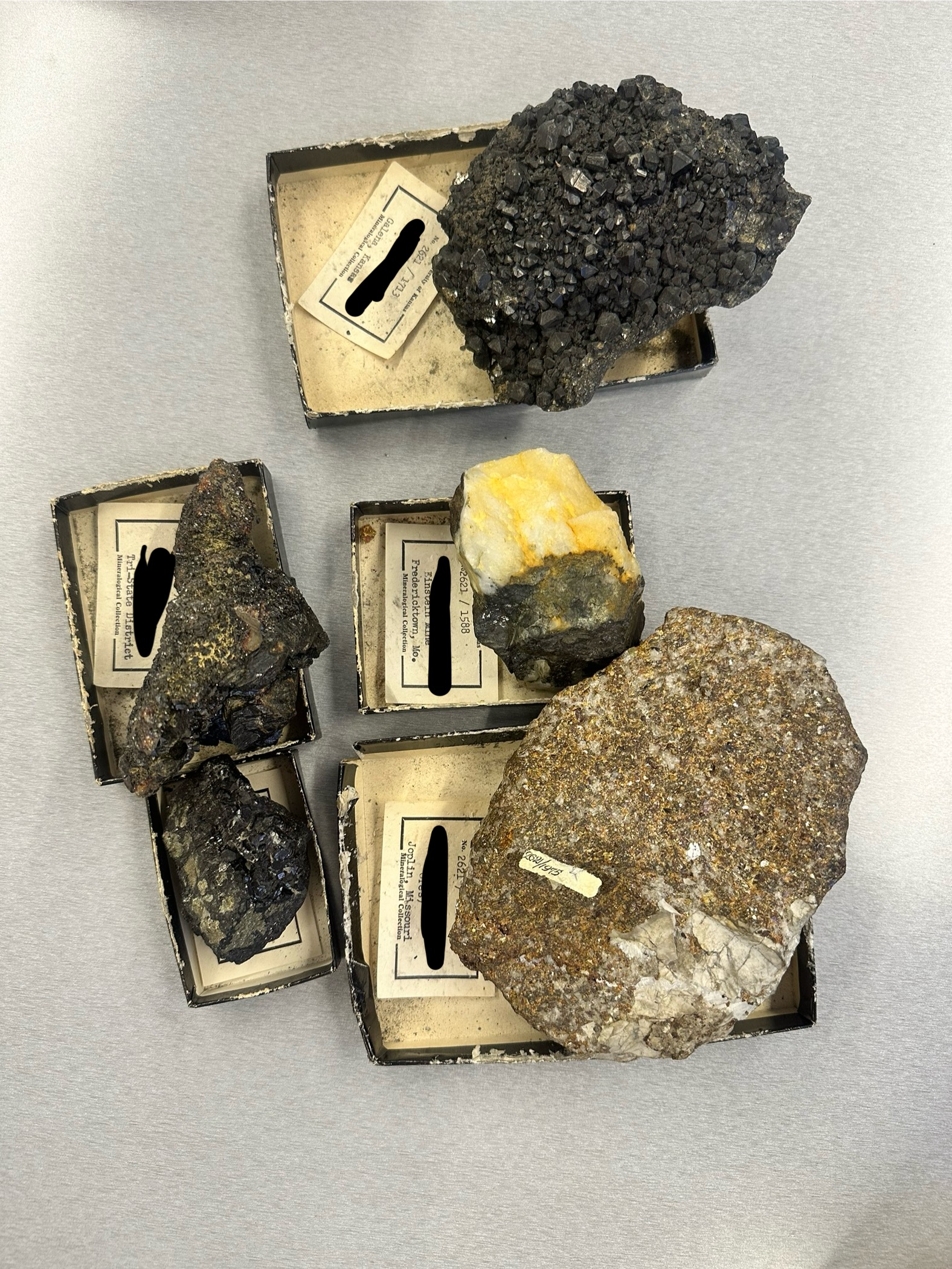
Color: Brown, yellow, black.
Luster: Resinous to submetallic.
Hardness: 3.5–4.
Cleavage: Perfect dodecahedral {110}.
Diagnostic: Pale yellow streak with sulfur smell; main zinc ore.
Sphalerite
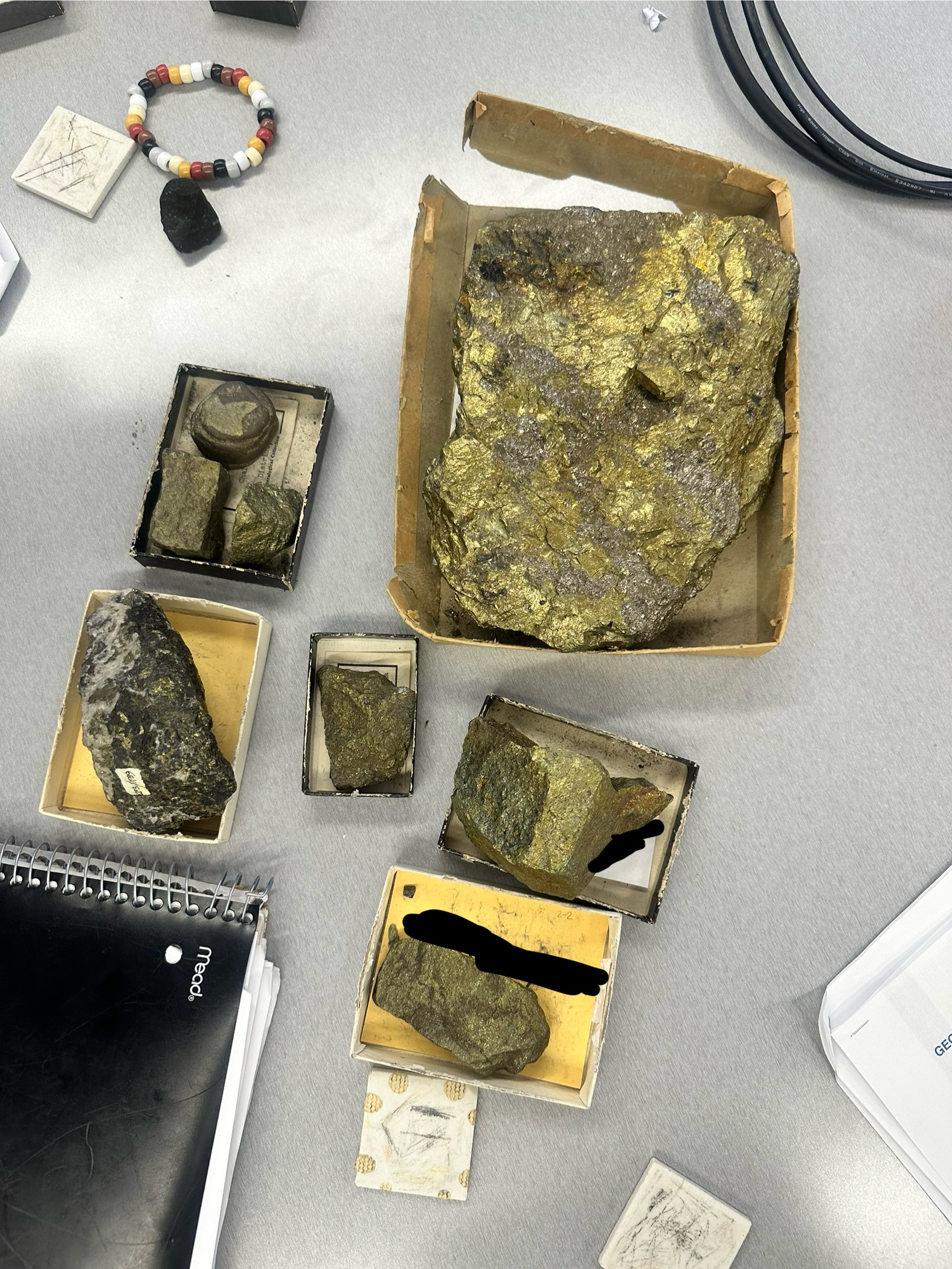
Color: Brass-yellow, often iridescent tarnish.
Luster: Metallic.
Hardness: 3.5–4.
Cleavage: Poor.
Diagnostic: Common copper iron sulfide; softer than pyrite; green-black streak.
Chalcopyrite
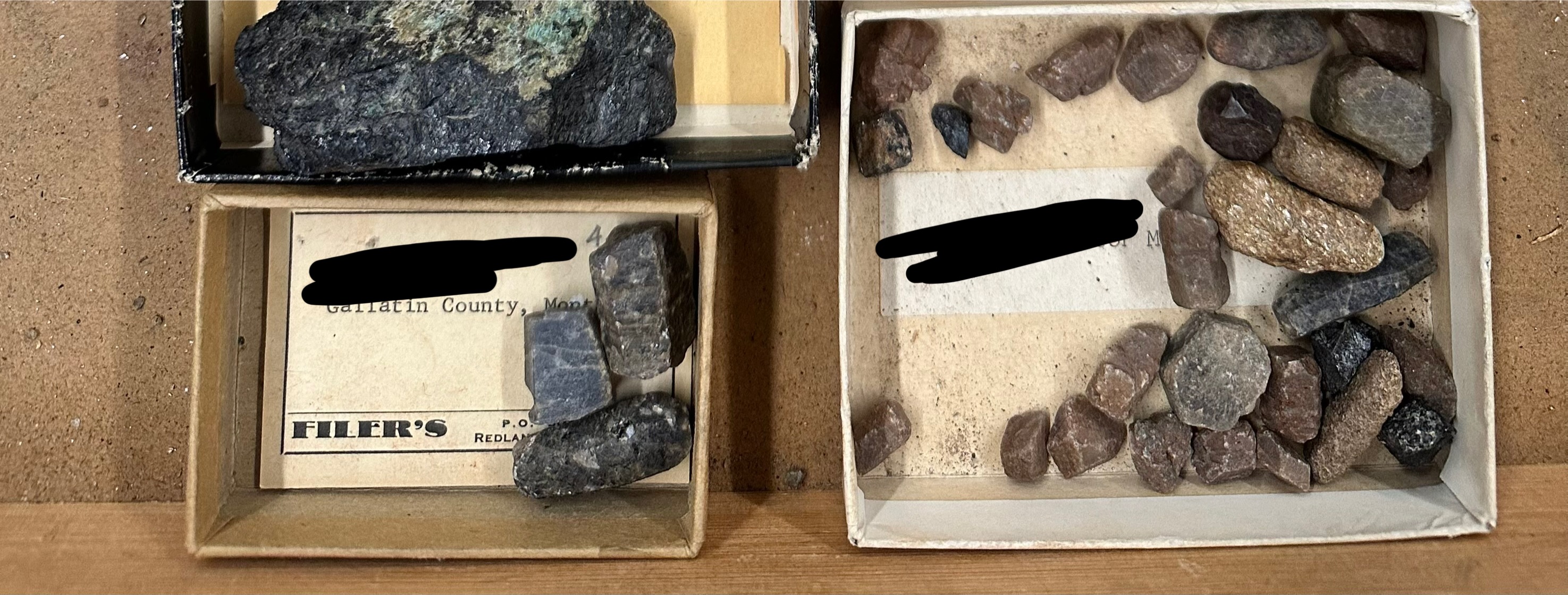
Color: Gray, brown, red (ruby), blue (sapphire).
Luster: Vitreous to adamantine.
Hardness: 9 (second only to diamond).
Cleavage: None; parting on {0001}.
Diagnostic: Extremely hard; hexagonal barrel-shaped crystals.
Corundum
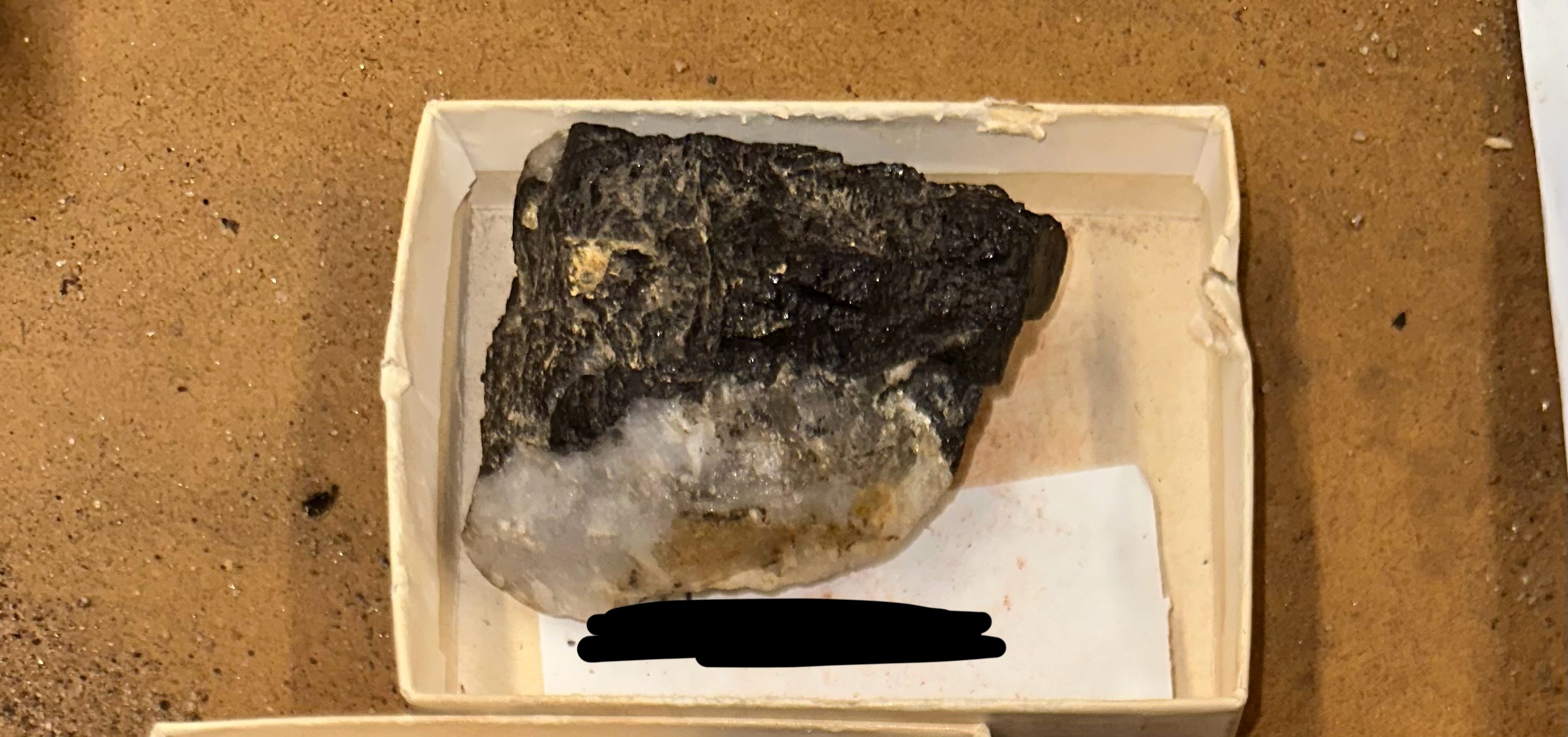
Color: Brownish-black to black.
Luster: Metallic to submetallic.
Hardness: 5.5.
Cleavage: Poor.
Diagnostic: Heavy black ore of chromium; brown streak.
Chromite
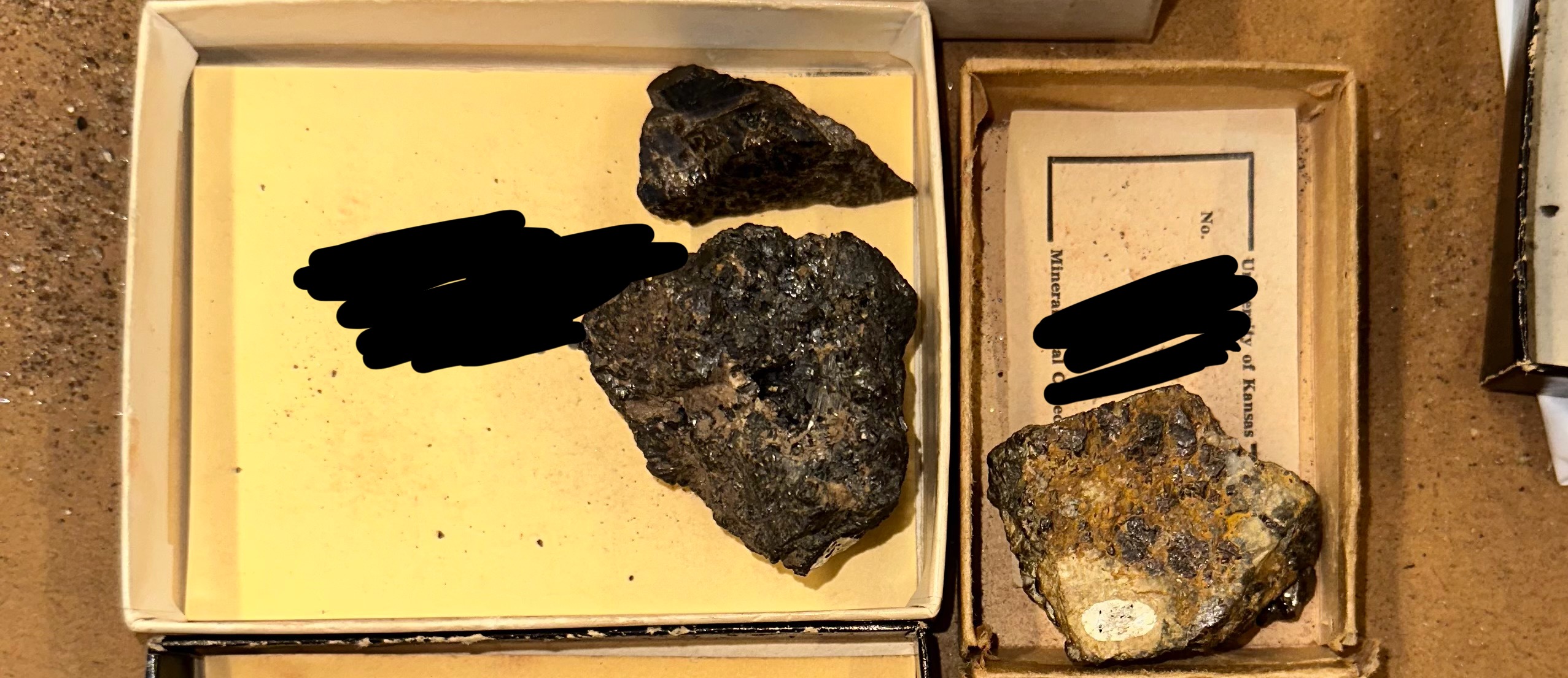
Color: Reddish-brown, black, or golden-yellow.
Luster: Adamantine to metallic.
Hardness: 6–6.5.
Cleavage: Distinct on {110}.
Streak: Light brown.
Diagnostic: High luster and reddish-brown color; slender prismatic or needle-like crystals; very high density; often found as inclusions in quartz (producing “rutilated quartz”).
Rutile
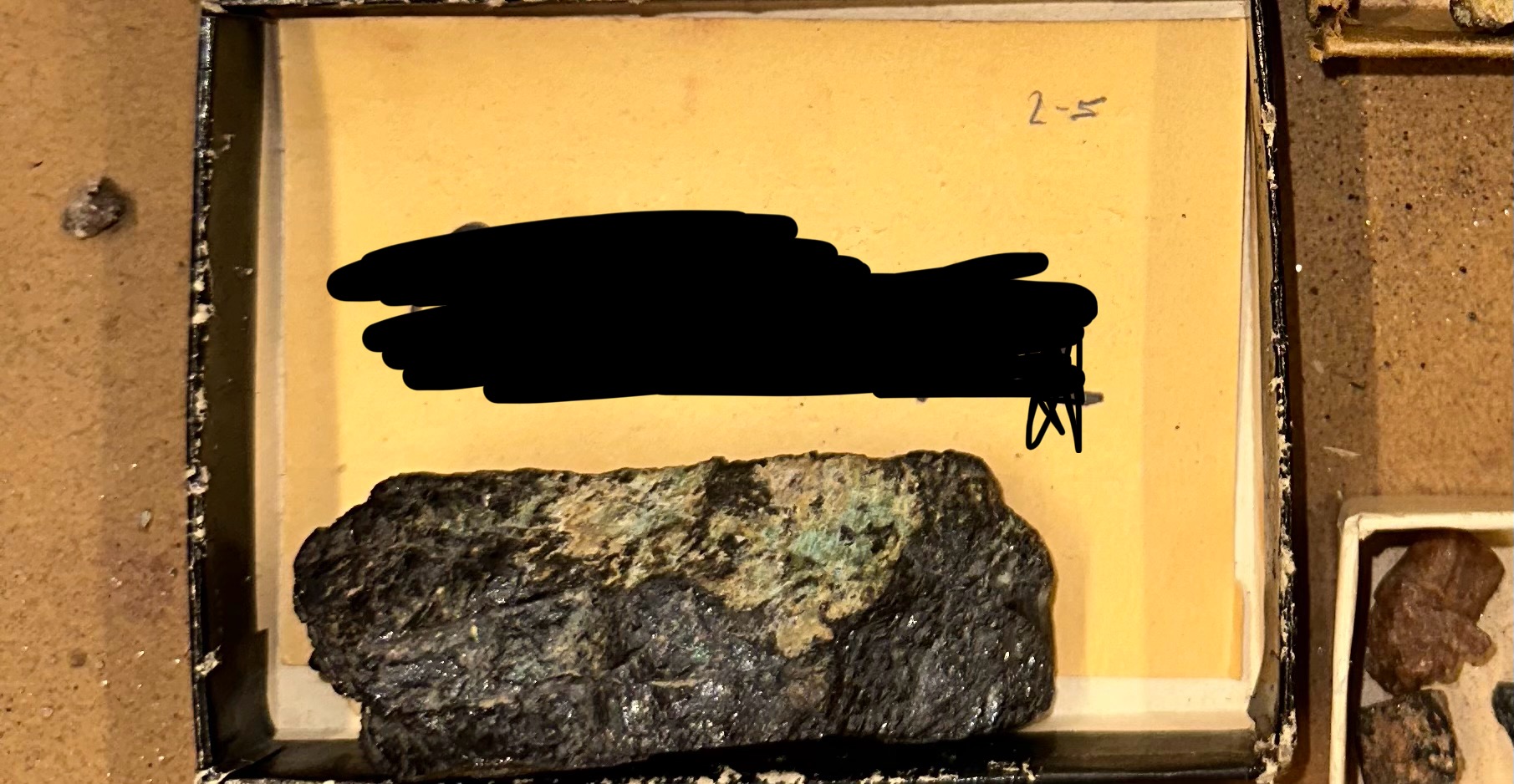
Color: Brown to black.
Luster: Adamantine to submetallic.
Hardness: 6–7.
Cleavage: None, but has distinct parting.
Diagnostic: Heavy tin oxide; high luster; brown streak.
Cassiterite
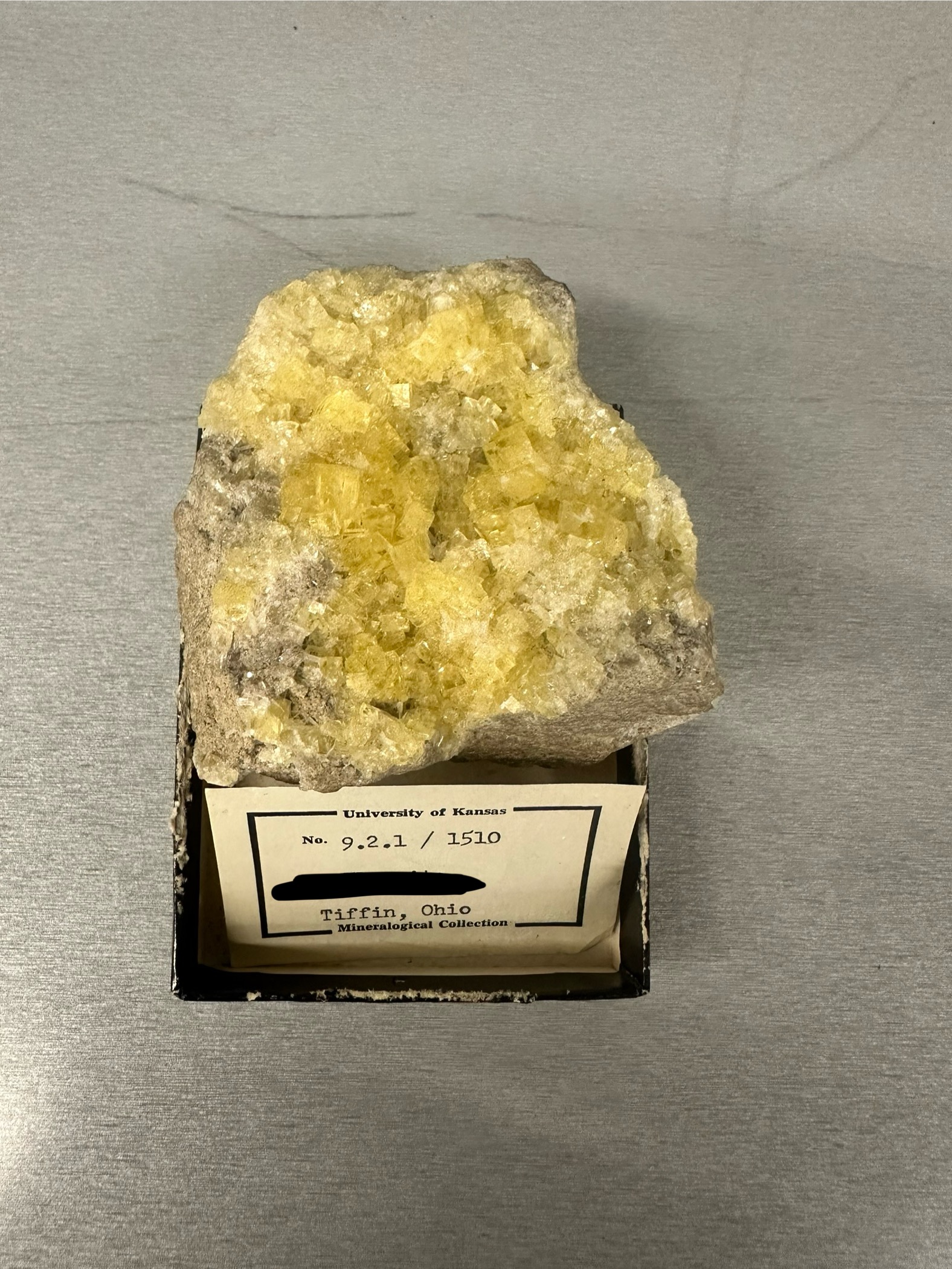
Color: Wide range — purple, green, blue, yellow, colorless.
Luster: Vitreous (glassy).
Hardness: 4 (index mineral on Mohs scale).
Cleavage: Perfect in four directions, forming octahedra.
Streak: White.
Diagnostic: Transparent to translucent crystals; octahedral cleavage is very distinctive; may fluoresce under UV light.
Fluorite
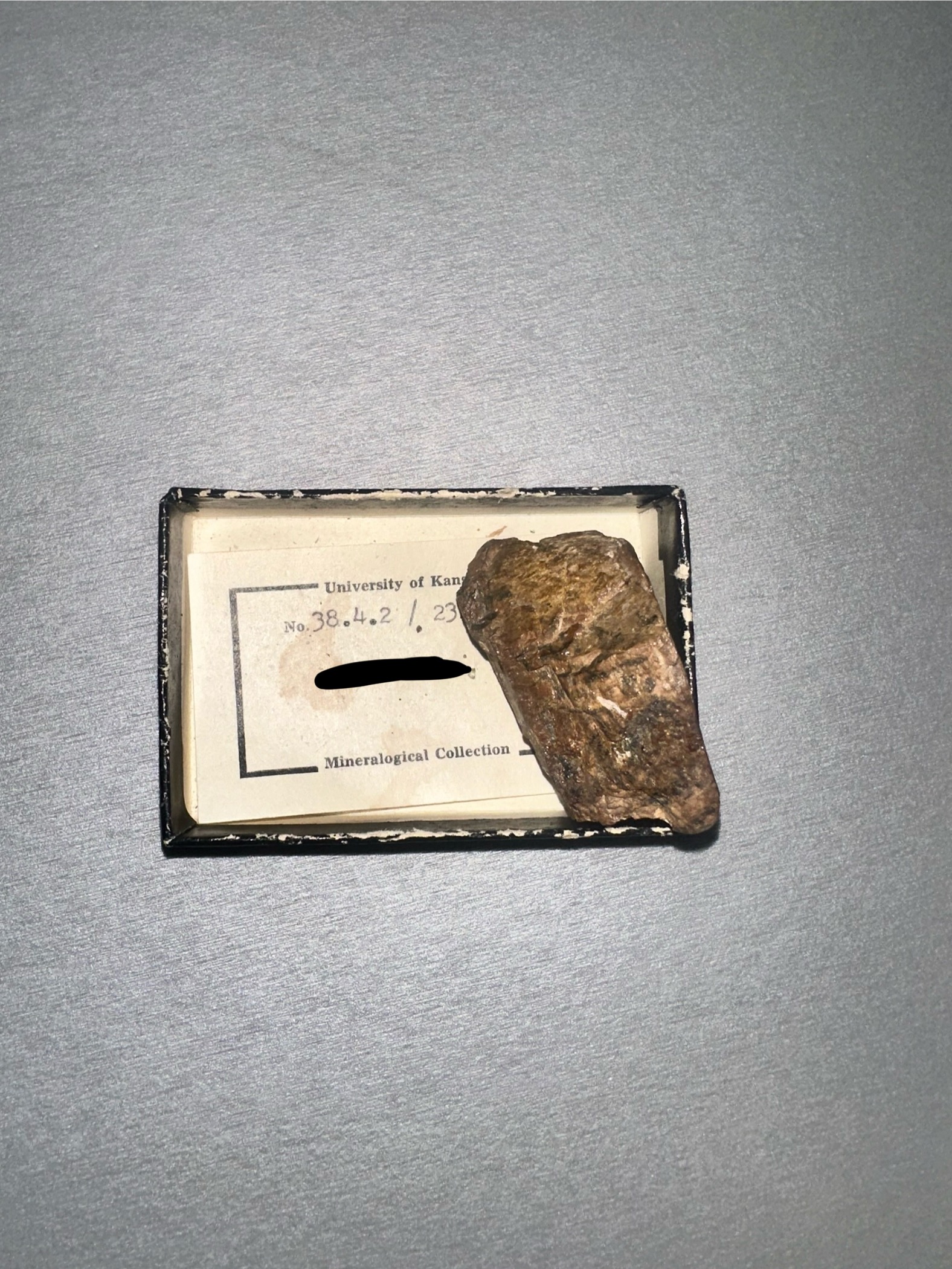
Color: Yellow, reddish-brown.
Luster: Resinous.
Hardness: 5–5.5.
Cleavage: Poor.
Diagnostic: Heavy rare-earth phosphate; typically granular in sands.
Monazite
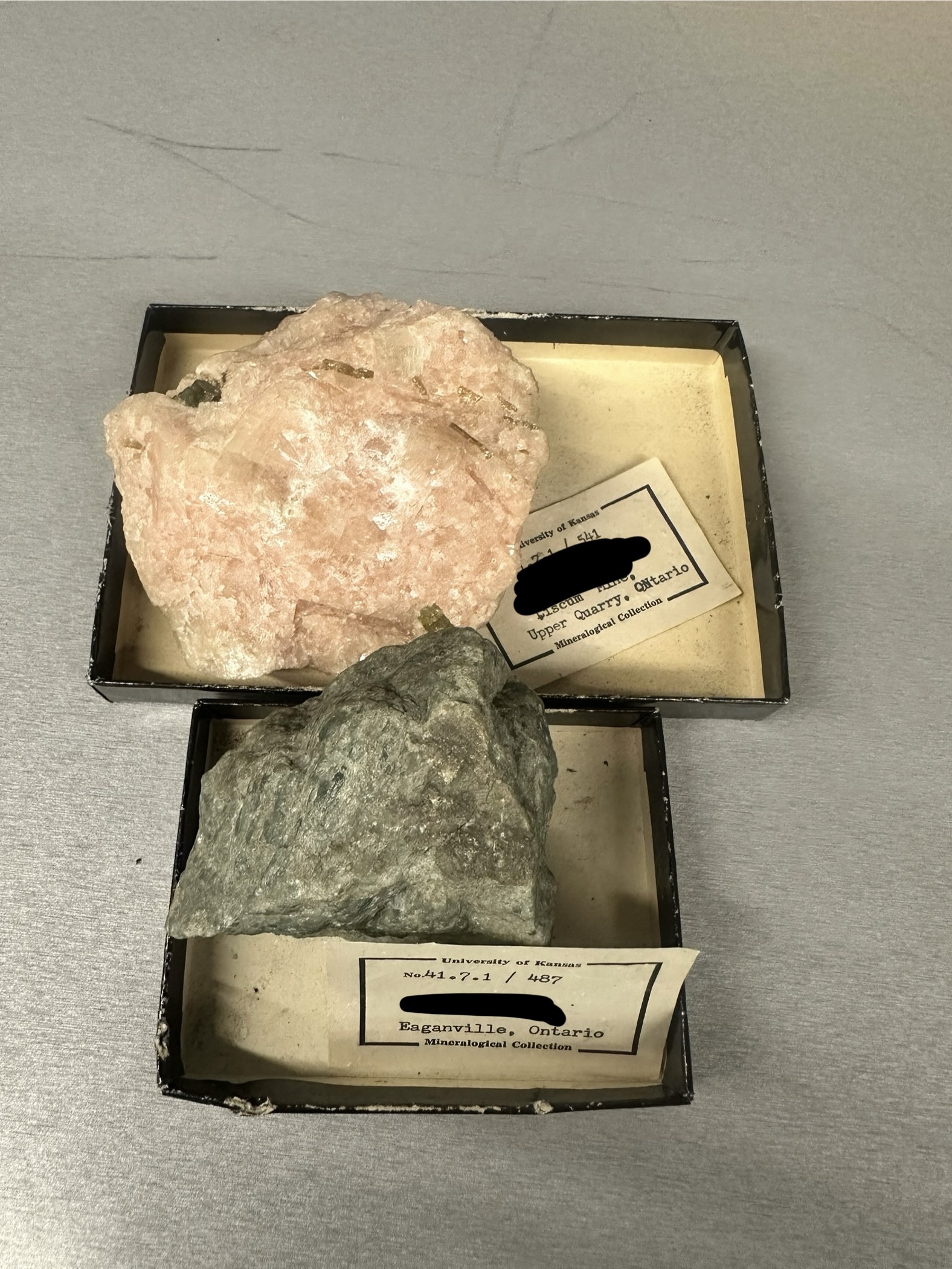
Color: Green, blue, brown, colorless.
Luster: Vitreous to subresinous.
Hardness: 5 (index for Mohs scale).
Cleavage: Poor {0001}.
Diagnostic: Hexagonal crystals; scratched easily by knife but not fingernail.
Apatite
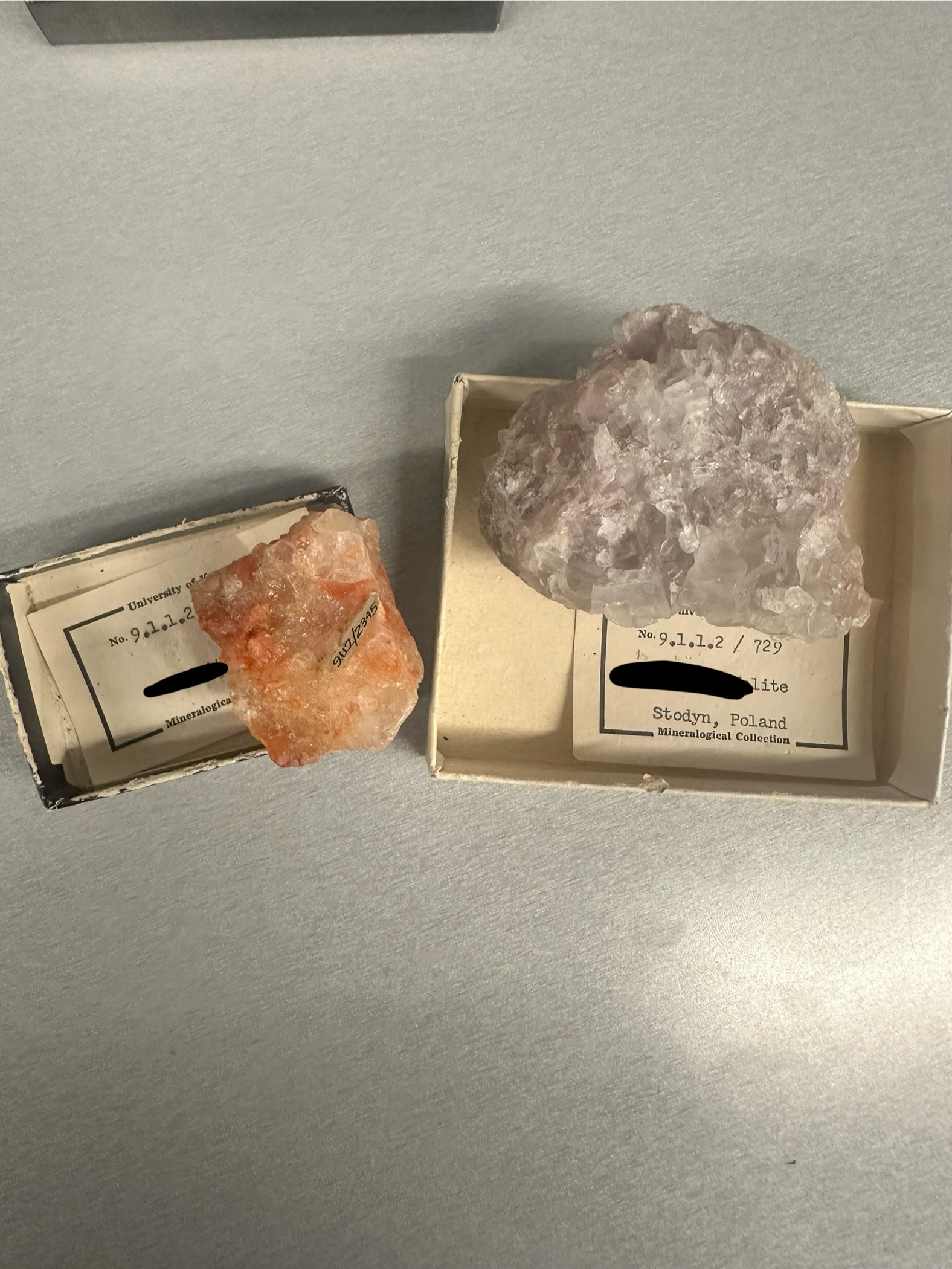
Color: Colorless to white, sometimes reddish.
Luster: Vitreous.
Hardness: 2.
Cleavage: Perfect cubic {100}.
Diagnostic: Tastes bitter (KCl); softer and lighter than halite.
Sylvite
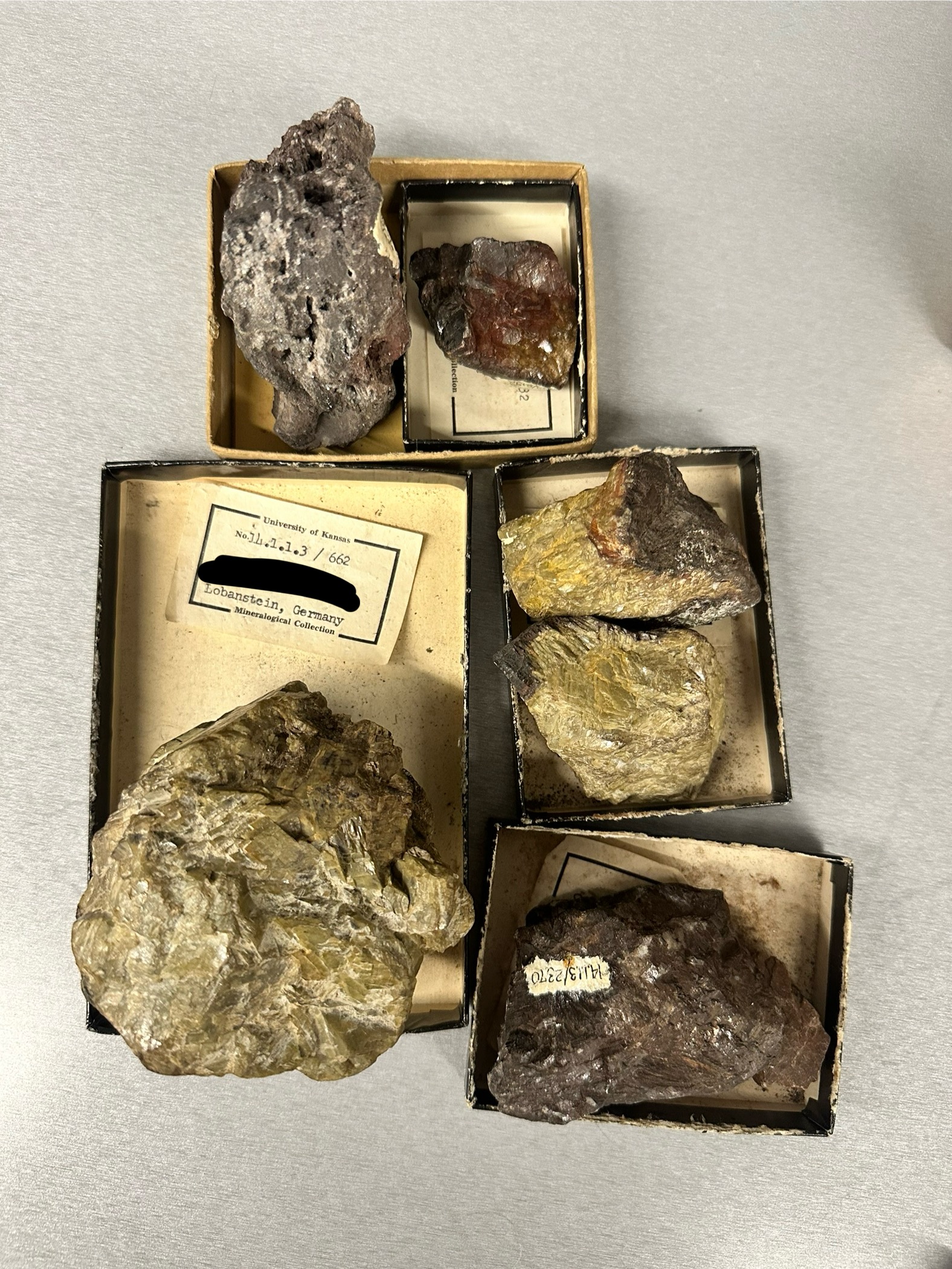
Color: Brown, yellow-brown, gray.
Luster: Vitreous to pearly.
Hardness: 3.5–4.5.
Cleavage: Perfect rhombohedral {101̅1}.
Diagnostic: Iron carbonate; effervesces slowly in warm HCl.
Siderite
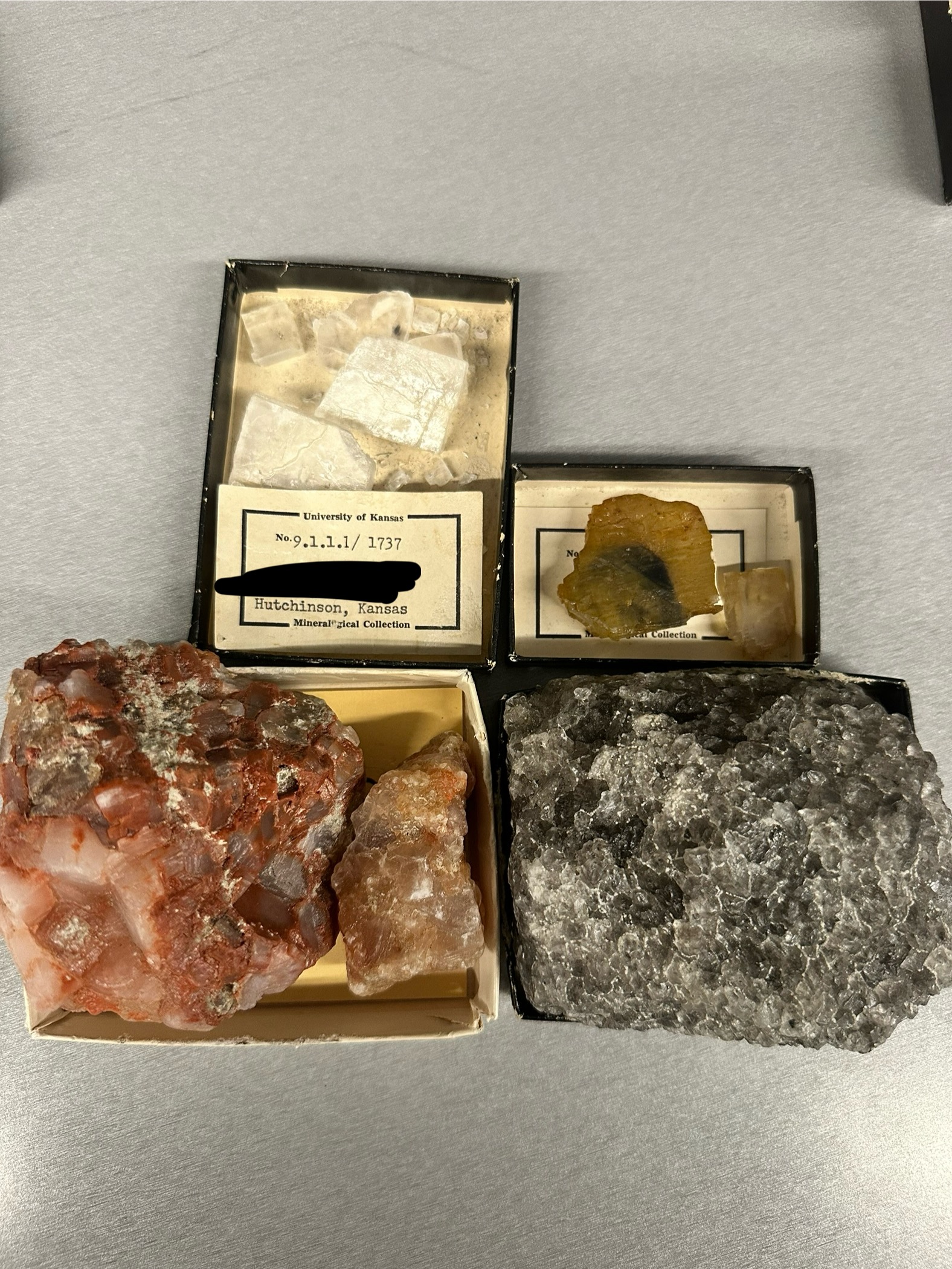
Color: Colorless to white, can be pink, gray, etc.
Luster: Vitreous.
Hardness: 2.5.
Cleavage: Perfect cubic {100}.
Diagnostic: Salty taste; dissolves in water; clear to translucent cubes.
Halite
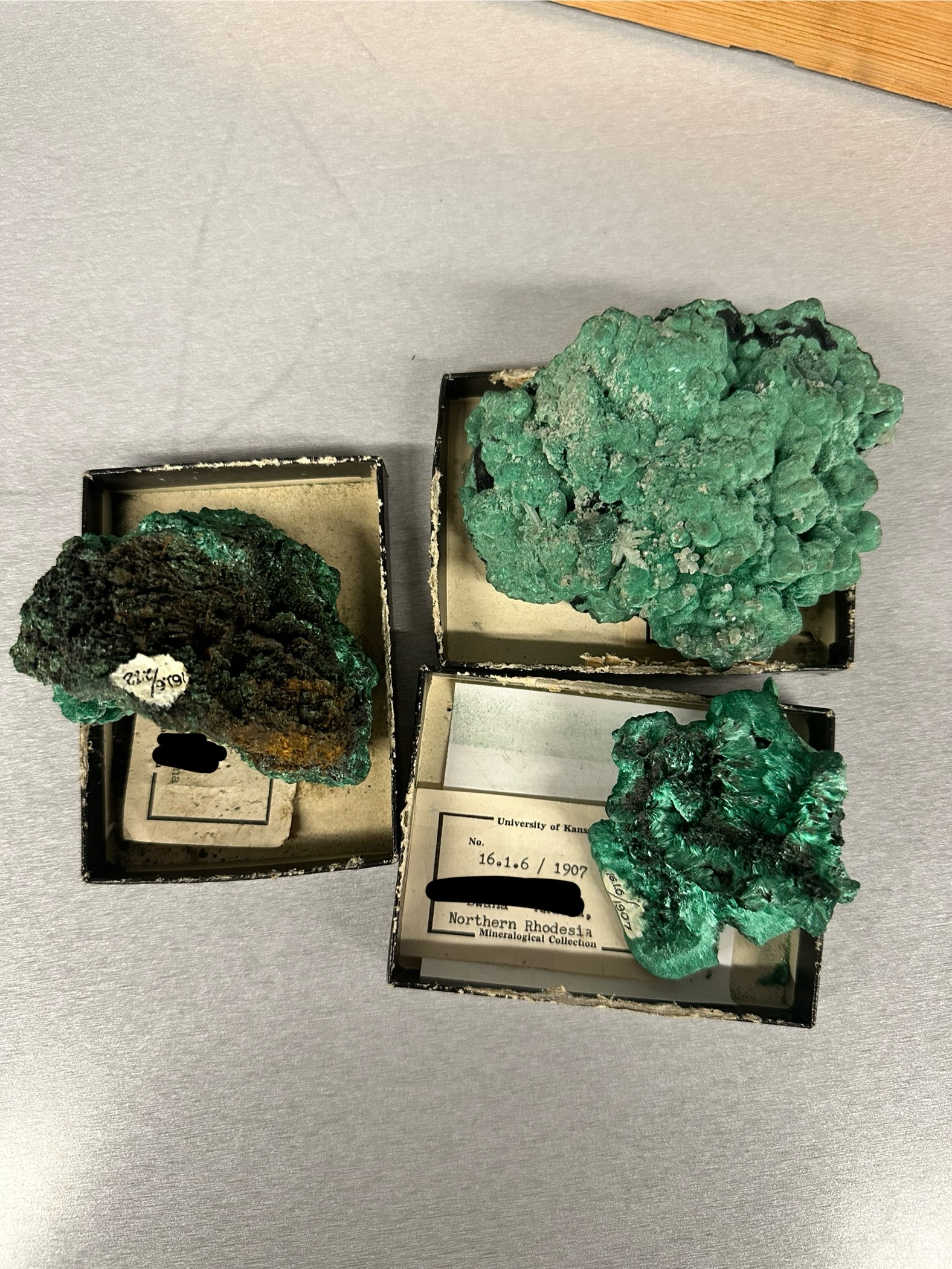
Color: Bright green, banded.
Luster: Silky to earthy.
Hardness: 3.5–4.
Cleavage: Perfect in one direction (rare).
Diagnostic: Green copper carbonate with botryoidal masses; effervesces in acid.
Malachite
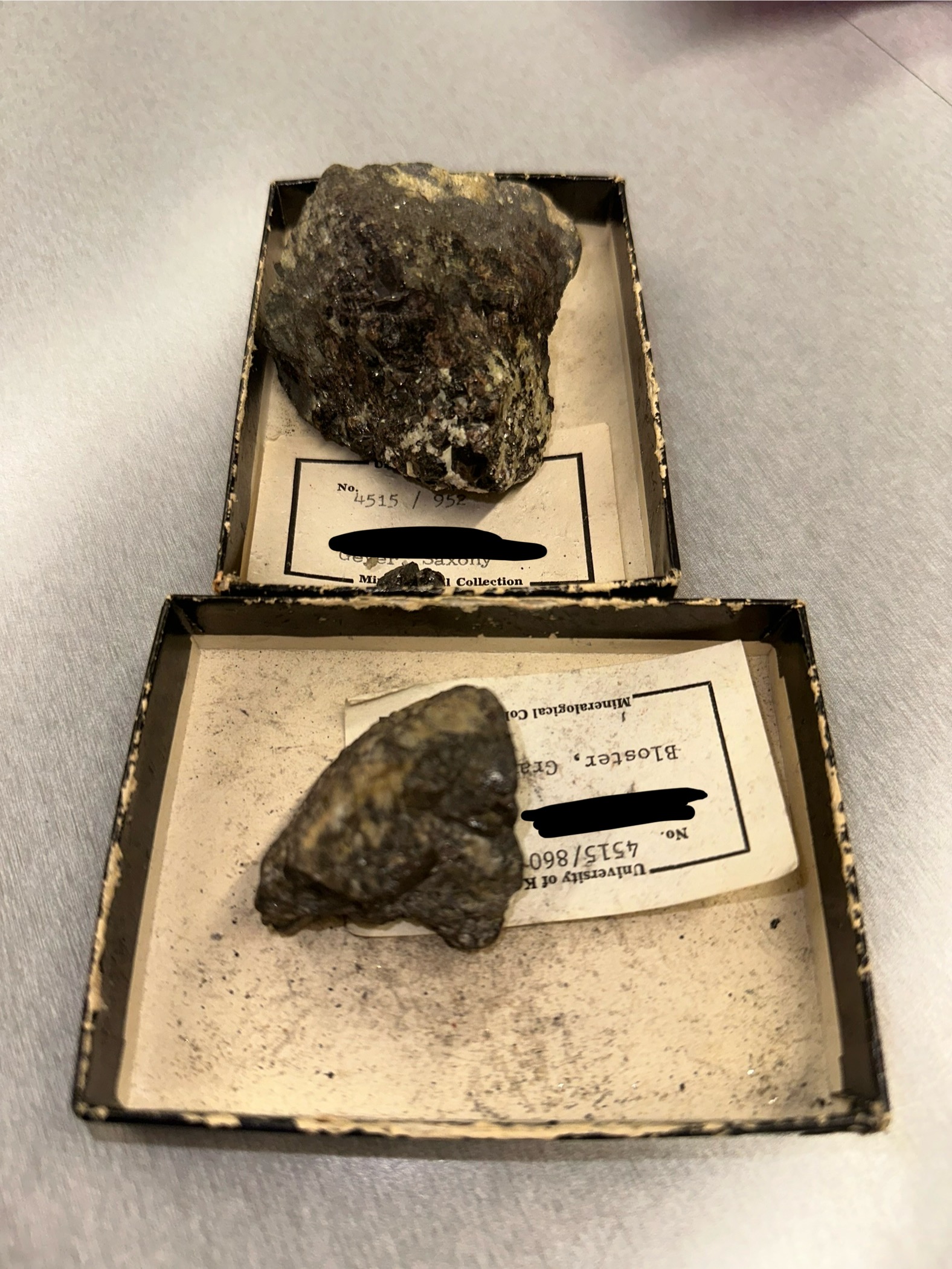
Color: Brown to black.
Luster: Adamantine to submetallic.
Hardness: 6–7.
Cleavage: None, but has distinct parting.
Diagnostic: Heavy tin oxide; high luster; brown streak.
Cassiterite
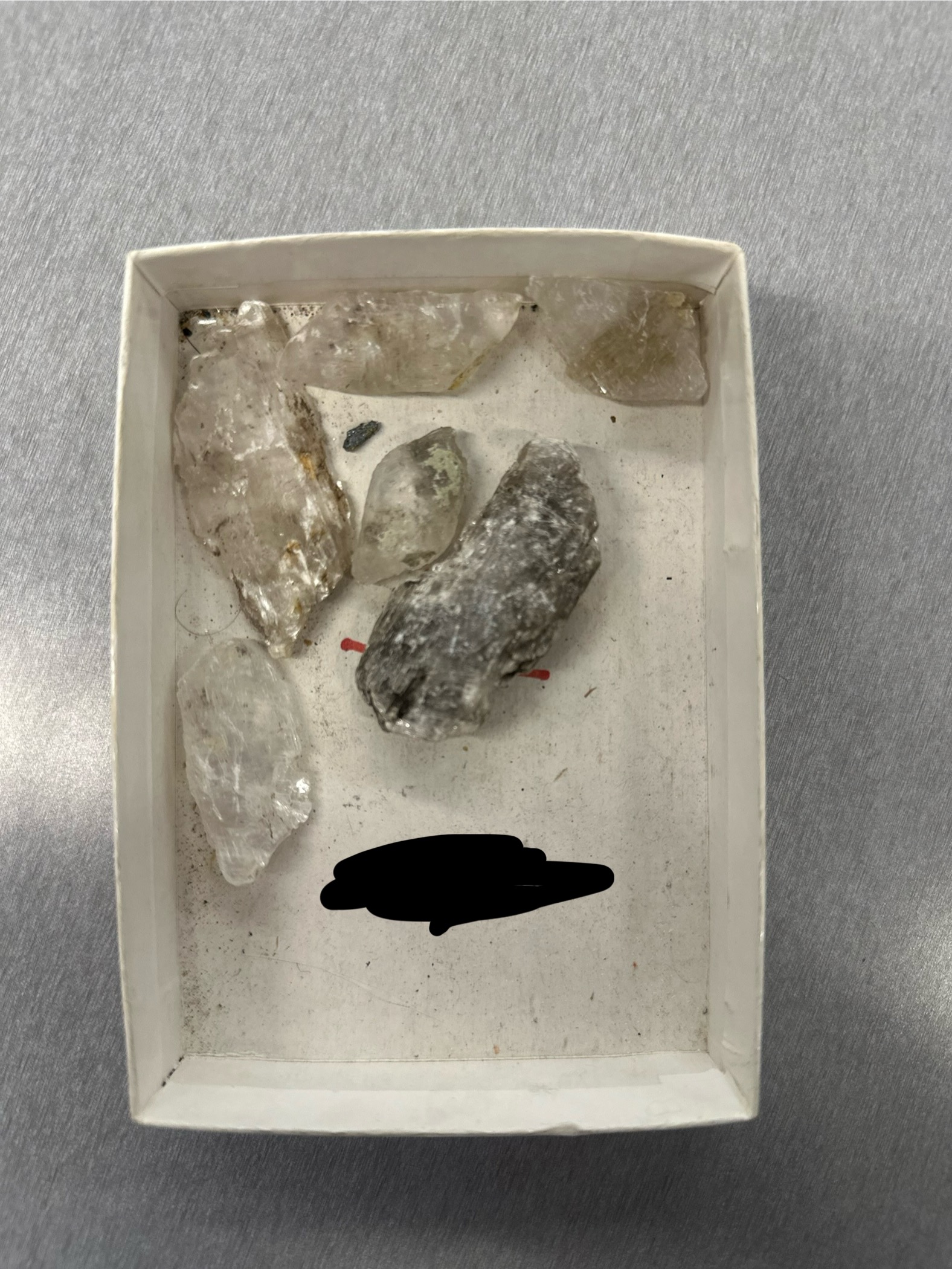
Color: Colorless, white, gray.
Luster: Vitreous to silky.
Hardness: 2 (can be scratched by fingernail).
Cleavage: Perfect {010}.
Diagnostic: Very soft calcium sulfate; forms clear selenite or fibrous satin spar.
Gypsum
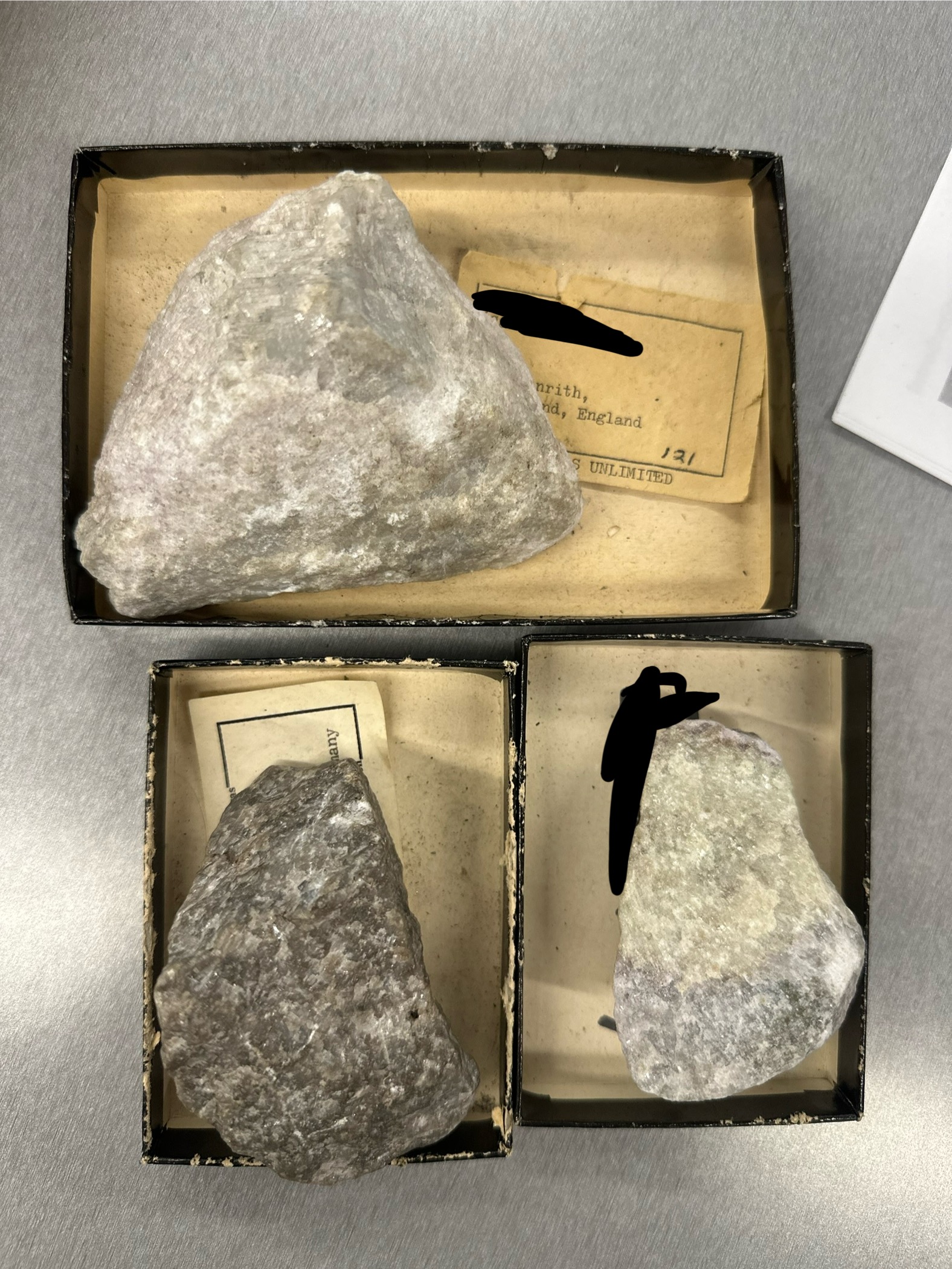
Color: Colorless, white, gray, blue, lilac.
Luster: Vitreous to pearly.
Hardness: 3–3.5.
Cleavage: Perfect {010}, {100}, {001} (three directions at right angles).
Diagnostic: Looks like gypsum but harder and does not effervesce; lacks water in its structure.
Anhydrite
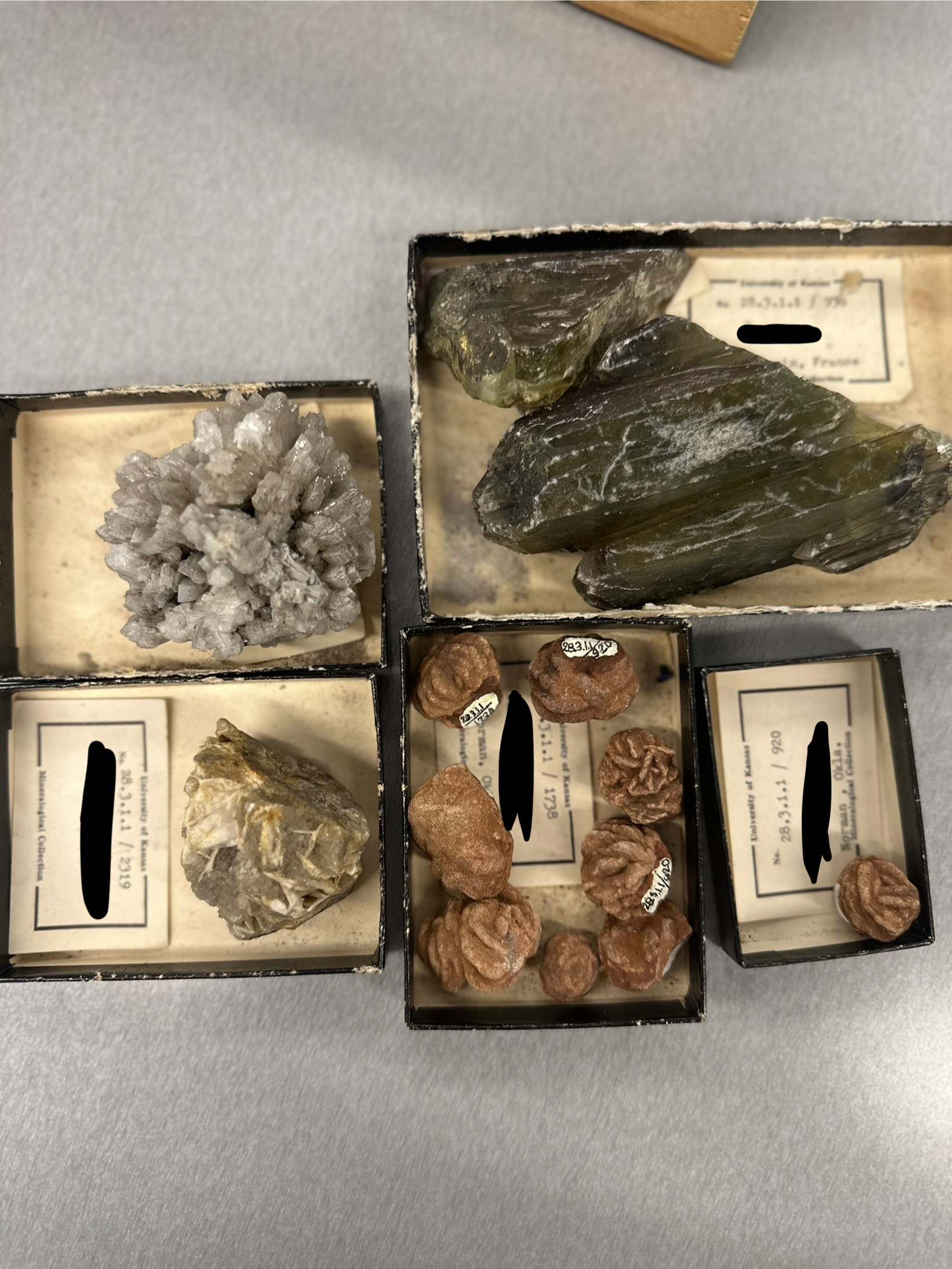
Color: Colorless, white, yellow, blue.
Luster: Vitreous to pearly.
Hardness: 3–3.5.
Cleavage: Perfect {210}.
Diagnostic: Very heavy for a nonmetallic mineral (BaSO₄); tabular crystals.
Barite
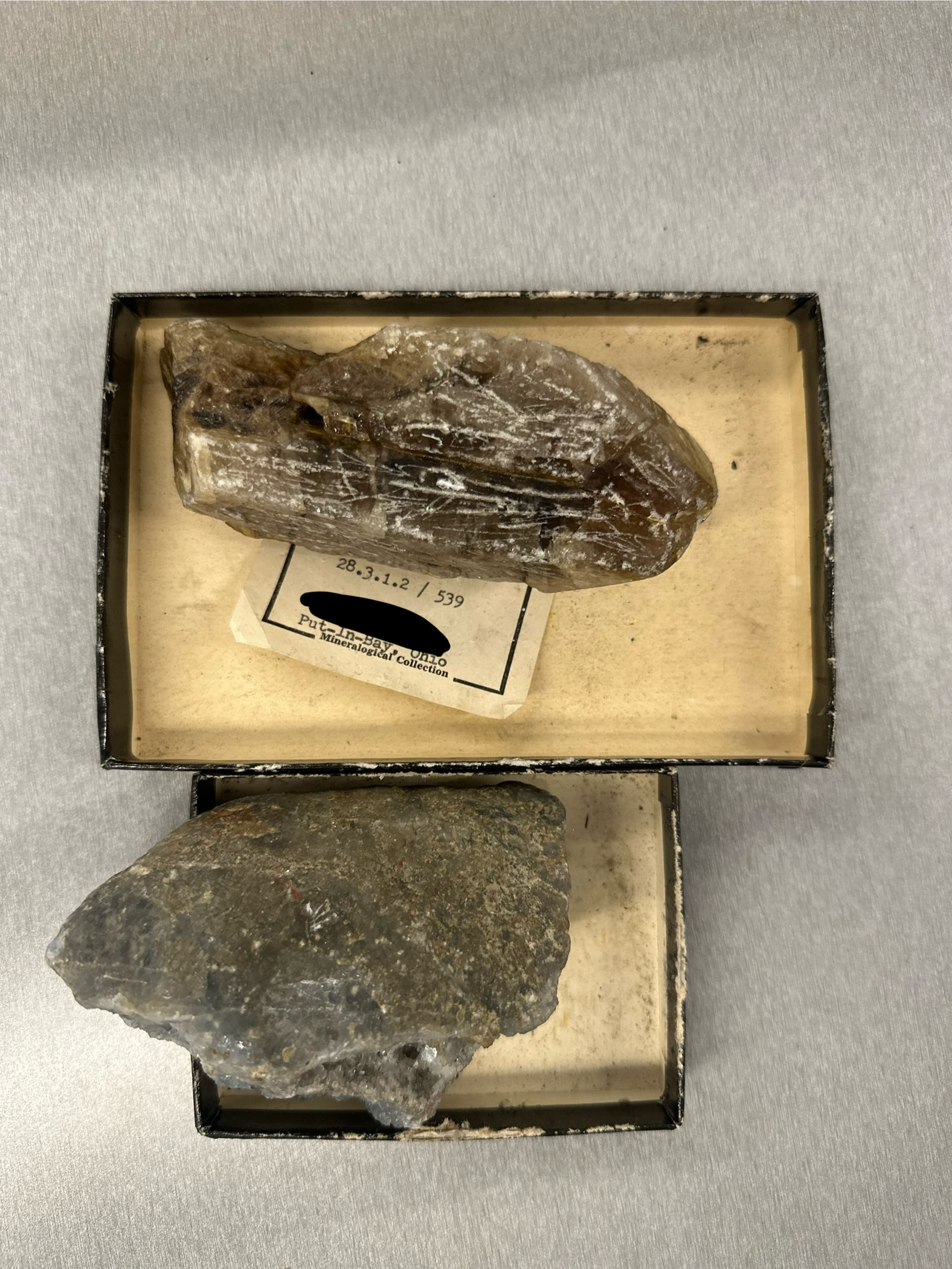
Color: Colorless to pale blue or gray.
Luster: Vitreous to pearly.
Hardness: 3–3.5.
Cleavage: Perfect {001}.
Diagnostic: Strontium sulfate; heavier than gypsum; pale sky-blue crystals common.
celestite
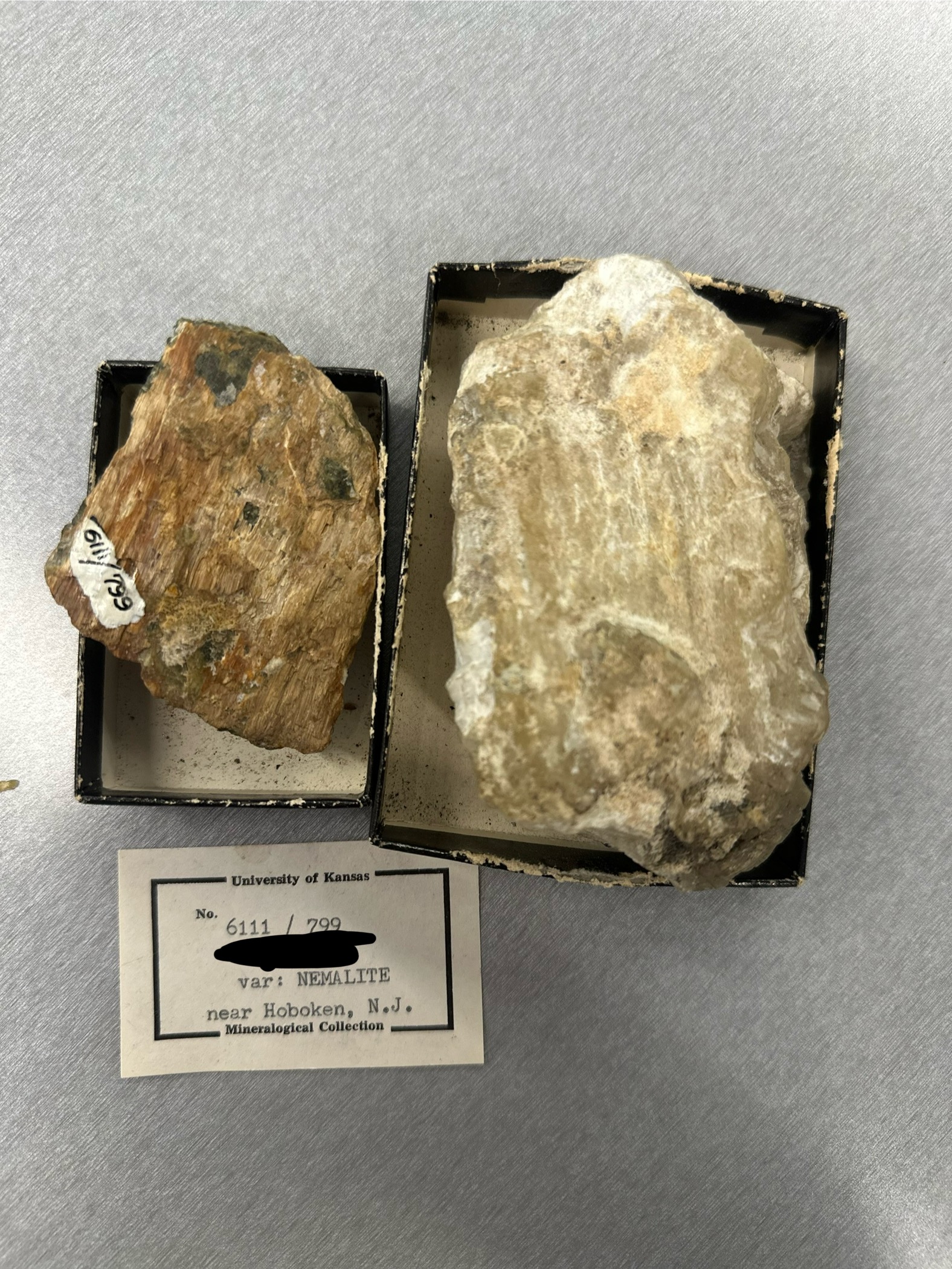
Color: White, gray, bluish or greenish.
Luster: Pearly to vitreous.
Hardness: 2.5.
Cleavage: Perfect {0001}.
Diagnostic: Soft Mg hydroxide; flakes easily; feels slippery.
Brucite
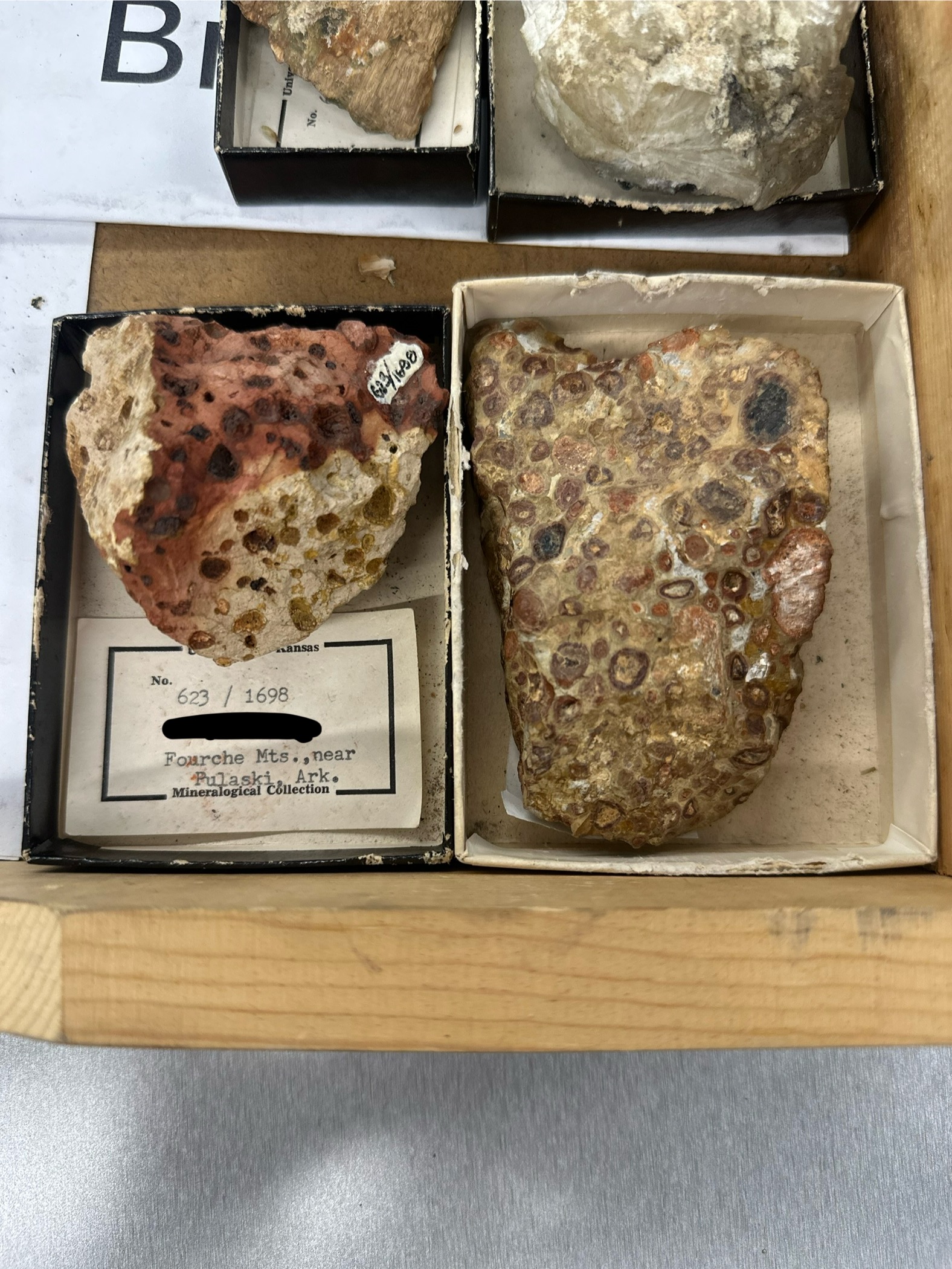
Color: White, gray, brown, reddish.
Luster: Dull to earthy.
Hardness: 1–3.
Cleavage: None.
Diagnostic: Aluminum ore with pea-sized pisolites (tiny round grains); very low density.
Bauxite
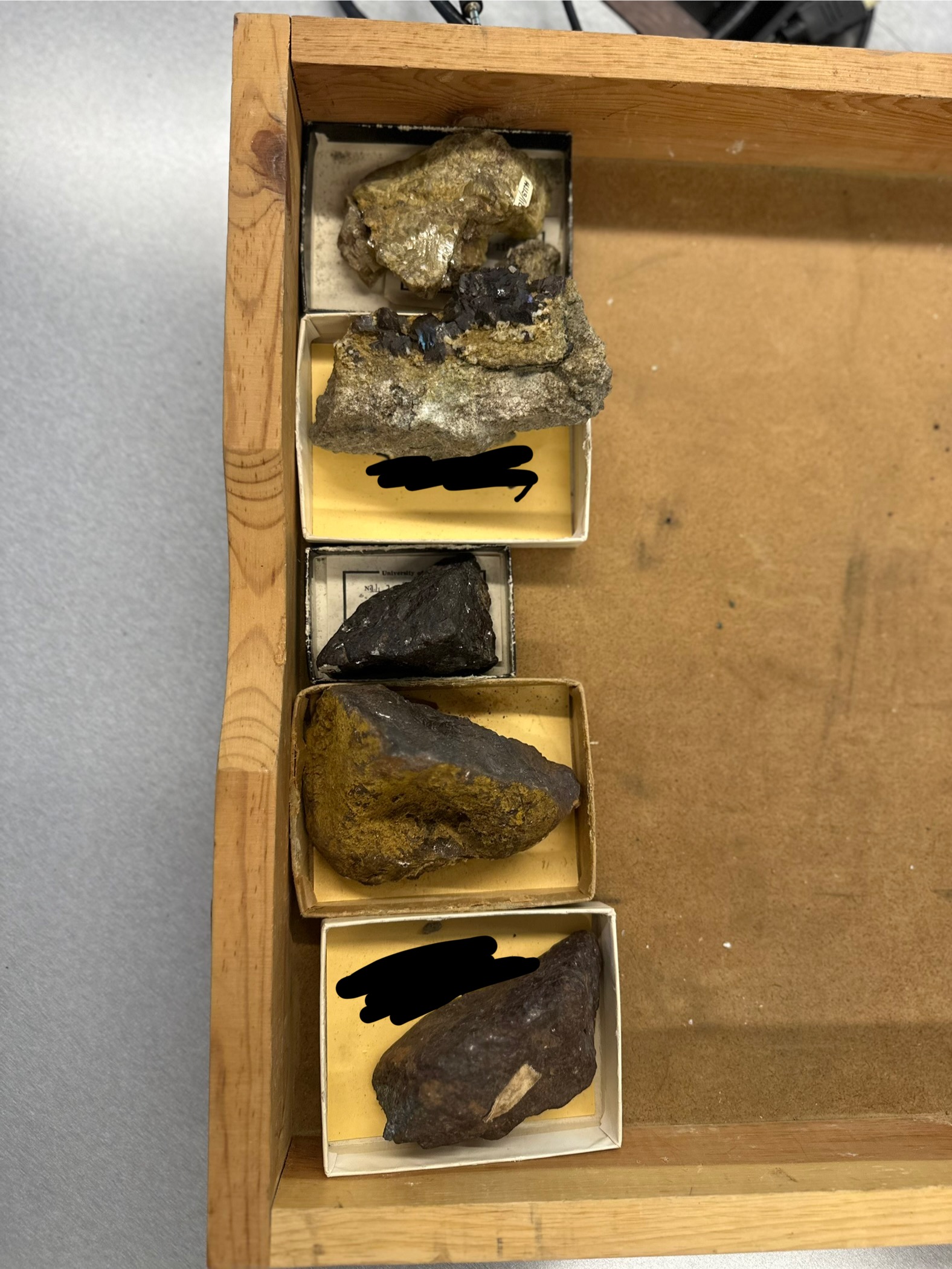
Color: Brown, yellow-brown, gray.
Luster: Vitreous to pearly.
Hardness: 3.5–4.5.
Cleavage: Perfect rhombohedral {101̅1}.
Diagnostic: Iron carbonate; effervesces slowly in warm HCl.
Siderite
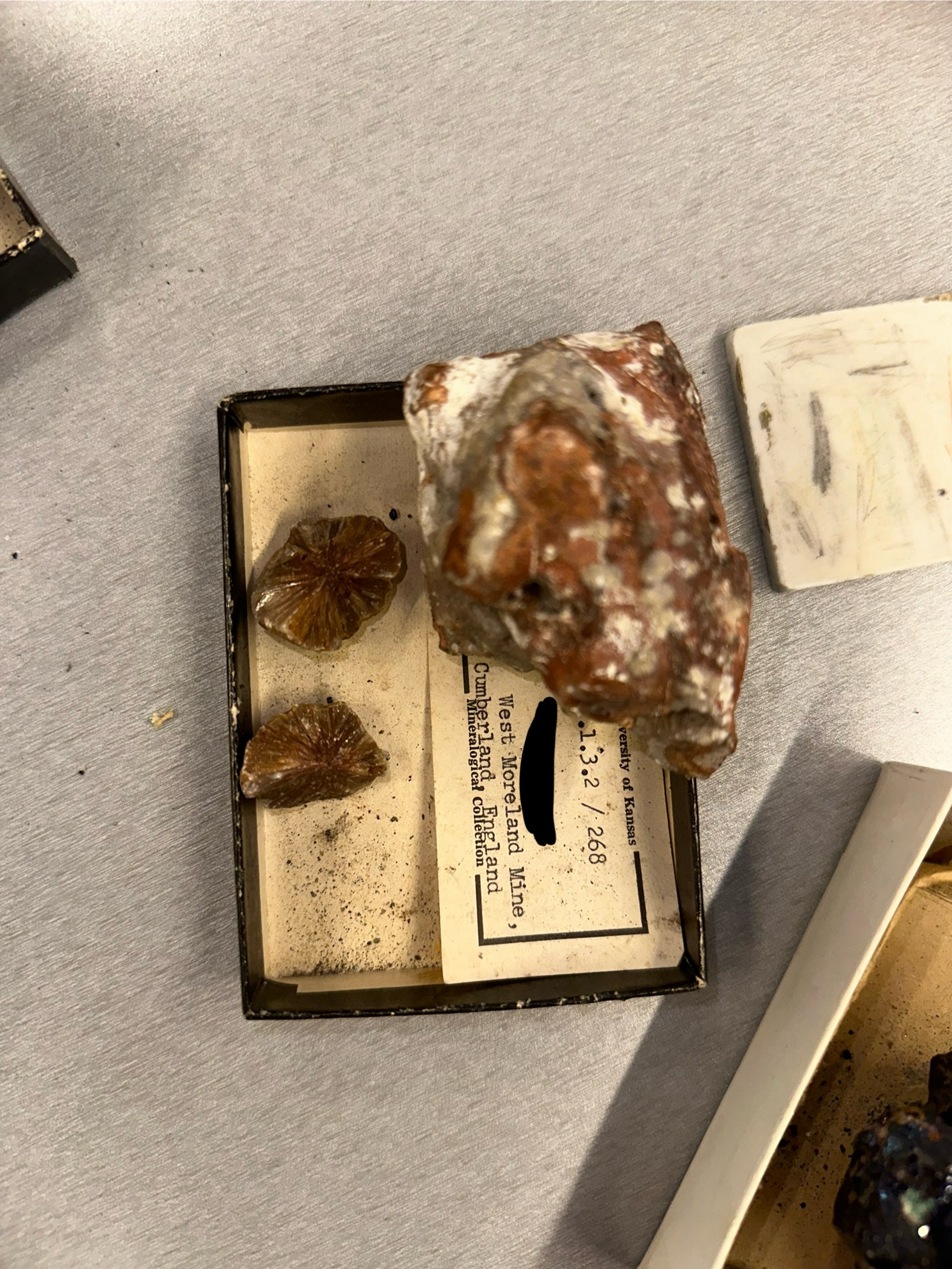
Color: Colorless, white, grayish.
Luster: Vitreous to resinous.
Hardness: 3–3.5.
Cleavage: Distinct {010}.
Diagnostic: Barium carbonate; heavy; reacts with acid to release CO₂.
Witherite
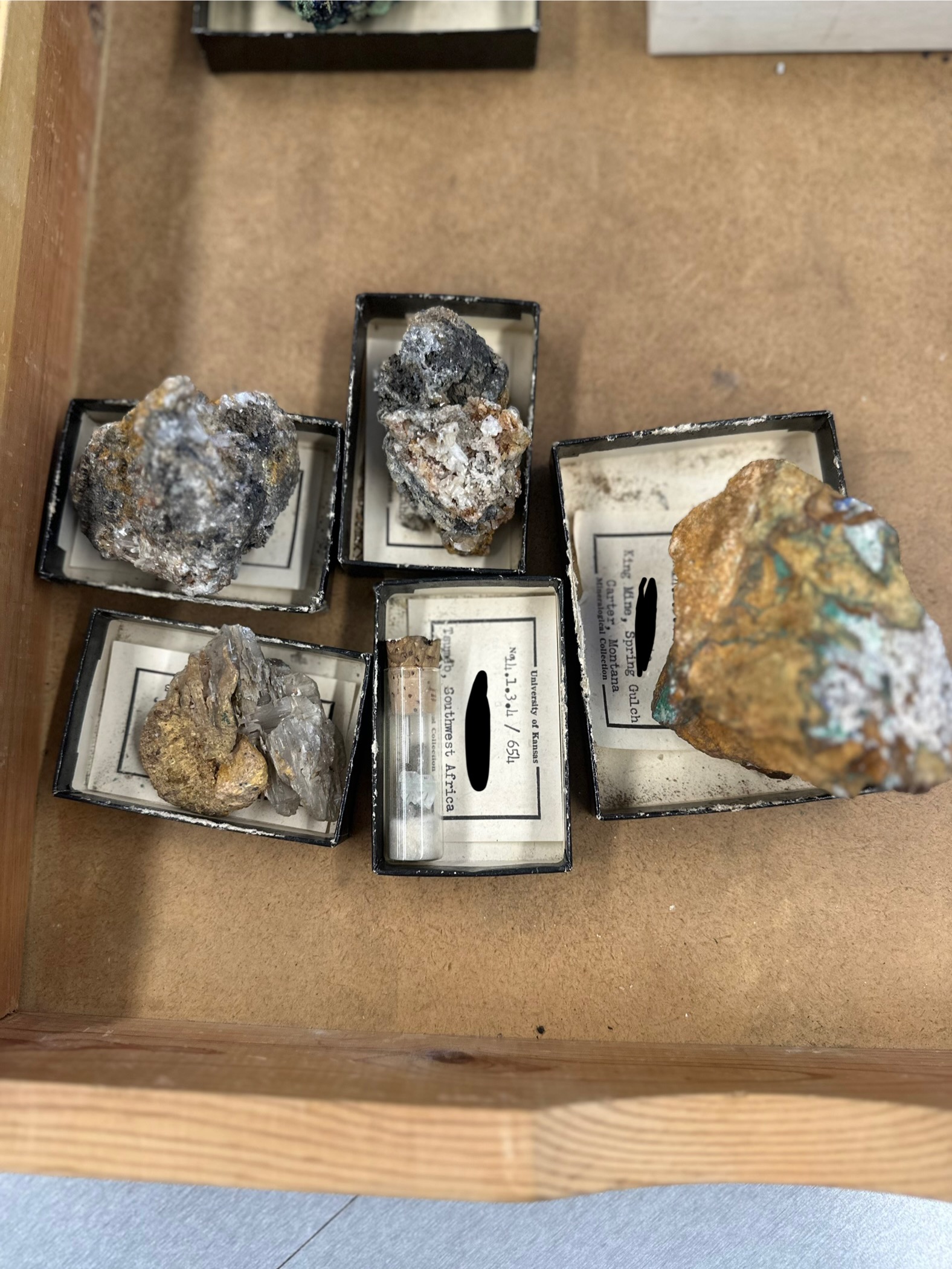
Color: Colorless, gray, white.
Luster: Adamantine.
Hardness: 3–3.5.
Cleavage: Distinct {110}.
Diagnostic: Heavy lead carbonate; high luster and density; twinned crystals common.
Cerussite
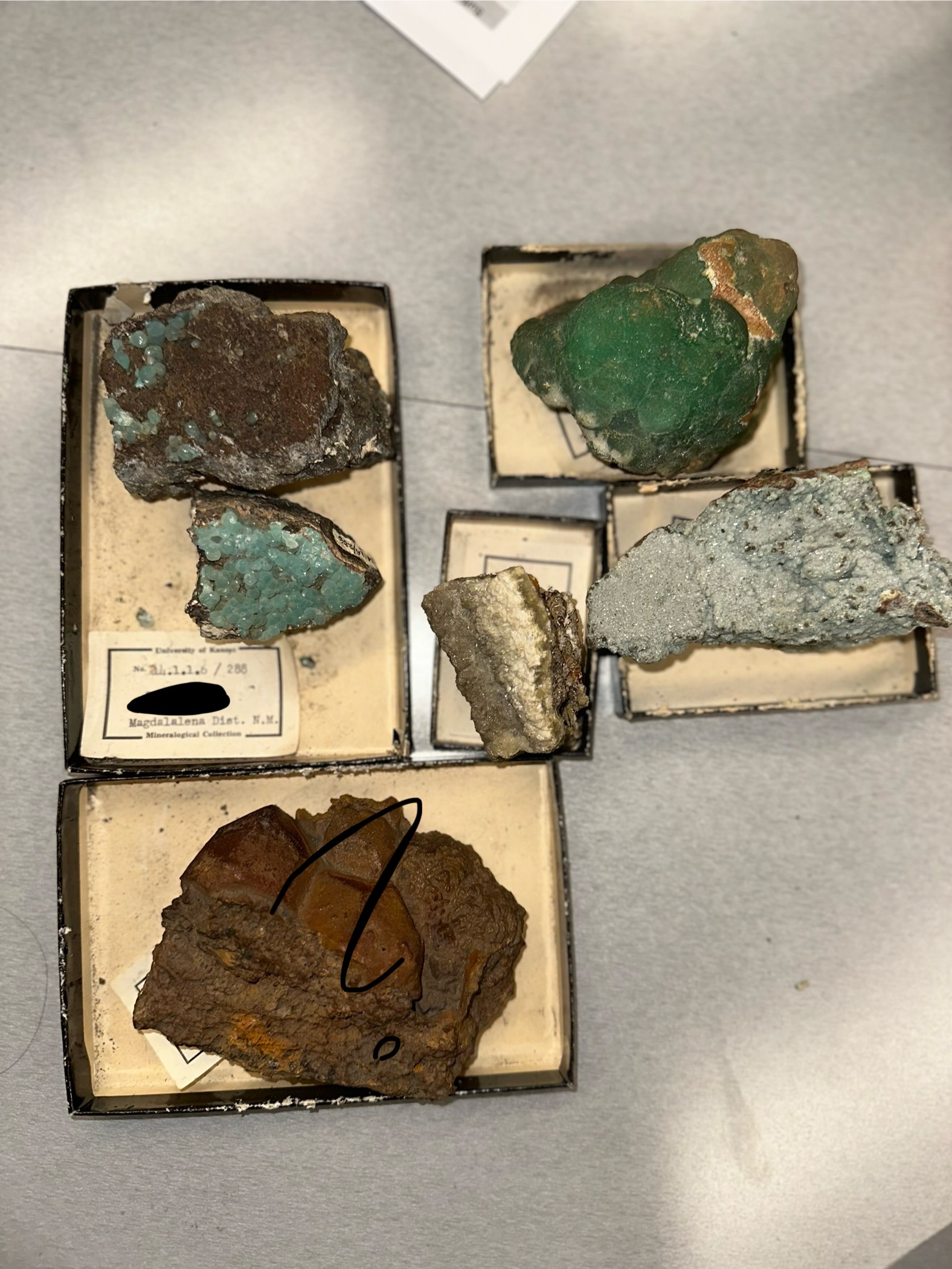
Color: Green, blue, pink, brown, gray.
Luster: Vitreous to pearly.
Hardness: 4–5.
Cleavage: Perfect rhombohedral {101̅1}.
Diagnostic: Zinc carbonate; botryoidal masses; effervesces in acid.
Smithsonite
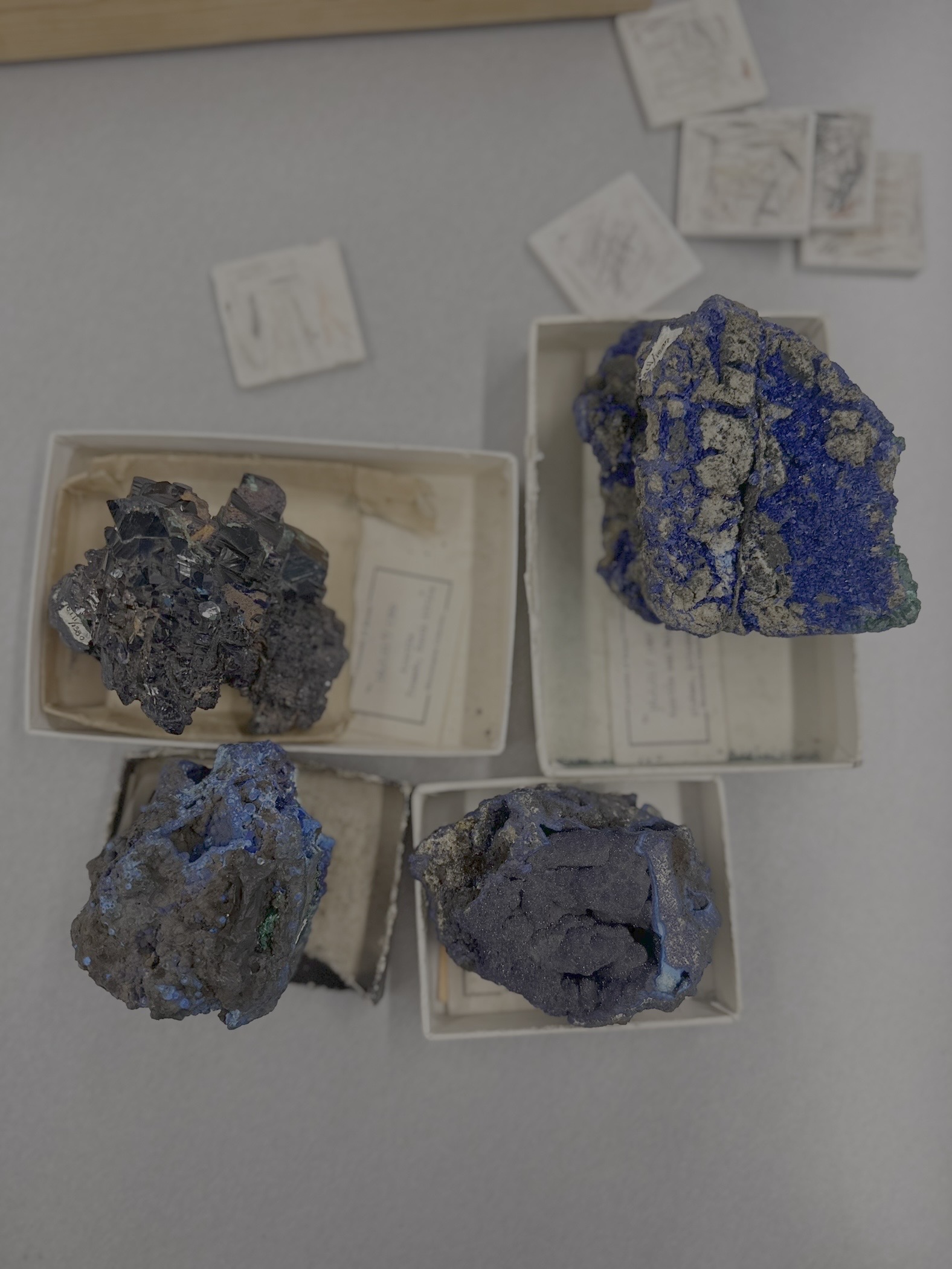
Color: Deep blue.
Luster: Vitreous.
Hardness: 3.5–4.
Cleavage: Perfect in one direction (rare).
Diagnostic: Blue copper carbonate; effervesces in acid; often with malachite.
Azurite
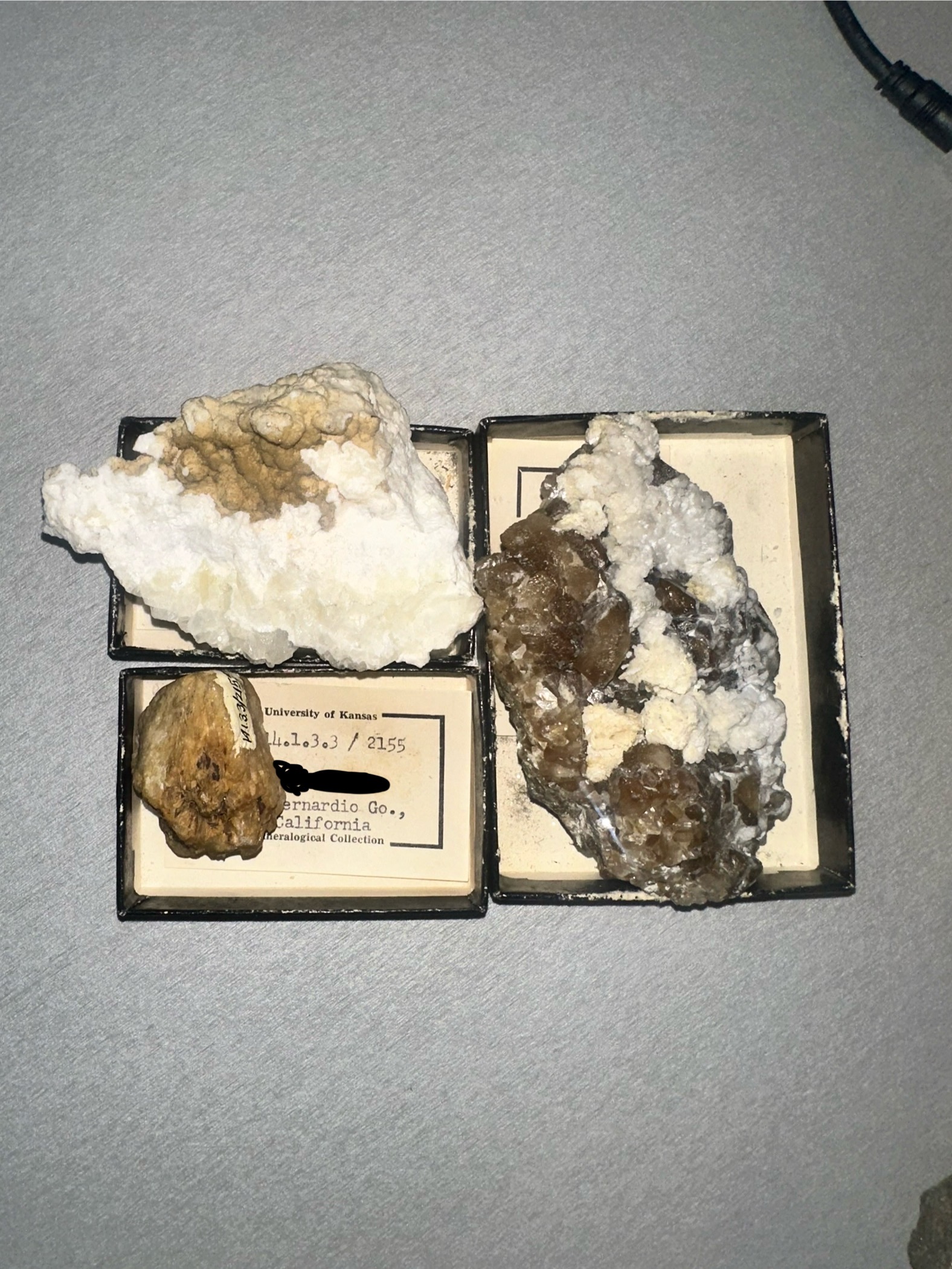
Color: Colorless, white, yellowish, greenish.
Luster: Vitreous.
Hardness: 3.5–4.
Cleavage: Perfect {110}.
Diagnostic: Strontium carbonate; radiating fibrous crystals.
Strontianite
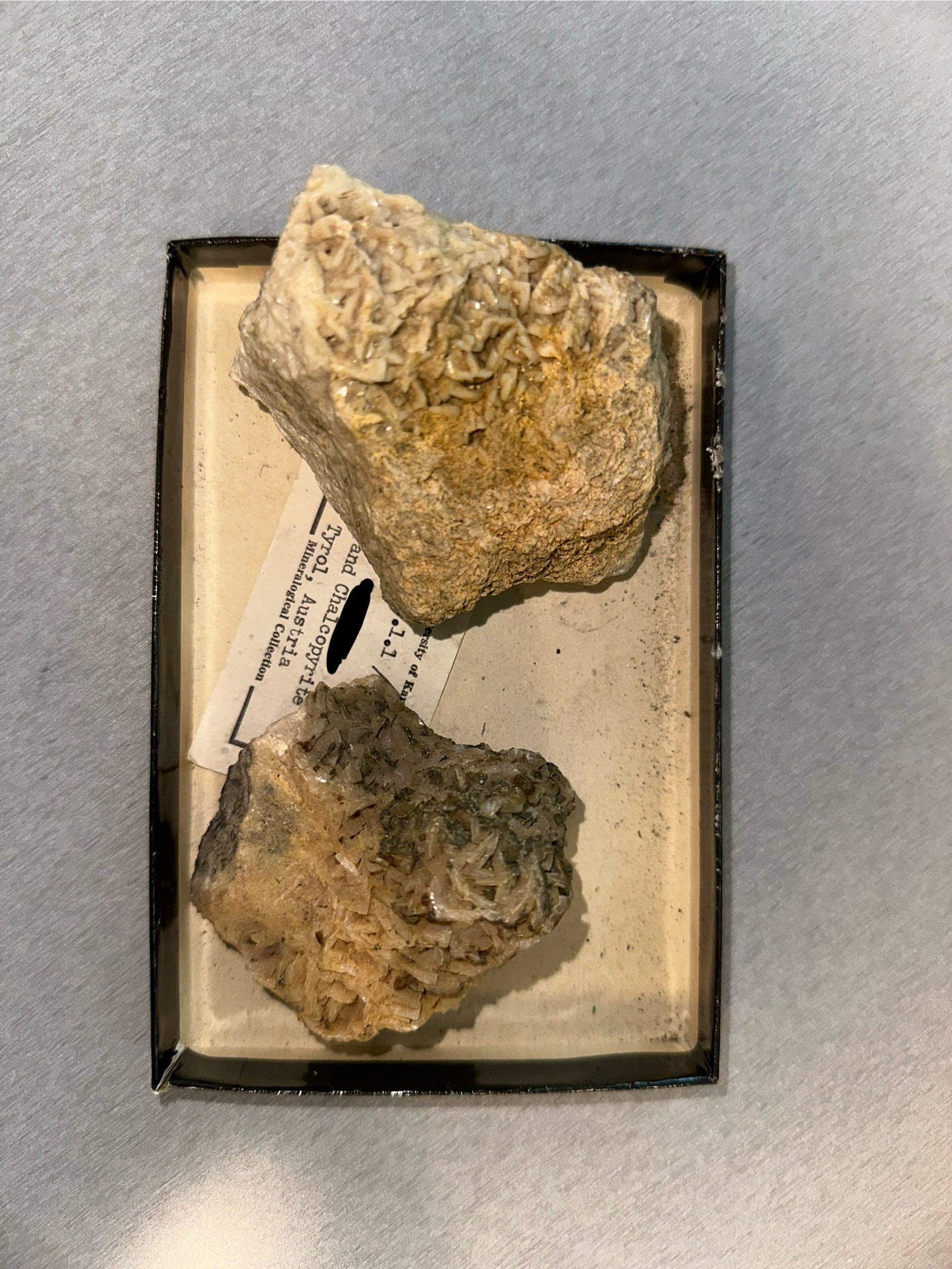
Color: Colorless, white, gray, pink.
Luster: Vitreous to pearly.
Hardness: 3.5–4.
Cleavage: Perfect rhombohedral {101̅1}.
Diagnostic: Effervesces weakly in cold acid but strongly when powdered; curved crystal faces common.
Dolomite